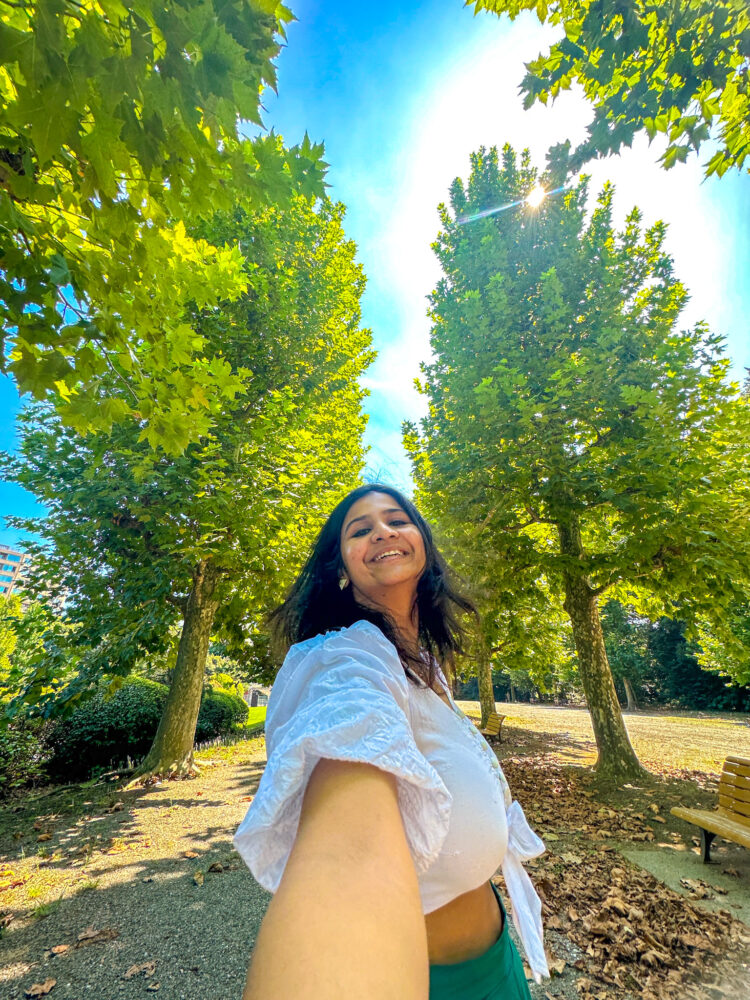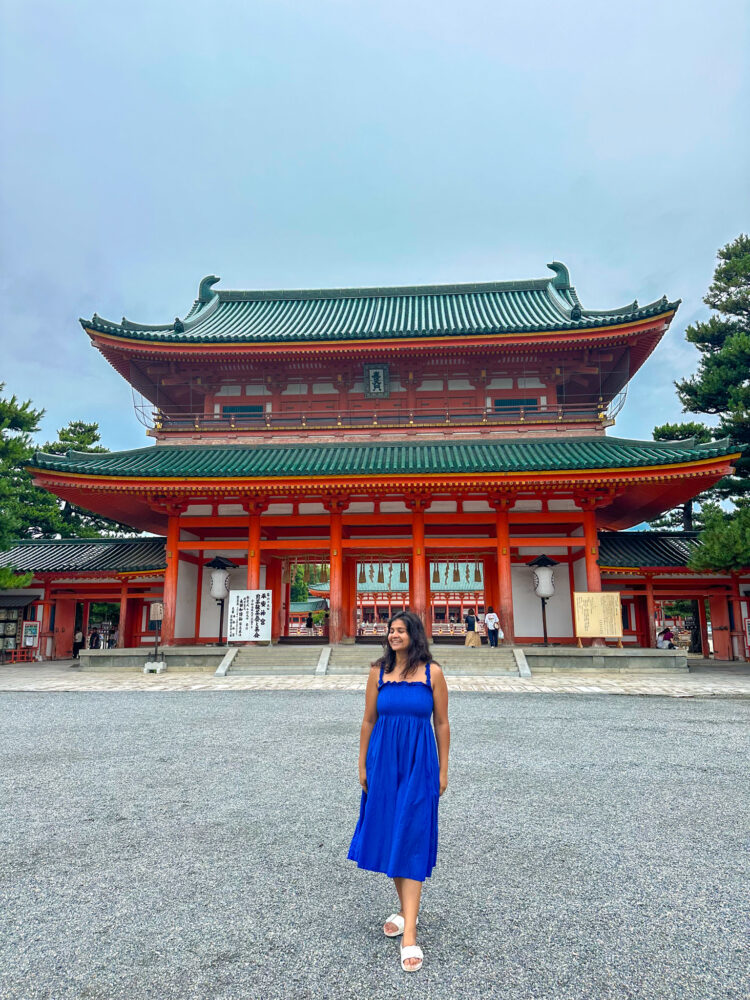Tokyo City guide
Introduction
Tokyo city is the capital of Japan and also the world’s most famous and heavily settled metropolis city. This vibrant Tokyo guide introduces you to its vibrant culture with outstanding discipline, hospitality, it also gives an ultimate abundance of shopping, entertainment and food options to its visitors. Also, Tokyo city includes the much of ancient history and culture that you can see by just taking a walking tour around. The main history that can be appreciated in the city is in Asakusa area, some excellent museums, historical shrines and gardens. This Tokyo guide also offers a relatively green area in the center of the city and also in a short distance with a train ride at its outskirts. In this blog there is a full itinerary of Tokyo guide and also the famous touristy places to visit here.
Central Tokyo guide
Tsukiji outer marke
This market contains a few blocks of wholesale and retail shops with restaurants amongst the crowded narrow lanes. In the Tokyo guide, it recommends this as the best place for fresh fishes and processed seafood. Tsukiji place is best visited if paired with sushi breakfast or lunch at some local restaurant here.
Timings: The shops here open early in the morning at 5:00 am to afternoon, well it depends on variety of shops. Some shops remain close on Wednesday and Sunday and national holidays are usually off.
Location: 4 Chome-13 Tsukiji, Chuo City, Tokyo 104-0045, Japan
Getting there: The Tsukiji Outer Market can be easily reached by a brief stroll from either Tsukiji Shijo Station on the Oedo Subway Line or Tsukiji Station on the Hibiya Subway Line. If you’re traveling by JR train, the nearest station is Shimbashi, and it takes approximately 20 minutes to walk from there to the market.
Akihabara
Akihabara is a place where you will find a lot of things related to anime and otaku goods. Also there are cute aesthetic cafes serving you food and coffee with interesting designs of the popular anime characters from pokemon to demon slayer. There are dozens of stores selling manga, anime stuffs, retro video games, figureins etc. Akihabara is also known as electronic hub as they offer everything from newest computer, cameras, TV, mobile phones to second hand products.
Timings: There is no particular time, you can visit any time of the day.
Location: Neighborhood in the Chiyoda ward of Tokyo, Japan
Getting there: Akihabara Station is a bustling transportation hub and is at a walking distance from many stations, offering services by the JR Yamanote Line, JR Keihin-Tohoku Line, JR Sobu Line, the Tsukuba Express, and the Hibiya Subway Line. Suehirocho Station, situated at the northern boundary of the area, connects to the Ginza Subway Line.
Koishikawa korakuen
Koishikawa korakuen is one of the most famous and oldest Japanese park in the central Tokyo. This is the most traditional Japanese garden and it attempts to reproduce the popular landscapes in miniature form using ponds, stones, man-made hills to replicate beautiful Japanese scenery. Koishikawa Korukuen is attractive throughout the year, especially at the end of November and start of December, it turns into vibrant shades of orange and red tones. The admission fee for this park is 300 yen.
Timings: This park is open for visitors from 9:00 am in the morning to 5:00 pm. and the entry is only allowed till 4:30. It is closed from 29 December to 1 January.
Location: 1 Chome-6-6 Koraku, Bunkyo City, Tokyo 112-0004, Japan.
Getting there: In short, Koishikawa Korakuen Park has two entrances. The east entrance is a 3-minute walk from Suidobashi Station on the JR Chuo Line (local, yellow trains only). The west entrance is a 5-10 minute walk from Iidabashi Station, which is serviced by the JR Chuo Line (local, yellow trains only), as well as the Tozai, Yurakucho, Namboku, and Oedo subway lines. Alternatively, you can reach the west entrance with a 10-minute walk from Korakuen Station, served by the Marunouchi and Namboku subway lines.
Hama Rikyu
A large attractive landscape garden which is situated in the middle of the Tokyo city’s hustle bustle namely Hama Rikyu should be in your Tokyo guide. This traditional style garden is located along side Tokyo bay which is located at contrast adjacent to the heavy skyscrapers of Shiodom district. Hama Rikyu has a gorgeous feature seawater pond which changes its level with the tides and an attractive tea house at the island where group of people can enjoy and rest with the scenic view. This park is enthralling all over the world and the admission fees for this park is 300 yen.
Timings: This park is open for visitors from 9:00 am in the morning to 5:00 pm. and the entry is only allowed till 4:30. It is closed from 29 December to 1 January.
Location: 1 Hamarikyūteien, Chuo City, Tokyo 104-0046, Japan
Getting there: In summary, Hama Rikyu Garden is easily accessible by a 10-15 minute walk from JR Shimbashi Station or a 5-10 minute walk from Shiodome Station (Oedo Subway Line and Yurikamome elevated train). If you’re coming from Asakusa, you can take Tokyo Water Buses to reach Hama Rikyu. This scenic route takes approximately 35 minutes and costs 1040 yen for a one-way ticket, which also includes admission to the garden. But please note that these boats only go in one direction, from Asakusa to Hama Rikyu, and do not stop at Hama Rikyu on the return trip. Boarding boats at Hama Rikyu is not currently possible; you can only get off there.
Imperial East garden
This is again a garden which is located in the middle of the city. Even though it is a part of the inner palace property, it is still available for the public. These areas comprise the former locations of the innermost defense circles of Edo Castle, known as the honmaru (“main circle”) and ninomaru (“secondary circle”). While the primary structures no longer stand today, the moats, walls, entrance gates, and numerous guardhouses have been preserved.
Timing: It has different times for different months, like, 1st March to14th April, the timings are morning 9 to 5 in the evening. From April 15 to August, the timing is till 6 in the evening. In October the timing is till 4:30 in evening and from November to February the timing is till 4 in the evening. The entry closes half an hour before the exit time.
Location: 1-1 Chiyoda, Chiyoda City, Tokyo 100-8111, Japan
Getting there: You can easily access the Otemon entrance to the East Gardens by taking a brief stroll from Otemachi Station, which is served by the Chiyoda, Tozai, Marunouchi, Hanzomon, and Mita subway lines. Alternatively, you can reach it with a 10-15 minute walk from Tokyo Station.
Imperial palace
A short walk from the Tokyo station there is a residence of Japan’s imperial family known as Imperial palace. The current palace is located on the former site of Edo palace, a large park there which is covered with massive stone walls and wide channels are dug out to keep the enemy away. The inner grounds of the palace are not open for the public but visitors can visit only on 2 days of the year in January and February. We can even witness the sight of the Imperial family as they make public appearance on those days.
Timings: It is open from 9:00 am to 4:30 pm in the evening and it remains close on Monday, Fridays and New years.
Location: 1-1 Chiyoda, Chiyoda City, Tokyo 100-8111, Japan
Getting there: It is just a few minutes walk from Tokyo station.
Ginza
Ginza is the most upmarket area of the city which has restaurants, entertainment zones and up class shopping centers. It also features art galleries, boutiques, departmental stores, night clubs and cafes. This square meter district is one of the most expensive real estate in Japan. The most pleasant time to visit this area is on weekend afternoon when the crowd is less.
Timings: Ginza district is open everyday of the week. The road will be closed from 12:00 PM to 6:00 PM (or until 5:00 PM from October to March).
Location: Chuo City, Tokyo 104-0061, Japan
Getting there: For easy access to the Ginza district, the most convenient stations to use are Ginza Station, which is serviced by the Hibiya, Marunouchi, and Ginza Subway Lines, and Yurakucho Station, which is served by the JR Yamanote Line, JR Keihin-Tohoku Line, and Yurakucho Subway Line.
Nihonbashi
Nihonbashi is a district in Tokyo which is in the north of Ginza. The bridge after which this district got its name comes under the The bridge, from which the district derives its name, has served as the starting point (kilometer zero marker) for Japan’s national highway network since the early Edo Period. Numerous shops with histories spanning centuries continue to thrive in the district to this day, offering delightful opportunities for leisurely walks.
Timings: It is open daily from 10:00 am to 7:30 pm.
Location: 1-4-1 Nihonbashi-Muromachi, Chuo, Tokyo
Getting there: You can reach the heart of the Nihonbashi district by using either Nihonbashi Station, which is served by the Ginza, Tozai, and Asakusa subway lines, or Mitsukoshimae Station, connected to the Hanzomon and Ginza subway lines. Additionally, you can easily access Nihonbashi by taking a 5-10 minute walk from the Nihonbashi Exit of Tokyo Station
Tsukishima
Tsukishima is a man made island in Tokyo bay. This island was made 100 years ago using soil dredge technique from the canal during the making of the shipping canal. Well now there are many high rise buildings here but you can still few remains of Tsukishima island, especially from the Sumiyoshi shrine. Tsukishima is also famous for Monjayaki a type of runny pancake made with seafood, vegetables, meat and a batter to mix.
Timings: You can visit anytime of the day and week.
Location: It is located in the Chuo city, Tokyo
Getting there: Tsukishima Station is accessible via the Oedo and Yurakucho subway lines. To get there from Tokyo Station, you can take the JR Yamanote Line to Yurakucho and then transfer to the Yurakucho Subway Line. Alternatively, you can travel from Shinjuku to Tsukishima on the Oedo Subway Line in the direction of Roppongi.
Yurakucho
Yurakucho provides abundant shopping and dining choices while still retaining a friendly and laid-back ambiance compared to its more upscale neighboring areas. Some parts of Yurakucho maintain a delightful, traditional neighborhood atmosphere. One of the captivating features of Yurakucho is its vibrant restaurant district nestled beneath the elevated train tracks of the JR Yamanote Line. Numerous dining establishments situated beneath the train tracks are genuine izakayas and yakitori restaurants, offering the opportunity to enjoy a refreshing beer and some delicious casual cuisine.
Timings: You can visit this street anytime but the fun begins after the dawn.
Location: Yurakucho district is located one station to the south of Tokyo Station on the JR Yamanote Line. It is closely connected to the neighboring Ginza district.
Getting there: The Yurakucho District encompasses Yurakucho Station, which is served by the JR Yamanote Line, the JR Keihin-Tohoku Line, and the Yurakucho Subway Line. Additionally, it can be reached from Ginza Station on the Marunouchi and Hibiya subway lines, as well as Hibiya Station on the Hibiya Subway Line.
Yasukuni shrine
This Yasukuni shrine is a Shinto shrine located in the central Tokyo which is memorial for Japan’s war dead. This shrines remembers all the dead ones who sacrificed everything to save their country, which led to the foundation of peaceful Japan. Well they have all the written records of the name, number, family and other information of those involved in all the wars like first and second sino-Japanese war, Manchurian incident, first world war, Russo-Japanese war and the pacific war. If you visit this place then you’ll be experiencing the actual archaic facts. There is no admission fees for this shrine, while the museum is extravagant to visit and it cost 1000 yen as entry fee and is open till 4:30 in evening.
Timings: This Shrine never takes a day off, it opens daily from morning 6 to 6 in the evening. Although in the month of November to February this opens only till 5 pm.
Location: 3 Chome-1-1 Kudankita, Chiyoda City, Tokyo 102-0073, Japan
Getting there: The Yasukuni Shrine can be easily reached by taking a brief stroll from Kudanshita Station, which is serviced by the Hanzomon, Tozai, and Shinjuku subway lines.
Tokyo dome city
Tokyo dome city is a breathing spell complex which is located in the central Tokyo, it comprises of baseball stadium, amusement park, restaurants, spa’s and a variety of shopping centers. This complex also has Tokyo dome hotel and is named after the former baseball stadium, namely Koishikawa Korakuen, a nearby Japanese landscape garden.
Timings: It is opened everyday in the week except weekends. The timings are from 10 am to 9 pm.
Location: 1 Chome-3-61 Koraku, Bunkyo City, Tokyo 112-0004, Japan
Getting there: The most convenient way to reach Tokyo Dome City is to use Suidobashi Station, which is served by JR Chuo Line (only the yellow local trains stop here). Alternatively, you can access it from Korakuen Station on the Marunouchi and Namboku subway lines, or from the nearby Kasuga Station on the Oedo and Mita subway lines.
Kanda
Kanda, situated northeast of the Tokyo Imperial Palace, is a city district in Tokyo. While it may not be a primary tourist destination, it represents a typical local district characterized by residential neighborhoods and the presence of numerous universities. Kanda has a historical association with academia and continues to be a hub for young individuals. It was historically home to a Confucian school, and a remnant of this heritage is the Yushima Seido, a shrine honoring the renowned Chinese philosopher.
Timings: You can visit anytime of the day and week. Timing depends upon the touristy places you are visiting.
Location: It is a city in Tokyo which has many places of interest to explore.
Getting there: Ochanomizu Station, conveniently served by the JR Chuo Line, JR Sobu Line, and Marunouchi Subway Line, is the nearest station to many points of interest. It is accessible from Tokyo Station via the JR Chuo Line and from Shinjuku Station via the same line.
Marunouchi
The station structure located on the Marunouchi side is a notable red brick building, originally constructed in 1914. It underwent renovations in 2012 to restore its pre-war aesthetic. In addition to providing transportation services, this building houses a hotel, various dining establishments, and an art gallery. On the opposite side of the station, known as the Yaesu Side, the architecture is more contemporary and showcases the Gran Roof, a large and well-lit roof positioned over the station entrances, surrounded by towering skyscrapers.
Timings: You can anytime of the day and the days and timing depends upon the places of interest you are visiting.
Location: To the east, Marunouchi is adjacent to Tokyo Station, which ranks among Japan’s busiest railway stations and serves as the terminus for several Shinkansen (bullet train) lines.
Getting there: Marunouchi is situated on the western side of Tokyo Station, a major transportation hub with multiple Shinkansen lines, the JR Yamanote Line, and various other urban and suburban train and subway connections. In close proximity, you’ll also find Otemachi Station, which offers access to five different subway lines.
State guest house
The Tokyo State Guest House, situated within the Akasaka Imperial Estate in the heart of Tokyo, is one of two state guest houses maintained by the Japanese government, the other being located in Kyoto. Its primary purpose is to provide accommodation for world leaders, diplomats, and distinguished guests during their visits to Japan. When not in active use, parts of this majestic estate are accessible to the public, allowing visitors to experience some of its lavish rooms, beautiful gardens, and the traditional Japanese-style annex.
Timings: The visiting hours is from 10 in the morning to 4-4:30 in evening. As there are many places inside the State guest house and it is closed on Wednesday.
Location: 2 Chome-1-1 Motoakasaka, Minato City, Tokyo 107-0051, Japan
Getting there: The Tokyo State Guest House is conveniently situated just a short 5-minute walk from Yotsuya Station. You can access Yotsuya Station via the JR Chuo Line from Tokyo Station or Shinjuku Station, as well as through the Marunouchi and Namboku subway lines.
This was all about the central Tokyo guide. This Tokyo guide will help out how to divide your trip according to your convenience and this will lead to not wasting time in this beautiful technological country.
Northern Tokyo guide
Tokyo national museum
The Tokyo National Museum stands as the oldest and most extensive among Japan’s premier national museums, alongside the Kyoto National Museum, the Nara National Museum, and the Kyushu National Museum. Within the Tokyo National Museum resides one of the nation’s most comprehensive and remarkable collections of art and archaeological artifacts. This collection comprises over 100,000 individual items, nearly a hundred of which are designated as national treasures. The admission fee is 1000 yen and during special exhibits may cost 1000-1500 yen.
Timings: Visitors can visit between 9:30 to 7:00 and on Fridays and Saturdays it is open till 9 pm. It is closed on Mondays and national holidays and special exhibits can have different opening times.
Location: 13-9 Uenokoen, Taito City, Tokyo 110-8712, Japan
Getting there: The Tokyo National Museum can be found within Ueno Park, just a short 5-10 minute stroll from Ueno Station.
Tokyo skytree
The Tokyo skytree is the tallest and was the second most biggest building before completion. It is the landmark building which is also a television broadcasting tower, it is in the west of Tokyo Situated in Sumida City Ward, not too far from Asakusa, it serves as the focal point of Tokyo Skytree Town. In the basement there is an aquarium and a shopping center with two observation decks. The admission fees are cheaper if you do it in advance, the actual cost is 2100 for weekdays and 2300 on weekend for single observation whereas for double observation it is 3100 on weekday and 3400 on weekend. Whilst the advance booking will save a lot of money.
Timings: Visitors can visit this place between 10 am to 8 pm and there are no closing days.
Location: 1 Chome-1-2 Oshiage, Sumida City, Tokyo 131-0045, Japan
Getting there: To access Tokyo Skytree, you can enter from the 4th floor of Tokyo Skytree Town, which spans the area between Tokyo Skytree Station (formerly known as Narihirabashi Station) on the Tobu Isesaki Line and Oshiage Station on the Asakusa Subway Line, Hanzomon Subway Line, and Keisei Oshiage Line. Another option is a minute walk across the Sumida River from Asakusa. Tokyo Skytree is also reachable by direct bus services from Ueno Station, Tokyo Disney Resort, and Haneda Airport.
Asakusa
Asakusa, located in Tokyo’s “shitamachi” or “low city,” is a district that retains the ambiance of Tokyo’s bygone eras. The focal point of Asakusa is Sensoji, a highly frequented Buddhist temple with a history dating back to the 7th century. To reach the temple, visitors take a stroll down Nakamise, a historic shopping street that has been offering traditional local snacks and tourist mementos to temple-goers for generations. It is known for its underground shopping adventure as this is the only one in Japan.
Timings: You can visit anytime of the day and week but if you are visiting particular place then there are time and days mentioned.
Location: Taito City, Tokyo 111-0032, Japan
Getting there: Asakusa is conveniently connected by the Ginza Subway Line, Asakusa Subway Line, Tsukuba Express, and Tobu Railway, making it easily accessible by various modes of transportation, including the Tokyo Water Bus.
Sensoji temple
Sensoji, situated in Asakusa, stands as one of Tokyo’s most vibrant and beloved Buddhist temples. A bustling shopping street, Nakamise, extends for over 200 meters from the outer gate to the temple’s second gate, Hozomon. Throughout the year, a range of events animates the Sensoji Temple area. The largest among them is the Sanja Matsuri, the annual festival of the Asakusa Shrine, celebrated in May. Additionally, there’s the Asakusa Samba Carnival in August and the Hagoita-ichi, where intricately decorated wooden paddles used in the traditional game of hanetsuki are sold.
Timings: It does not remain close on any day and you can visit between 10 am to 5 pm.
Location: 2 Chome-3-1 Asakusa, Taito City, Tokyo 111-0032, Japan
Getting there: Sensoji Temple is just a short walk from Asakusa Station, conveniently connected by the Ginza Subway Line, Asakusa Subway Line, and Tobu Railway.
Edo Tokyo
Edo Tokyo: The Edo museum is located in the Ryogoku district in a uniquely looking building. This is the place where people can learn much of Tokyo’s history and culture in an interesting and interactive way, because here the permanent exhibitions exhibits vividly illustrated history of Edo period. This exhibition covers most of everything till the relatively recent decades. Through numerous models of town, figure ins and life-sized figures, this museum explains most of the part about how the towns were constructed earlier.
Timings: Well this is closed till 2025 as it is under renovations.
Located: 1 Chome-4-1 Yokoami, Sumida City, Tokyo 130-0015, Japan
Getting there: This place is just or even less than 5 minutes walk from Ryogoku station.
Rikugien
Rikugien is also the most known beautiful landscape garden in whole Tokyo and the meaning of it is ‘six poem garden’. This was built around in the 1700 for the 5th Tokugawa shogun. In the autumn season, maple tree gives the most admirable view of autumn colors, that is why this garden is highly considered during this time. This garden is situated in the middle of the city covered with man made hills and forested areas. This Rikugien garden makes sure that every spot here is unimaginable. The entry fees for strolling and experiencing is 300 yen.
Timings: You can visit this place from 9 in the morning to 5 in the evening and the entry is only till 4:30. There is also an evening light ups during autumn and cherry blossom season which is until 9 pm. Although it remains closed from 29th December to 1st January.
Location: 6 Chome-16-3 Honkomagome, Bunkyo City, Tokyo 113-0021, Japan
Getting there: The primary entrance gate to Rikugien is situated in the eastern corner of the park, approximately a 5-10 minute walk south of Komagome Station on the JR Yamanote Line or Namboku Subway Line. The more accessible Someimon Gate is not generally open to the public, except for certain periods in autumn and spring.
Ueno park
The Ueno park is a large public park in central Tokyo. The park grounds were once part of Kaneiji temple, which used to be the most wealthiest and largest temple in Tokyo. This was also a family temple of the ruling party Tokugawa clan during the Edo period. Today Ueno park is famous in the listing of Tokyo guide for all the museums which are found on this ground Like, Tokyo national museum, national museum for western art, Tokyo metropolitan art museum, national science museum. It is also the first zoological garden in Tokyo.
Timings: Visitors are allowed to visit this place between 5 am to 11pm.
Location: Uenokoen, Taito City, Tokyo 110-0007, Japan
Getting there: Ueno is nearest to the JR Ueno station and the easiest exits are provided by the park exit.
Tokyo Solamachi
It is the largest shopping, entertainment and dinner complex which is situated at the basement of the Tokyo Skytree. It is said that this place is worth the visit because of 300 plus stores and restaurants in the basement and with no largest tower of Tokyo above. Solamachi also has unique pieces of offering in goods like salt from all over the world and Japan, food samples and Tokyo’s traditional crafts. There is an entire floor for souvenirs, character goods, interiors products and snacks which usually excites foreign visitors.
Timings: The timings to visit the shops is from morning 10 am to 9 pm. whilst to visit the restaurant the timings are from 11 am to 11 pm.
Location: 1 Chome-1-2 Oshiage, Sumida City, Tokyo 131-0045, Japan
Getting there: Tokyo Solamachi is conveniently located between Tokyo Skytree Station on the Tobu Isesaki Line, also known as the Tokyo Skytree Line, and Oshiage Station, which serves the Asakusa Subway Line, Hanzomon Subway Line, and Keisei Oshiage Line. Additionally, it’s a short walk across the Sumida River from Asakusa, taking about 20 minutes. Access to Tokyo Skytree is also possible through direct buses from Ueno Station, Tokyo Disney Resort, and Haneda Airport. These buses provide a convenient option for travelers coming from various parts of the city.
Yanaka
Yanaka stands as one of the rare areas in Tokyo that retains the shitamachi vibe, a traditional old town feel that harkens back to earlier eras of Tokyo. This district is imbued with a sense of nostalgia and possesses a quaint, rustic allure. The shopping avenue that epitomizes the shitamachi essence of the Yanaka District is a bustling hub, hosting a variety of stores. These shops offer an array of items, including groceries, essential goods, clothing, and toys, reflecting the traditional local lifestyle.
Timings: Visitors can visit this place from 10 in the morning to 6 in the evening as most of the shops open in this period, also most of the shops are closed on Monday.
Location: 3 Chome-13-1 Yanaka, Taito City, Tokyo 110-0001, Japan
Getting there: From Nippori Station, accessible via the JR Yamanote, JR Keihin-Tohoku, and Keisei Lines, Yanaka Cemetery is just a 3-minute walk, while the lively Yanaka Ginza is about 5-10 minutes to the west. Alternatively, from Sendagi Subway Station on the Chiyoda Line, Yanaka Ginza is a quick 5-minute walk, and Yanaka Cemetery is 10 minutes to the east. For visitors at Ueno Park, a 15-minute stroll north from the Tokyo National Museum leads to Yanaka Cemetery, with Yanaka Ginza just an additional 10 minutes away. This route beautifully contrasts the area’s serene and vibrant sides.
Koishikawa Botanical Garden
This botanical affiliated with the esteemed Tokyo University, showcases and conserves several thousand species of trees and plants. This garden, renowned for its exquisite Japanese landscape design, is a delightful and intriguing location in Tokyo for cherry blossom sightseeing. Its appeal is enhanced by the fact that it is less crowded compared to other popular hamami spots and boasts a diverse array of cherry tree types.
Timings: To visit this beautiful garden the timings are 9 am to 4:30 pm and is closed on Monday
Location: 3 Chome-7-1 Hakusan, Bunkyo City, Tokyo 112-0001, Japan
Getting there: Koishikawa Botanical Garden can be reached with a 10-15 minute stroll from either Myogadani Station, which is on the Marunouchi Subway Line, or Hakusan Station on the Mita Subway Line.
Sumida Aquarium
The Sumida Aquarium is a key highlight of Tokyo Skytree Town, is an attractively designed, contemporary aquarium situated on the 5th and 6th floors of Tokyo Solamachi. This shopping and entertainment center at the base of Tokyo Skytree hosts the aquarium, which is home to over 10,000 marine creatures. Its most notable feature is a massive 350,000-liter indoor tank, the biggest of its kind in Japan, showcasing a variety of penguins and several fur seals. The admission fees of this aquarium is 2300 yen.
Timings: On weekdays it is open from 10 am to 8 pm and on weekends the timings are from 9 am to 9 pm.
Location: Japan, 131-0045 Tokyo, Sumida City, Oshiage, 1 Chome−1−2
Getting there: The Sumida Aquarium’s entrance is located on the 5th floor of Tokyo Skytree Town, spanning between Tokyo Skytree Station on the Tobu Isesaki Line and Oshiage Station, which services the Asakusa Subway Line, Hanzomon Subway Line, and Keisei Oshiage Line. Alternatively, it’s a 20-minute walk from Asakusa, across the Sumida River. Tokyo Skytree is also accessible via direct buses from Ueno Station, Tokyo Disney Resort, and Haneda Airport.
Ameyoko
“Ameyoko” is an abbreviation of “Ameya Yokocho,” which translates to “candy store alley,” reflecting its history as a place where candy was commonly sold. Nowadays, Ameyoko is known for a diverse range of products including clothing, bags, cosmetics, fresh seafood, dried goods, and spices. The operating hours and days off vary among the individual shops in the area.
Timings: Most shops usually open their doors at around 10:00 in the morning and shut down by 20:00 in the evening. Additionally, a number of stores observe their day off on certain Wednesdays.
Location: 6 Chome-10 Ueno, Taito City, Tokyo 110-0005, Japan
Getting there: Ameyoko shopping street stretches from Ueno to Okachimachi Station, paralleling the train tracks of both the JR Yamanote Line and JR Keihin-Tohoku Line. Additionally, it’s conveniently reachable with a brief stroll from Ueno-Okachimachi Station on the Oedo Subway Line.
Sumida Hokusai Museum
The Sumida Hokusai Museum is devoted to the celebrated ukiyo-e artist, Katsushika Hokusai, often simply known as Hokusai. Its permanent exhibit, housed in a compact fascinating room on the fourth floor, offers a rich array of art and insights. The museum’s third and fourth floors allocate more room for changing, temporary exhibits, for which an extra entry fee is required. These areas provide an opportunity to view more of Hokusai’s original works in greater detail.
Timings: It is opened from 9:30 in the morning to 5:30 in the evening. It is closed on Mondays and also from 29th December to 1st January.
Location: 2 Chome-7-2 Kamezawa, Sumida City, Tokyo 130-0014, Japan
Getting there: Situated in Tokyo’s Ryogoku district, the Sumida Hokusai Museum is conveniently positioned a mere 5-10 minute walk from Ryogoku Station, which is served by both the JR Sobu Line and the Oedo Subway Line.
Ikebukuro
Ikebukuro, located near the northwestern edge of Tokyo’s Yamanote loop line, is one of the city’s several central areas. At its heart lies Ikebukuro Station, a bustling junction for three subway lines and numerous city and regional train routes. This station is among Japan’s most heavily trafficked, serving more than a million passengers daily.
Timings: There is no particular visiting time, you can visit anytime of the day.
Location: 1 Chome Minamiikebukuro, Toshima City, Tokyo 171-0022, Japan
Getting there: Ikebukuro Station is a key stop on the JR Yamanote Line and is additionally served by several other lines, including the JR Saikyo Line, JR Shonan Shinjuku Line, Tobu Tojo Line, Seibu Ikebukuro Line, as well as the Marunouchi, Yurakucho, and Fukutoshin subway lines.
Kappabashi Street
Kappabashi Street, nestled between Ueno and Asakusa, is a retail haven hosting numerous shops that cater to the needs of restaurant owners, barring fresh food. This street is a treasure trove for those seeking specialized items such as dishes, cookware, stoves, tables, chairs, signage, lanterns, and more. Additionally, it features several stores offering plastic and wax food replicas, commonly seen in restaurant display windows.
Timings: The opening hours of this street are from 10 am to 5 pm, as most of the stores opened around this time.
Location: 3 Chome-18-2 Matsugaya, Taito City, Tokyo 110-0036, Japan
Getting there: The nearest subway stop is Tawaramachi Station on the Ginza Line, just a brief stroll from the location. Alternatively, it’s about a 10-minute walk from Sensoji Temple in Asakusa.
Ryogoku
Ryogoku, known in Japanese as the epicenter of sumo wrestling. Situated in Tokyo, this area is home to the sumo arena, numerous sumo training stables, chanko restaurants, and a variety of sumo-related sites. It has a long history of hosting sumo events. Additionally, within a comfortable walking distance from Ryogoku Station and the sumo stadium, visitors can explore several other attractions, such as the impressive Edo-Tokyo Museum, which focuses on Tokyo’s history and culture, the Sumida Hokusai Museum, renowned for its ukiyo-e exhibits, and Yokoamicho Park.
Timings: There is no time zone to visit here.
Location: A district in Tokyo
Getting there: Take the JR Sobu Line or Oedo Subway Line to Ryogoku Station.
Sugamo
Sugamo is located along Tokyo’s Yamanote Line, is a shopping area known for its appeal to senior citizens. The district’s beloved Jizo Dori shopping street, stretching 800 meters, is endearingly referred to as the “Old Ladies’ Harajuku,” playfully contrasting it with the Harajuku district, which is recognized as a prime spot for youthful fashion and shopping in Japan.
Timings: The shops here open from 10 in the morning to 6 in the evening
Location: 1 Chome Sugamo, Toshima City, Tokyo, Japan
Getting there: The Jizo Dori shopping street starts just a five-minute walk to the northwest from Sugamo Station, which is served by both the JR Yamanote Line and the Mita Subway Line.
Western Tokyo guide
Shibuya
Shibuya, while being one of Tokyo’s 23 city wards, is commonly known for the bustling shopping and entertainment zone surrounding Shibuya Station. It stands as one of Tokyo’s most vibrant and hectic areas, brimming with a variety of shops, eateries, and nightclubs. This district attracts a multitude of visitors daily, drawn to its lively atmosphere.
Timing: There is no particular time but the best time to visit is in evening.
Location: Shibuya City, Tokyo, Japan
Getting there: Shibuya Station ranks among Tokyo’s most frequented transport hubs. It accommodates a wide array of lines including the JR Yamanote, JR Saikyo, JR Shonan Shinjuku, Hanzomon Subway, Ginza Subway, Fukutoshin Subway, Tokyu Toyoko, Tokyu Den-Entoshi, and Keio Inokashira Lines. Additionally, a significant number of Narita Express trains also serve this station.
Shinjuku
Shinjuku, one of Tokyo’s 23 city wards, is often associated primarily with the vast area of entertainment, business, and shopping that surrounds Shinjuku Station. This station holds the distinction of being the busiest in the world, catering to over two million passengers on a daily basis.
Timings: There is no particular time but the best time to visit is in evening.
Location: 3 Chome-38-1 Shinjuku, Shinjuku City, Tokyo 160-0022, Japan
Getting there: Shinjuku Station, the most heavily trafficked railway station in Japan, is a hub for approximately twelve different railway lines, among which is the JR Yamanote Line.
Meiji Shrine
Meiji Shrine honors the deified spirits of Emperor Meiji and Empress Shoken, his consort. The entrance to the shrine is signified by a large Tori gate, leading into a peaceful forest setting, a stark contrast to the bustling city ambiance. The forest at Meiji Jingu, comprising around 100,000 trees, was established during the construction of the shrine, with donations of trees coming from various parts of the country.
Timings: Timings are from sunrise to sunset
Location: 1-1 Yoyogikamizonocho, Shibuya City, Tokyo 151-8557, Japan
Getting there: The pathway leading to Meiji Shrine begins just a short distance from Harajuku Station on the JR Yamanote Line, or from Meiji-jingu-mae Station, which is served by both the Chiyoda and Fukutoshin subway lines.
Shinjuku Gyoen
Shinjuku is a very popular and the largest garden in whole Tokyo, as it is a national park. It is an exceptional and a spacious lawn, meandering walking paths, serene beauty and a perfect escape from the Urban hustle in the middle of the city. Shinjuku Gyoen’s beauty turns even more admirable during the time of the cherry blossom period.
Timings: There are different time zones depending upon the month visitors are visiting. The timings during this month is from 9 am to 6 pm (March 15 to June 30 and August 21 to September 30). From July 1 to August 20 the visiting time is till 7 pm and in the month of October 1 to March 14 the timing is only until 4:30 pm.
Location: 11 Naitomachi, Shinjuku City, Tokyo 160-0014, Japan
Getting there: Shinjuku Gyoen has three gates: Shinjuku Gate, a 10-minute walk from JR Shinjuku Station’s “New South Exit” or 5 minutes from Shinjukugyoenmae Station on the Marunouchi Subway Line; Okido Gate, also 5 minutes from Shinjukugyoenmae Station; and Sendagaya Gate, 5 minutes from JR Sendagaya Station on the Chuo/Sobu Line.
Harajuku
Harajuku lane is situated around the Tokyo’s Harajuku station and is between Shibuya and Shinjuku on Yamanote line. Being in the middle of two of the well-known streets is enough to be on the list of Tokyo guides. This area is a famous hub for all the teenage crowd, unique variety of fashion styles for them. But they also provide a diverse collection for adults and also have a few historical sites. The main interest here is Takeshita Dori street and the other side streets where all the trendy stalls, crepe stalls, fashion boutiques are lined up.
Timings: There is particular timings you can visit this area anytime but make sure that all the touristy places are open.
Location: 1 Chome Jingumae, Shibuya City, Tokyo 150-0001, Japan
Getting there: Harajuku Station, located on the JR Yamanote Line, is positioned two stops south of Shinjuku and one stop north of Shibuya, with a fare of 150 yen from both stations. Close to Harajuku Station is Meijijingu-mae Station, accessible via the Chiyoda and Fukutoshin subway lines. Further, at the eastern tip of Omotesando lies Omotesando Station, which accommodates the Chiyoda, Ginza, and Hanzomon subway lines.
Yoyogi park
Yoyogi park in Tokyo is the largest city park in the whole of Tokyo, featuring lawns, walking pathways, wide ponds and a tranquil beauty with forested area. There are a lot of picnic and outdoor spots here to spend some family time. Like all the other parts of Tokyo with cherry blossom spots, you’ll find these trees but comparatively less. Although, it is known for ginko trees which turn into golden in autumn period.
Timings: It is always open but the facility team has there own timings.
Location: 2-1 Yoyogikamizonocho, Shibuya City, Tokyo 151-0052, Japan
Getting there: Yoyogi Park is situated just a five-minute stroll from Harajuku Station, which is on the JR Yamanote Line, and it’s adjacent to Meiji Shrine.
Metropolitian government building
This Tokyo metropolitan building is situated in Shinjuky, is famous for its free observation deck, here many tourists visit to view the city from above. The view is decent and provides a good panoramic view of the city. This is a 243 meter tall building with 2 towers has an observation deck on each at 202 meter height. Lastly, you can see all the famous places from above under the favorable and clear weather.
Timings: The timings are from 9:30 am to 10 pm.
Location: 2 Chome-8-1 Nishishinjuku, Shinjuku City, Tokyo 163-8001, Japan
Getting there: Tocho-mae Station, which is on the Oedo Subway Line, can be found in the underground level of the Tokyo Metropolitan Government Building. Additionally, this building is a ten-minute walk away from the western exit of JR Shinjuku Station.
Nakano Broadway
Nakano Broadway is a renowned shopping complex in Tokyo known for its wide array of stores offering anime merchandise and idol-related products. Among its attractions are over a dozen small Mandarake stores that specialize in manga and anime collectibles. This shopping destination is conveniently located within a brief walking distance from Nakano Station, which is just a five-minute train ride away from Shinjuku.
Timings: The timings here depend upon the stores however the timings are from 12 pm to 8 pm.
Location: 5 Chome-52-15 Nakano, Nakano City, Tokyo 164-0001, Japan
Getting there: Nakano Broadway is a short 5-minute walk from Nakano Station, which is accessible via the JR Chuo Line (5 minutes, 170 yen from Shinjuku Station) and the Tozai Subway Line. The walk starts at the north exit of Nakano Station along the Nakano Sunmall shopping street.
Kagurazaka
Kagurazaka is a fashion and a dining district with sloping lanes in Tokyo near Lidabashi station. Kagurazaka boasts a notable French influence thanks to the presence of two nearby French schools. Within this district, you can discover a diverse array of French cafes and restaurants. Additionally, Kagurazaka offers a wealth of trendy and upscale Japanese dining establishments, including ryotei. Many of these eateries are hidden along the side streets branching off from the main slope.
Timings: There is no particular time as it depends upon the stores.
Location: It is a district in Western Tokyo.
Getting there: You can start your walk down Kagurazaka slope from Iidabashi Station, which is well-connected with various train lines. As you descend, you’ll encounter Ushigome-Kagurazaka Station on the Oedo Subway Line and Kagurazaka Station on the Tozai Subway Line, both of which are conveniently situated for exploring the area.
Yebisu Garden Place
Yebisu Garden Place stands on the site that once housed a renowned beer brewery where Yebisu Beer, which has been produced since 1890, was brewed. The Museum of Yebisu Beer serves as a tribute to the brewery’s legacy, showcasing informative displays on the history and scientific aspects of beer production in Japan and globally. Visitors also have the opportunity to partake in beer tasting experiences.
Timings: Currently, This place is closed for renovations.
Location: 4 Chome-20-3 Ebisu, Shibuya City, Tokyo 150-6003, Japan
Getting there: Yebisu Garden Place can be easily reached within a five-minute stroll from the eastern exit of Ebisu Station. Ebisu Station is just one stop to the south of Shibuya Station on the JR Yamanote Line, and it’s conveniently linked to the station via the clearly marked “Yebisu Skywalk.”
Daikanyama
This place offers a relatively serene atmosphere with a blend of residential and commercial structures, primarily characterized by low-rise buildings. The local shopping scene is dominated by streetwear and fashion brands, complemented by a diverse selection of independent cafes and restaurants that offer an appealing array of dining choices.
Timings: There is no particular timings to visit this area of interest.
Location: A trendy district in Shibuya Tokyo.
Getting there: Daikanyama can be easily accessed through Daikanyama Station on the Tokyu Toyoko Line, serving as the gateway to this neighborhood. The journey from Shibuya to Daikanyama takes just three minutes and costs 140 yen. Alternatively, one can also reach Daikanyama by foot, with less than a ten-minute walk from Ebisu Station or approximately 15 minutes from Shibuya Station, both of which are on the JR Yamanote Line.
The Western part of Tokyo is the most visited zone from the Tokyo guide for all visitors, being the most prominent because of an all in one places in one area.
Southern Tokyo guide
Odaiba
Odaiba is located on an artificial island in Tokyo Bay, has become a well-liked destination for shopping and entertainment. Its transformation into a popular tourist hub and romantic spot with a diverse range of shopping, dining, and leisure opportunities began in the latter half of the 1990s, coinciding with the opening of numerous hotels, shopping malls, and the Yurikamome elevated train line.
Timings: You can visit this place anytime of the day, however it depends upon where you are visiting in Odaiba.
Location: It is an artificial beach in Tokyo, Japan.
Getting there: There are a lot of ways to reach here from Yurikamome train, Rinkai Line, by bus, by boat or by walking and crossing Rainbow bridge.
Institute for nature study
Situated close to Meguro Station, the Institute for Nature Study is a nature reserve nestled in the heart of Tokyo. Upon entering the park, you’ll quickly leave behind the hustle and bustle of the city, immersing yourself in a tranquil natural setting. The institute’s primary mission is the conservation of Tokyo’s woodland and wetland ecosystems. The admission fees to this place is 320 yen.
Timings: The timings are from 9:00 am to 5:00 pm. It is closed on Mondays.
Location: 5 Chome-21-5 Shirokanedai, Minato City, Tokyo 108-0071, Japan
Getting there: You can easily access the park with a ten-minute stroll from Meguro Station, which is served by the JR Yamanote Line, Nanboku Subway Line (Tokyo Metro), and Mita Subway Line (Toei).
Toyosu Market
Toyosu market was inaugurated in October 2018, is situated on Toyosu, a man-made island in Tokyo Bay. This market has succeeded Tsukiji Market in handling the wholesale trade, offering visitors a chance to witness market activities and enjoy meals at various eateries within its expansive, contemporary complex. This extensive wholesale market encompasses three primary structures: two dedicated to seafood and one for fruits and vegetables.
Timings: The timings are from 5 am to 5 pm.
Location: 6 Chome-6-1 Toyosu, Koto City, Tokyo 135-0061, Japan
Getting there: Toyosu Market, located near Shijo-mae Station on the Yurikamome line, is accessible by the automated, elevated Yurikamome train connecting Shimbashi and Toyosu Stations via Odaiba. It’s also in one of Tokyo’s waterfront areas where bus travel is a practical option.
Roppongi Hills
Roppongi hills was opened in 2003 and located in Tokyo’s Roppongi district, epitomizes the concept of a ‘city within a city.’ This multifaceted complex includes offices, residences, retail stores, dining establishments, a hotel, an art museum, an observation deck, among other facilities.
Timings: There is no such visiting hours to visit here.
Locations: 6 Chome-10-1 Roppongi, Minato City, Tokyo 106-6108, Japan
Getting there: Roppongi Hills can be reached in approximately five minutes on foot from Roppongi Station’s Hibiya Line platform and in about ten minutes from the Oedo Line platform at the same station.
Tokyo tower
Rising to a height of 333 meters in the heart of Tokyo, Tokyo Tower holds the title of being the world’s tallest self-supporting steel tower, surpassing its inspiration, the Eiffel Tower, by 3 meters. Emblematic of Japan’s resurgence as an economic powerhouse after World War II, Tokyo Tower was the tallest structure in the country from its completion in 1958 until it was overtaken by the Tokyo Skytree in 2012.
Timings: The entry for visitors is only from 9 am to 10:30 pm.
Location: 4 Chome-2-8 Shibakoen, Minato City, Tokyo 105-0011, Japan
Getting there: Tokyo Tower is in close proximity to Onarimon, Akabanebashi, and Kamiyacho stations on the subway, and also near Hamamatsucho Station on the JR Yamanote Line and Daimon Station serving the Asakusa and Oedo subway lines.
Toyosu
Toyosu, an artificial island in Tokyo near Odaiba, was initially formed in the 1930s and subsequently expanded. In 2018, the renowned Tsukiji Fish Market moved to Toyosu, reopening as Toyosu Market.
Timings: Here if visitors are visiting for the shops then the timings are 10 am to 9 pm and if you want to visit restaurants then the timings are 11 am to 11 pm.
Location: This is a neighborhood in Koto, Tokyo.
Getting there: Toyosu Station provides access to both the Yurikamome and the Yurakucho Subway Line. A brief five-minute walk from the station leads to Lalaport, where sightseeing boats dock at its pier.
Zojoji temple
Zojoji Temple serves as the primary temple of the Jodo Buddhist sect in Japan’s Kanto Region. Located adjacent to Tokyo Tower, the temple’s premises feature notable buildings, a mausoleum for the Tokugawa family, and a compact museum.
Timings: There is no particular days to visit this temple as it is not closed on any day. Also, the timings are from 6 in the morning to 5:30 in the evening.
Location: 4 Chome-7-35 Shibakoen, Minato City, Tokyo 105-0011, Japan
Getting there: The nearest subway stations to the temple are Onarimon and Shibakoen on the Mita Subway Line, and Daimon Station on the Oedo Subway Line. Additionally, the temple is a ten-minute walk from Hamamatsucho Station, which is on both the JR Yamanote and JR Keihin-Tohoku Lines.
Sengakuji temple
Sengakuji temple is famous because of the graveyard here where the 47 Ronin are buried. Also here at Sengakuji there is a memorial museum for those 47 ronin ‘Akogishi Kinenkan’. This temple is located exactly near to the Shinagawa station in Tokyo.
Timings: The timings for the temple is 7 am to 6 pm and the visiting hours for the museum is 9 am to 4:30 pm.
Location: 2 Chome-11-1 Takanawa, Minato City, Tokyo 108-0074, Japan
Getting there: The temple is conveniently located a short walk from Sengakuji Station, which is accessible via the Toei Asakusa Subway Line. If you prefer, it’s also less than a ten-minute walk from Takanawa Gateway Station on the JR Yamanote Line.
Tokyo water bus
The water bus can be an enjoyable and interesting mode of transport rather than the train and subway when travelling between destinations near the water. As the location is at the bay where canals and rivers connect, so for that Tokyo has introduced this new boat services.
Timings: There is no particular timings for it.
Location:
- Situated by the Sumida River, the pier is conveniently positioned next to Asakusa Stations on both the Ginza Subway Line and the Tobu Line. Alternatively, it’s a brief five-minute stroll from Asakusa Station on the Asakusa Subway Line. For more comprehensive directions, please refer to the Asakusa page.
- The pier is positioned directly in front of the Aquacity Odaiba shopping mall. It’s conveniently accessible, being only a five-minute walk from Daiba Station or Odaiba-Kaihinkoen Station on the Yurikamome Line. For further detailed directions, please see the Odaiba page.
- The pier is located a brief five-minute walk to the north of Hinode Station on the Yurikamome Line. This station is reachable from Shimbashi Station, which is a 5-minute journey costing 260 yen on the JR Yamanote Line.
The pier is situated inside Hama Rikyu Garden. Now, boarding water buses at Hama Rikyu is not an option, but disembarking is possible.
Kyu Shiba Rikyu
Kyu Shiba Rikyu is yet another classic landscape garden of Tokyo which situated near Hamamatsucho station and not very far from the Hama Rikyu. This green oasis is surrounded by tall buildings and it features the typicality of Japanese gardens of Man made hills, ponds, lakes and mountains of the real world and the symbol of the ocean. The entry fee to this garden is 150 yen.
Timings: The timings to visit this garden is from 9 am to 7 pm and the entry is only till 4:30. This remains close from 29th December to 1st January.
Location: 1 Chome-4-1 Kaigan, Minato City, Tokyo 105-0022, Japan
Getting there: Kyu Shiba Rikyu Garden is situated adjacent to Hamamatsucho Station, which is a brief five-minute journey south from Tokyo Station on the JR Yamanote Line. Additionally, it is a short walking distance from Daimon Subway Station, serviced by both the Oedo and Asakusa subway lines.
Tokyo midtown
Tokyo midtown is a city within the city which is located in the center of Tokyo’s Roppongi district. This complex has everything from shops, restaurants, museum, park space, apartments, luxury hotels and a lot more. In the center of this complex there is the tallest building situated which is 248 meter tall midtown tower.
Timings: The visiting hours are from 11 am to 11 pm.
Location: 9 Chome-7-1 Akasaka, Minato City, Tokyo 107-0052, Japan
Getting there: Tokyo Midtown has a direct connection to Roppongi Station on the Oedo Subway Line. Alternatively, the platforms of the Hibiya Subway Line are within a 5-10 minute walking distance.
Akasaka Sacas
Akasaka Sacas is also a city within a city which is opened in 2008 after the success of Fuiji television in Odaiba, Nippon television in Shiodome, TV Asahi at Roppongi hills. The majority of Sacas’ shopping and dining options are situated on the initial floors of the Biz Tower.
Timings: The visiting timings are from 12 pm to 9 pm.
Location: 5 Chome-3-6 Akasaka, Minato City, Tokyo 107-0052, Japan
Getting there: Akasaka Sacas is directly linked to Akasaka Station on the Chiyoda Subway Line. There are many other places to Southern Tokyo guide which is Shiodome, Roppongi and Shinagawa.
Outlaying areas
Tokyo DisneySea
Tokyo DisneySea is a fantasy theme park for all the age groups situated in the Tokyo Disney resort. This is a unique and interesting location to visit if you are visiting Japan. Inspired by legends of the sea and listening to the myth, the Disney has made up seven themed ports which are: Mediterranean Harbor, Mysterious Island, Mermaid Lagoon, Arabian Coast, Lost River Delta, Port Discovery and American Waterfront. The Tokyo Disney has specifically designed this to attract more of a grown-up crowd. The entry fee to this gate away is 7,900 yen to 10,000 yen.
Timings: Visitors can visit this place from 8 am to 10 pm.
Location: 1-13 Maihama, Urayasu, Chiba 279-8511, Japan
Getting there: Departing from Maihama Station, you can take the Disney Resort Monorail to Tokyo Disney Sea Station, a journey of 10 minutes costing 260 yen. As an alternative, a 20-minute walk will also get you there.
Tokyo Disneyland
The Tokyo Disneyland is planned after the California Disneyland and Magic Kingdom of Florida. This is also made up of 7 themed lands which feature seasonal decorations and parade. By this everyone must have gotten the idea of this theme park based on ‘Walt Disney’ who produces movie. It was opened in 1983 as the first Disneyland opened outside the United States of America. The entry fee to this gate away is 7,900 yen to 10,000 yen.
Timings: The timings are same as Tokyo DisneySea which is from 8 in the morning to 10 in the evening.
Locations: 1-1 Maihama, Urayasu, Chiba 279-0031, Japan
Getting there: Tokyo Disneyland is conveniently located just a five-minute stroll from JR Maihama Station. Additionally, it’s only a short distance away from the Tokyo Disneyland Station on the Disney Resort Monorail.
Shibamata
This town has maintained it old charm till date and is a perfect gate away from the modern Tokyo. The best sightseeing here is Taishakuten Temple which is not so far from the station. Shibamata is a neighborhood in the eastern Tokyo. not so far away from Edogawa river which the natural border between Tokyo and Chiba.
Timings: The grounds of the temple are always open but there are many things to explore here from museum to wood carvings gallery, garden, shopping and a lot more so the timings are specified accordingly.
Location: Katsushika City, Tokyo 125-0052, Japan
Getting there: Shibamata Station is the town’s main entrance, and all the attractions are a short walk away from it. To get there, take the Keisei Main Line from Keisei-Ueno or Nippori Station to Keisei-Takasago Station (15 minutes) and then transfer to the Keisei Kanamachi Line for Shibamata (2 minutes). The entire one-way trip takes about 25 minutes and costs 270 yen.
Ghibli museum
This Ghibli museum is the art and animation museum of Miyazaki Hayao’s Studio Ghibli. Also, this is the most famous animation studio in Japan. They have produced many feature length films. Situated in Mitaka, a short distance from central Tokyo and in close proximity to Kichijoji, this museum is a must-visit for enthusiasts of the movies. The entrance fees is 1000 yen, if you book it online then you might get a little discount.
Timings: The timings are 10 am to 6 pm.
Location: 1 Chome-1-83 Shimorenjaku, Mitaka, Tokyo 181-0013, Japan
Getting there: To reach the museum, take the JR Chuo Line from Mitaka Station (15 minutes, 230 yen from Shinjuku Station). You can also use shuttle buses from the station (210 yen one way, 320 yen round trip, children half price) or take a taxi for about 750 yen one way. Alternatively, there’s a 20-minute walk from Mitaka Station or from Kichijoji Station through Inokashira Park.
Mount Mitake
Mount Mitake stands as a prominent attraction within the expansive Chichibu-Tama-Kai National Park, encompassing over 1,250 square kilometers of forested mountains, rolling hills, scenic gorges, and several quaint rural towns spanning across the Yamanashi, Saitama, Nagano, and Tokyo prefectures. In addition to its well-known shrine, Mount Mitake provides numerous chances for walking and hiking amidst untouched natural surroundings.
Timings: There are no particular timings or days restriction to visit Mount Mitake.
Location: Chichibu mountains, Tokyo
Getting there: To reach Mount Mitake from central Tokyo, such as Shinjuku or Tokyo Station, you can take the JR Chuo Line, which departs frequently and is marked in orange. The journey takes approximately 75 minutes from Shinjuku. Some trains go directly to Ome, while others require a transfer at Tachikawa, which is about 40 minutes from Shinjuku.
Takaosan
The mount Takao is the closest and natural recreation of central Tokyo. It offers beautiful scenery and a peaceful mind with an interesting temple and attractive hike all along. There are so many different activities you can do and explore, like, hiking, visiting monkey park, a hot spring bath, and also 599 Takao museum.
Timings: Now when it comes to timing there are different timing for different things and it also timings do change according to the month. But the time remains between 8 am to 6 pm. Well there are slightly more opening hours on public holidays and weekends.
Location: A mountain in the city of Hachioji.
Getting there: There are two options for reaching Mount Takao that is by Kleio railway which cheapest and fastest connection and another is Japan railways.
Kiyosumi garden
The Kiyosumi Garden’s premises were initially the home of a merchant during the Edo period, and later, a feudal lord acquired the property and transformed it into a garden. One of the notable features of this landscape garden is the abundant use of stones throughout the grounds. As you explore the garden, make sure to walk along the stepping stone paths that gracefully traverse the water, a practice known as “isowatari.” The admission fees to enter this garden is 150 Yen.
Timings: The timings are from 9 am to 5 pm.
Location: 3 Chome-3-9 Kiyosumi, Koto City, Tokyo 135-0024, Japan
Getting there:The garden is conveniently located within a brief walking distance from Kiyosumi-Shirakawa Station, accessible via the Hanzomon and Oedo subway lines.
Edo Tokyo open air museum
It is an architectural museum where you’ll find everything related to the Edo period. It is located on the western side of Tokyo, which has so many historical buildings with modern architecture.
Timings: The timings to visit this place is 9:30 to 5:30 and mondays are closed.
Location: 1 Chome-4-1 Yokoami, Sumida City, Tokyo 130-0015, Japan
Getting there: Located in the western section of Koganei Park in Koganei City, the open-air museum is a 25-minute train ride west from Tokyo’s Shinjuku Station. You can either take the Seibu Shinjuku Line to Hana-Koganei Station for 290 yen or the JR Chuo Line to Musashi-Koganei Station for 320 yen. From either station, the park is a brief 5-10 minute bus journey or a 15-30 minute walk away.
Kichijoji
Kichijoji, a fashionable area situated just on the outskirts of central Tokyo, is often ranked as one of the most desirable neighborhoods for Tokyo residents to live in. This neighborhood strikes a harmonious balance between commercial activity and natural beauty, particularly highlighted by Inokashira Park, all contained within a compact area.
Timings: There is no particular timings and day to visit here.
Location: Mitaka, Tokyo 181-0001, Japan
Getting there: The central hub of the district, Kichijoji Station, is conveniently connected by the JR Chuo Line and the Keio Inokashira Line, offering direct links to Shinjuku and Shibuya respectively.
Showa memorial park
Showa Memorial Park, located in Tachikawa city, is just a 30-minute train ride from the heart of Tokyo. This expansive and verdant park features numerous sprawling lawns perfect for picnicking and leisure. It also boasts woodlands with walking paths, beautifully manicured gardens in both Japanese and Western styles, a sizable pond, and a variety of flower beds spread across its fields and hills.The admission is 450 yen.
Timings: It remains close on 31st December, 1st and 4th January and the timing defer according to the season which is usually 9:30 to 6 pm.
Location: 3173 Midoricho, Tachikawa, Tokyo 190-0014, Japan
Getting there: The JR Chuo Line connects Showa Memorial Park with central Tokyo, including Tokyo and Shinjuku Stations. The park is conveniently accessible from Nishi-Tachikawa Station, just a 40-minute, 490 yen trip from Shinjuku, though only selected trains stop here. Alternatively, Tachikawa Station, a 30-minute, 490 yen ride from Shinjuku and served by all trains on the Chuo Line, is a 20-minute walk from the park.
Todoroki valley
This todoroki valley is a heaven for all the nature lovers as it has unconventional green spaces. It has a narrow and an attractive walking trail in the middle of the densely populated Setagaya city ward. There are several other spots along with walking trail like tunnel tombs, geological rock strata viewing point, a couple of bridges and on the other hand of the valley of Todoroki there is a beautiful temple. So, these are all the touristy locations of this place which are unique and adventurous.
Timings: This valley is closed as tree fell down and due to that the inspection is been carried away for the safety of the forest. However, it will open soon.
Location: 1 Chome-22-26 Todoroki, Setagaya City, Tokyo 158-0082, Japan
Getting there: Todoroki Valley is easily accessible, just a short walk from Todoroki Station on the Tokyu Oimachi Line. The journey from Shibuya to this serene spot takes about 20 minutes and costs 230 yen.
Kasai Rinkai park
This Kasai Rinkai park in the list of Tokyo guide which is the largest park in central Tokyo and is situated right across the Edogawa river from the Tokyo Disney resort.The park provides a pleasant respite amidst urban surroundings, with various walking paths weaving through its gardens, lawns, and beach areas. Additionally, the park is home to attractions such as an aquarium, a Ferris wheel, a sanctuary for seabirds, and an observatory building. The entrance fee to Tokyo Sealife park is 700 Yen and for Ferris wheel it is 800 Yen.
Timings: The timings for the Sealife park is 9:30 to 5:00 in the evening and for the Ferris wheel it is 10:00 to 7:00 pm.
Location: 6 Chome-2 Rinkaicho, Edogawa City, Tokyo 134-0086, Japan
Getting there: Situated adjacent to Kasai Rinkai Koen Station, accessible via the JR Keiyo and JR Musashino lines, the park is a brief 10-15 minute, 230 yen journey from Tokyo Station. It’s important to remember that the Keiyo Line platforms at Tokyo Station are a 10-minute walk from the station’s main area. Additionally, there are occasional water bus services linking Kasai Rinkai Koen with Odaiba and Ryogoku
Ikspiari shopping center
This is the mall which is located in the Tokyo Disney resort , it is situated between Maihama station and Disney Ambassador hotel. It has more than 100 shops to shop, cafes, restaurant, bars and lastly it also has cinema Ikspiari which is a multi screen theatre. So this place is on the list of Tokyo guide which is a one stop shop.
Timings: The timings fro shopping is typically from 10 am to 9 pm and for restaurants the timings are 11am to 10pm.
Location: Japan, 〒279-8529 Chiba, Urayasu, Maihama, 1−4
Getting there: This trip can be done when visiting Tokyo Disney resort and is just outside the Maihama station.
Makuhari Messe
Makuhari is a business area known for its elevated pedestrian paths and broad, thoughtfully planned roads. This district boasts a variety of attractions such as a conference center, a baseball stadium, numerous shopping and dining options, and a large park by the sea.
Timings: There are no specific timings to visit this place as there are shopping centers and restaurants.
Location: 2 Chome-1 Nakase, Mihama Ward, Chiba, 261-8550, Japan
Getting there: Makuhari revolves around the JR Kaihin-Makuhari Station. It’s important to note that while Makuhari Station and Makuhari-Hongo Station are in the same vicinity, they are not in close proximity. These stations are linked to Kaihin-Makuhari Station via a bus ride that takes approximately 15-20 minutes.
Harry potter studio
The Warner Bros. Studio Tour Tokyo offers an interactive, walkthrough experience that allows guests to explore the making of the Harry Potter movie series. This tour, akin to its London counterpart established in 2012, focuses on behind-the-scenes insights rather than offering rides found in conventional theme parks. The admission fees above 18 years of age is 6300 Yen.
Timings: The opening time of the studio depends upon the season, so do check the official website before visiting.
Location: 1 Chome-1-7 Kasugacho, Nerima City, Tokyo 179-0074, Japan
Getting there: The Warner Bros Studio Tour Tokyo is a brief two-minute walk from Toshimaen Station, accessible via both the Seibu Toshima Line and the Oedo Subway Line. From Ikebukuro Station, take the Seibu Ikebukuro Line to Toshimaen Station (a 17-minute trip costing 190 yen). Alternatively, you can travel from Shinjuku Station on the Oedo Subway Line to Toshimaen Station, which takes about 20 minutes and costs 280 yen.
Getting to and around (Tokyo guide):
Tokyo has two major airports which are at a close proximity, the first is Narita airport which is located in the little outskirts of Tokyo and it welcomes large number of international as well domestic flights by cheaper airlines, the flights from and to Narita cost a lot cheaper in comparison to Haneda airport. Whereas, the Haneda airport contributes its main share in domestic flights as well increasing number of international flights.
Narita airport
This airport comprises of 3 terminals and both one and two terminals has railway station attached in their respective bases. There are a lot many means of transport from and to Narita airport which are taxi, bus, airport transfers, JR Narita express, JR Sobu line, Keisei skyliner, keisei/ keiyku Narita- Haneda express, Keisei main line. So, these are the options which will help you transport in the easiest way possible.
Traveling between Narita Airport and Tokyo Station is most conveniently done via the JR Narita Express (NEX). This one-hour journey costs about 3000 yen and is included in the Japan Rail Pass, JR Tokyo Wide Area Pass, and several other JR passes. Trains depart every 30 to 60 minutes. Additionally, there’s a NEX Tokyo Round Trip Ticket priced at 5000 yen, offering international visitors a cost-effective return trip from the airport to Tokyo within two weeks.
What to see around Narita airport?
Narita Airport is situated about 60 kilometers or an hour’s train journey from the heart of Tokyo. If you’re considering a brief trip to central Tokyo, it’s advisable to reserve at least three hours for the round-trip train journey and to pre-check the return train schedule. Close to the airport, there are several attractions, including Naritasan – a renowned and extensive temple complex in Narita City. For a visit from the airport to Naritasan, allocating a minimum of three hours is recommended for a smooth experience. For more information on attractions near the airport, please refer to the section on Narita. Likewise, from Haneda airport it will take half of the time to travel.
Haneda airport
As mentioned above, Haneda airport is considerably near to Tokyo city than the Narita airport. It handles more domestic flights than international flights and by far it is considered as the busiest airport in whole Tokyo. Haneda resumed handling a large amount of international flights from 2010 with regards the completion of a new runway and international terminal building. With 3 terminals, this airport provides a lot of entertainment zones, restaurants, shops and a lot of things for visitors to keep there time intact throughout. The means of access from and to Haneda has many options like Limousine bus, taxi, Keikyu railway and Tokyo monorail which will transport you to the city center.
Travel from Tokyo Station to Hamamatsucho Station using the JR Yamanote or JR Keihin-Tohoku Line, which takes about 5 minutes and costs 170 yen. Then, switch to the Tokyo Monorail for Haneda Airport, a journey of approximately 20 minutes costing 500 yen.
Where to stay in Tokyo? or Which area of Tokyo to stay in?
Tokyo, a top destination in Asia, offers an extensive array of accommodation options, including hotels, hostels, and ryokans (traditional Japanese inns), catering to all budget levels. With a vast population exceeding 38 million and spread across 23 district wards, choosing where to stay in Tokyo can be daunting. This guide aims to simplify your decision-making and assist you in discovering the ideal accommodation in Tokyo.
- Shinjuku: Ideal for those visiting Tokyo for the first time, this area is bustling with activities, featuring top-notch shopping, dining, cafes, and bars. Key attractions include the Ghibli Museum, the Samurai Museum, the Tokyo Metropolitan Government Building with its observation deck, and the serene Shinjuku Gyoen Japanese Garden.
- Shibuya: A contemporary and trendy neighborhood known for its excellent shopping and dining options, this area boasts great connectivity to other parts of the city via multiple metro lines. Major attractions include Shibuya Sky (an outdoor observation deck), the famous Shibuya Crossing, and the iconic Hachiko Statue.
- Harijuku: A high-end, central neighborhood known for luxury shopping and major sites like the Imperial Palace, Hamarikyu Gardens, and Tsukiji Fish Market. Tokyo Station here is a key hub for trips within and outside Tokyo, including Mt. Fuji and cities like Kyoto and Osaka.
- Ueno: This tranquil and relaxed part of Tokyo features a vast park, numerous museums, and a range of affordable hotel options. Principal attractions include the Tokyo National Museum, Ueno Park, Ueno Zoo, the National Science Museum, and the Tokyo Metropolitan Museum of Art.
- Asakusa: This area offers a genuine Japanese cultural experience, reminiscent of old Tokyo with its low-rise architecture, temples, shrines, and traditional rickshaws on the streets, evoking a Kyoto-like feel. It’s an excellent spot for budget-friendly accommodations. Key points of interest include the Senso-ji Temple and the Tokyo Sky Tree.
- Roppongi: This urban, business-friendly part of Tokyo is known for its outstanding shopping, dining, and nightlife. While not located on the handy JR Yamanote Line, it boasts major attractions like the Tokyo Tower with its observation deck, Roppongi Hill, and numerous art museums.
- Akihabara: This area of Tokyo is a paradise for fans of manga and anime, known for its geeky and nerdy vibe. It offers a variety of affordable accommodation options.
So, my trip to Japan was well organized as my decision to stay to in “9h” or “nine hours” stranded out which is a hostel pod where you can experience all in one facility at cheap rates rather than staying in an expensive or a moderate accommodation. “9h” is founded on a basic accommodation concept, offering lodging features that seamlessly integrate with city living and delivering a unique stay experience unmatched globally. 9h’s distinctive capsule design resembles a cocoon, featuring a rounded interior without corners, providing a private and tranquil space for restful sleep. Do not worry, there is a lot of privacy and these pods are cleaned to the utmost level along with that there is a cafe, workstation, you are also provided with own locker and a bathing essentials. This ‘9h’ has branches everywhere in Japan and Tokyo which is at Narita airport, women Kanda, Suidobashi, Hamamatsucho, Akasaka sleep lab, Ningyocho and last is Shinjuku women where I stayed to explore the west side of Tokyo. Besides this ‘9h’ is available in Osaka, Aichi, Fukuoka, Miyagi. You can always opt for this service as it is mainly present near airports, train stations and prominent locations. This option of accommodation should be a highlight of the Tokyo guide.
Itinerary for the whole Japan trip and Tokyo guide:
When I planned my trip to Japan, there was a lot of confusion and complications as it is not an easy place to roam around without bookings and proper grip due to language barriers and strict rules and regulations. So, here is my guide to make your travel easy and a lot easy than your thinking:
Day 1 (Tokyo)
Flying from your home country to land in this beauty for an adventurous 14 days of your life. Take a rest after this long flight which landed at Haneda airport that is approximately around 20 minutes to the main city of Tokyo. Although there is another airport which 1 hour away named Narita, the travel accessibility is amazing and to rely for. So, day 1 is all about resting and walking tour of this beautiful vibrant city and the actual trip starts from the 2nd day of the trip. Yet we do have an interesting places to roam from one of your bucket list on day 1.
Shinjuku night market
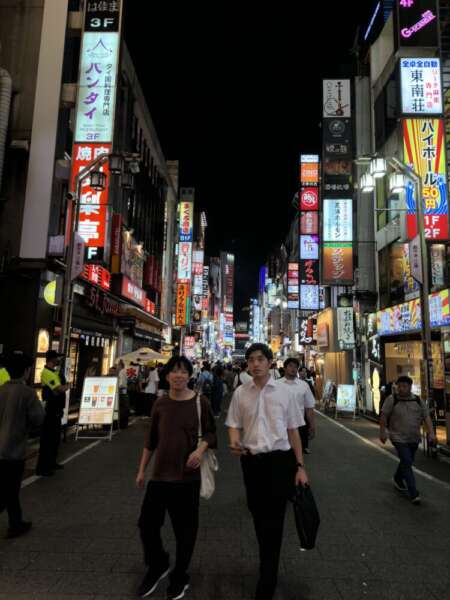 First stop would be Shinjuku night street. Truly immerse yourself in the essence of a city, there’s no better way than strolling through its labyrinthine streets. Embark on an evening walking tour through Tokyo’s enchanting Shinjuku ward and witness the transformation as it comes alive with a mesmerizing kaleidoscope of vibrant night lights emanating from its numerous shops, eateries, and entertainment hubs. Throughout your journey, you’ll be accompanied by an engaging and knowledgeable English-speaking guide who will weave captivating tales and provide insightful commentary about the ward and its myriad attractions. Your adventure begins with a visit to Omoide-yokocho, an alleyway where you can savor a variety of authentic Japanese street food. Despite the bustling crowds in this charming alley, the opportunity to sample its delectable offerings is well worth the occasional bumping into fellow explorers. Following your time in the alleyway, you’ll venture onward to Kabukicho, the ward’s renowned red-light district where you can experience the more spirited side of Japanese nightlife.
First stop would be Shinjuku night street. Truly immerse yourself in the essence of a city, there’s no better way than strolling through its labyrinthine streets. Embark on an evening walking tour through Tokyo’s enchanting Shinjuku ward and witness the transformation as it comes alive with a mesmerizing kaleidoscope of vibrant night lights emanating from its numerous shops, eateries, and entertainment hubs. Throughout your journey, you’ll be accompanied by an engaging and knowledgeable English-speaking guide who will weave captivating tales and provide insightful commentary about the ward and its myriad attractions. Your adventure begins with a visit to Omoide-yokocho, an alleyway where you can savor a variety of authentic Japanese street food. Despite the bustling crowds in this charming alley, the opportunity to sample its delectable offerings is well worth the occasional bumping into fellow explorers. Following your time in the alleyway, you’ll venture onward to Kabukicho, the ward’s renowned red-light district where you can experience the more spirited side of Japanese nightlife.
Godzilla head
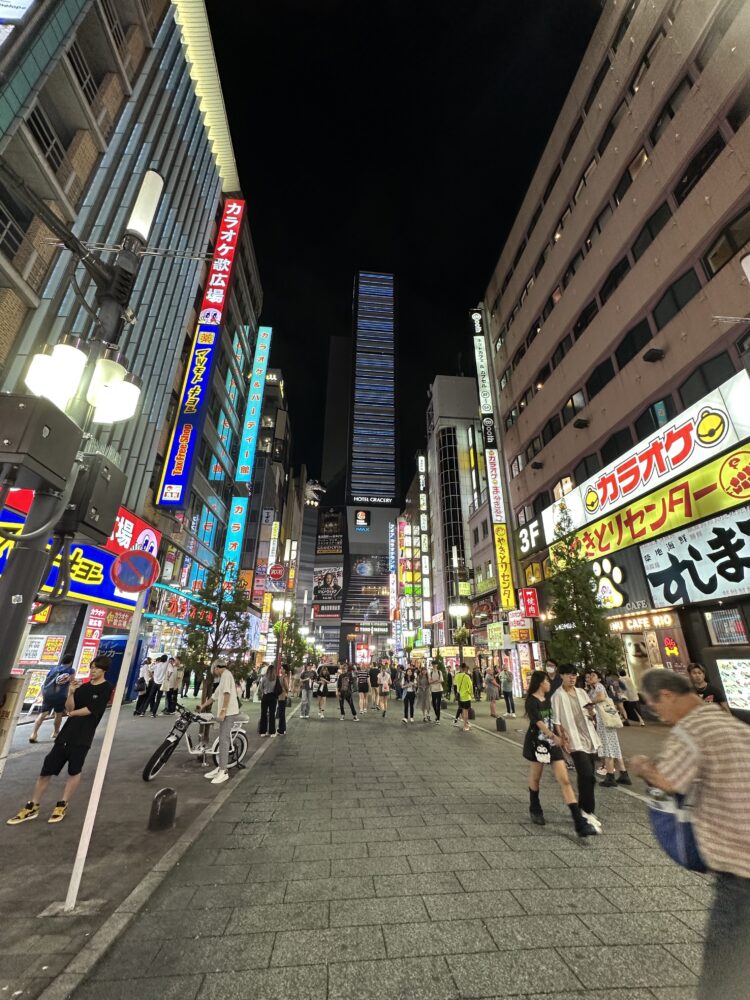
Godzilla head is placed in the middle of a Shinjuku square which can be witnessed from anywhere in that area. To be precise, this statue is a real life-size model with a height of 12 meters. This Godzilla head was established in Shinjuku Toho Building which started business in April 2015 to convey the charm of this global creature. This building is a 5 minutes walk from the jr Shinjuku station east exit or 3 minutes from seibu Shinjuku station. You can see this big fat statue from the behind of Yasukuni street which will definitely make you feel that real Godzilla has appeared on the streets of Shinjuku as it is places in the outdoor balcony on 8th floor of the Toho building. Just in case if you are using the cafe or hotel in that building then you can have a closer look of the model from the terrace.
Omoide Yokocho
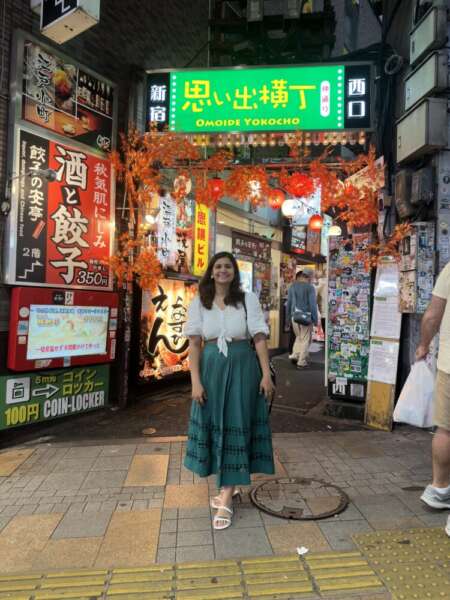 Omoide Yokocho a puzzle of narrow lanes which is nearest to the west exit of the Shinjuku station. It has a feature that stands exactly opposite of the what stations have in terms of bright light and clean modern environment. These lanes are loaded with greasy food texture, open barbecue stalls, tiny restaurants and noise with not enough space to stretch out the arms. The lanes are crowded with multilingual visitors, the streets are old and historical, food stalls have a traditional taste which makes it more special and popular. At dinner time, mostly office working people are seen boozing over the beers which are quickly served with the side of Yakitori chicken sticks. Though there are several variety of food here, they have a rule that food is prepared in an Izakaya preparation. Primarily consisting of freshly grilled items, including seafood, chicken prepared in various yakitori styles, meat cooked on the grill, and grilled intestines. The alleys of Omoido yokocho have sign boards saying no smoking or holding ciggerates while walking on streets, it is only allowed when seating. Another rule is you cant just order beer here, ordering food is compulsory
Omoide Yokocho a puzzle of narrow lanes which is nearest to the west exit of the Shinjuku station. It has a feature that stands exactly opposite of the what stations have in terms of bright light and clean modern environment. These lanes are loaded with greasy food texture, open barbecue stalls, tiny restaurants and noise with not enough space to stretch out the arms. The lanes are crowded with multilingual visitors, the streets are old and historical, food stalls have a traditional taste which makes it more special and popular. At dinner time, mostly office working people are seen boozing over the beers which are quickly served with the side of Yakitori chicken sticks. Though there are several variety of food here, they have a rule that food is prepared in an Izakaya preparation. Primarily consisting of freshly grilled items, including seafood, chicken prepared in various yakitori styles, meat cooked on the grill, and grilled intestines. The alleys of Omoido yokocho have sign boards saying no smoking or holding ciggerates while walking on streets, it is only allowed when seating. Another rule is you cant just order beer here, ordering food is compulsory
Ichiran ramen
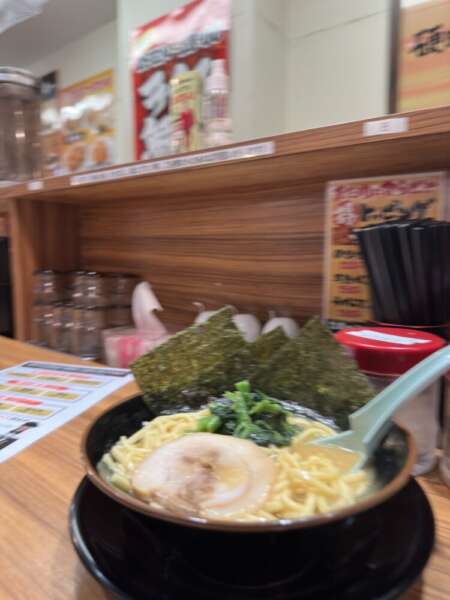 After an eventful yet tiring day head straight to Ichiran Ramen for a perfectly balanced dinner. Ichiran a most popular ramen place in Tokyo which was founded half a century ago. The most visited branch is in Shibuya where people wait for hours in a queue in front of the restaurants. For foreign visitors, this is the most prominent place to dig in the smoothness of ramen. Ichiran Ramen is known for its Tonkotsu (pork based) ramen in whole Japan. For over fifty years, Ichiran has been dedicated to perfecting Tonkotsu ramen, striving for excellence in the art of ramen-making.
After an eventful yet tiring day head straight to Ichiran Ramen for a perfectly balanced dinner. Ichiran a most popular ramen place in Tokyo which was founded half a century ago. The most visited branch is in Shibuya where people wait for hours in a queue in front of the restaurants. For foreign visitors, this is the most prominent place to dig in the smoothness of ramen. Ichiran Ramen is known for its Tonkotsu (pork based) ramen in whole Japan. For over fifty years, Ichiran has been dedicated to perfecting Tonkotsu ramen, striving for excellence in the art of ramen-making.
Located in Fukuoka Prefecture, renowned for its Tonkotsu ramen tradition, Ichiran’s ramen boasts a delightful creamy sweetness, complemented by delicate, thin noodles and garnished with tender slices of pork and their signature spicy red sauce. Lastly. you can skip the crowd and can have a taste of Ichiran ramen. Skip the Ichiran Shibuya and head to the Ichiran Shibuya spain-zaka as it is a lesser known branch but the taste is same. Another is, visit in the morning or late at night.
Shinjuku 3D cat billboard
To conclude the day after a delicious meal, head to the Shinjuku station east exit. There in the center you’ll see a larger than life calico cat on the screen staring at the pedestrian, who sleeps and wakes as well. The cat appears through out the day between the advertisements from when the screen turns on at 7 am to 1 am when the screen turns off. Well, a cat has a different mood throughout the day where it meows, yawns and waves its tails around. This was Tokyo’s first ever 3D billboard which features a curved LED light that displays 4K images and plays sound. The curved screen enhances the sense of depth and contributes to the breathtaking 3D effect when viewed from specific angles.
Day 2 (Tokyo)
Welcome to Day 2 of a journey through Japan! After an incredible first day exploring the vibrant streets of Tokyo, we’re ready to dive deeper into the richness of Japanese culture and history. Today, we’ll embark on a memorable adventure that takes us through serene gardens, iconic temples, heartwarming tales of loyalty. So, fasten your seat belts and get ready to uncover the hidden gems and enchanting stories that await us on this incredible day in the Land of the Rising Sun. Let’s begin our exploration:
Gyoen Nogaku-do
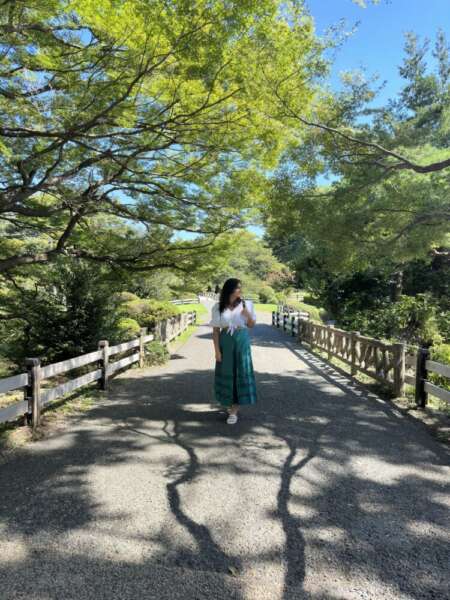 Lets start with Shinjuku Gyoen, situated just a short stroll away from the renowned Shinjuku district, stands as one of Tokyo’s largest and most beloved public gardens. Its claim to fame lies in the enchanting display of seasonal cherry blossoms that grace its landscape. Originally established during the Edo period (1603-1867) as the residence of a Tokyo feudal lord, Shinjuku Gyoen underwent a transformation into a botanical garden.
Lets start with Shinjuku Gyoen, situated just a short stroll away from the renowned Shinjuku district, stands as one of Tokyo’s largest and most beloved public gardens. Its claim to fame lies in the enchanting display of seasonal cherry blossoms that grace its landscape. Originally established during the Edo period (1603-1867) as the residence of a Tokyo feudal lord, Shinjuku Gyoen underwent a transformation into a botanical garden.
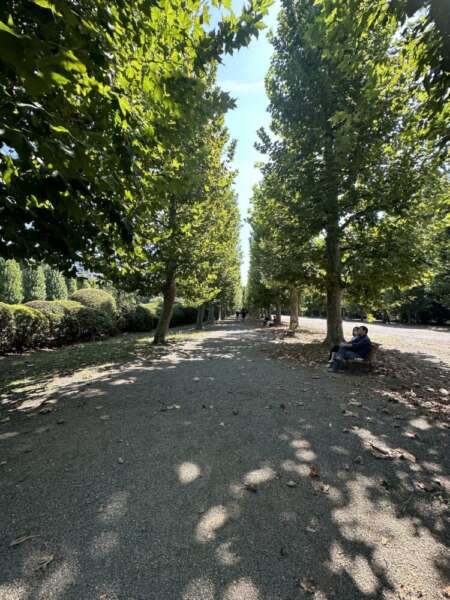
In 1903, ownership of the land was transferred to the imperial family, who utilized it for recreational purposes. Despite suffering near-total devastation during World War II, the park was painstakingly reconstructed and reintroduced as a public park in 1949. Within its bounds, you’ll discover a Japanese garden, as well as French and English-style gardens, along with a greenhouse. Ample open spaces beckon you for leisurely strolls, allowing you to savor the beauty of cherry blossoms in spring or the vibrant hues of autumn leaves.
Meiji Jingu
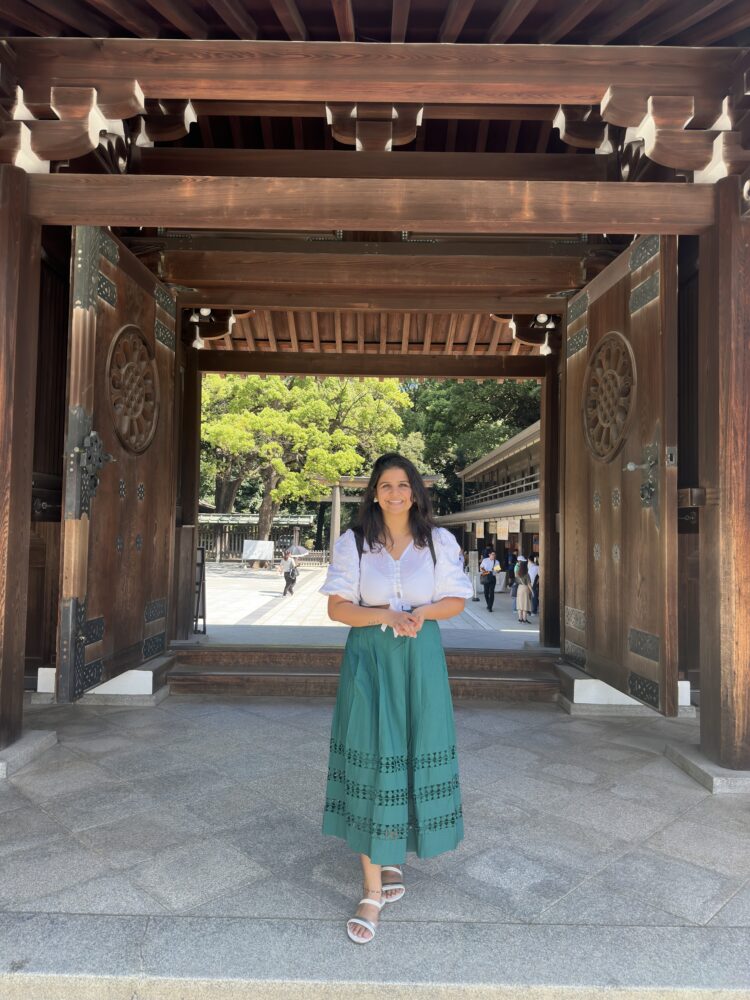
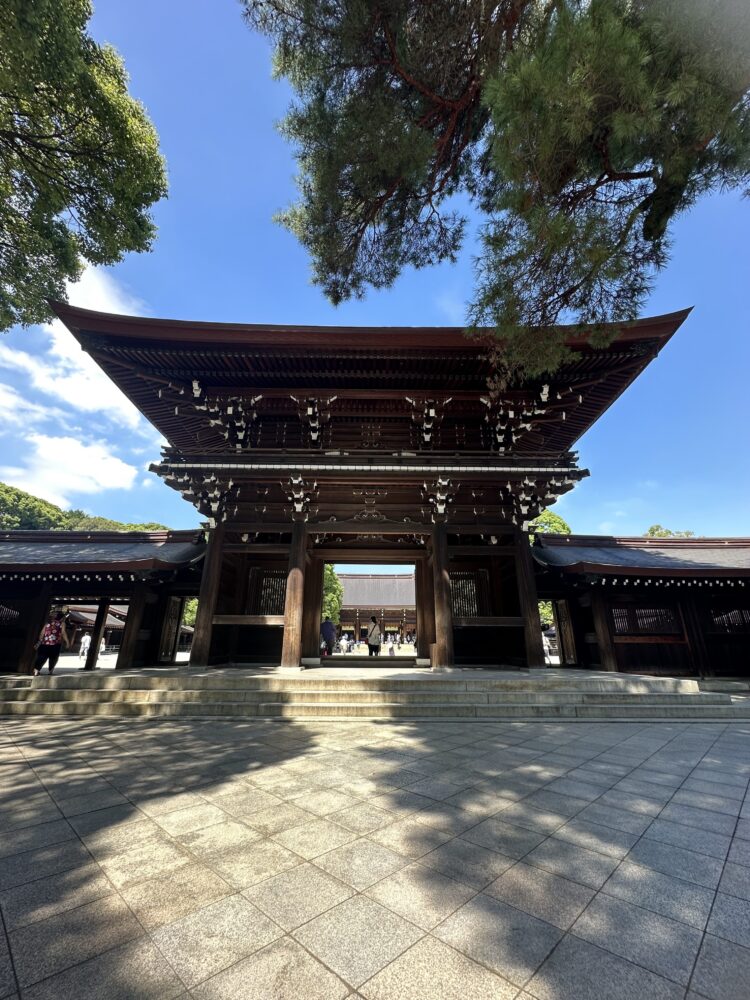
Nestled in the technologically advanced city of Tokyo, Meiji Jingu is just a short stroll away from the eccentric streets of Harajuku. This renowned Shinto shrine remains veiled within a densely wooded enclave, casting an aura of serenity amidst the vibrant pulse of Japan’s bustling metropolis. Meiji Jingu stands as one of Tokyo’s most frequented shrines, drawing millions of visitors annually. With its daily rituals, remarkable architectural marvels, and picturesque surroundings, it stands as a captivating and revitalizing attraction, appealing to both tourists and practitioners of the Shinto faith.
Yoyogi park
Yoyogi park is one of the largest city parks in Tokyo located in the Shibuya area. It features wide lawns, ponds, forested area and even an area for jogging, picnicking with friends and family and outdoor activities as well. Although Yoyogi park has a few cherry trees compared to the other location in Tokyo, making it a better Hanami place in spring. This place is also known for its Ginkgo trees forest which turns into intensely golden in color in the autumn season. Well before becoming a city park in 1967, it was a site for the Olympic village for the Tokyo Olympics in the year 1964 and before this it was a residential area for US military personnel.
Shibuya Crossing
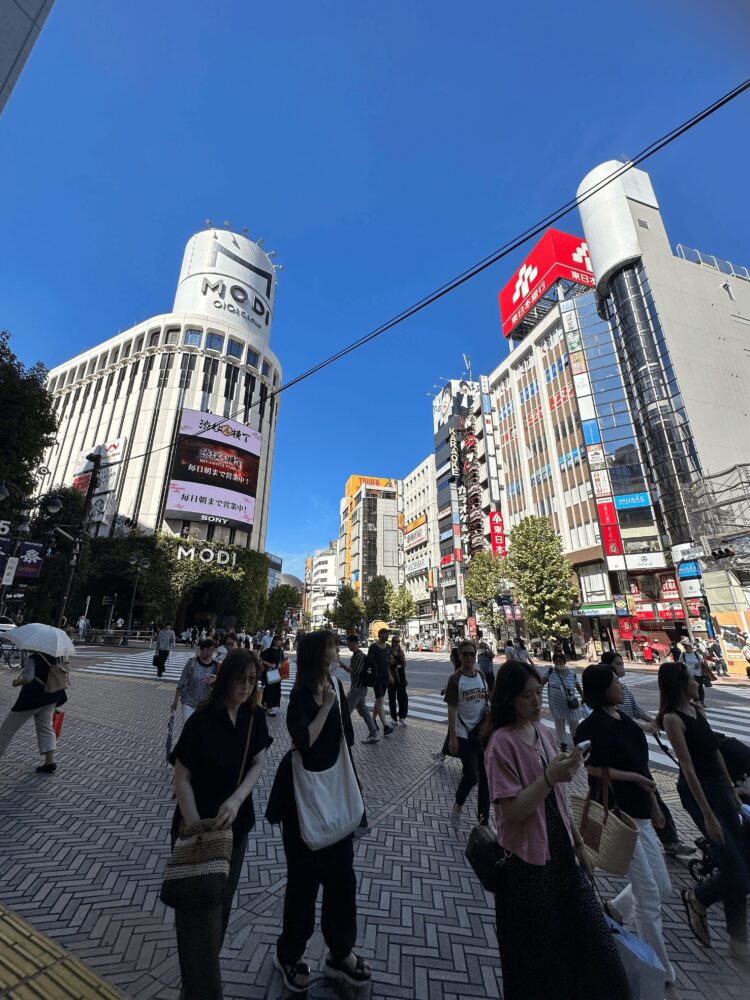
Shibuya crossing, which is the worlds busiest pedestrian street in the whole world.
Shibuya Crossing stands as one of Tokyo’s most iconic landmarks, capturing the spotlight in numerous films, magazines, and blogs. During its busiest periods, an estimated 1,000 to 2,500 individuals navigate their way across this junction every two minutes, a volume large enough to swiftly fill a football stadium. This remarkable spectacle has earned it the affectionate nickname “scramble,” reflecting the diverse flow of pedestrians converging from all directions.
Hachiko statue
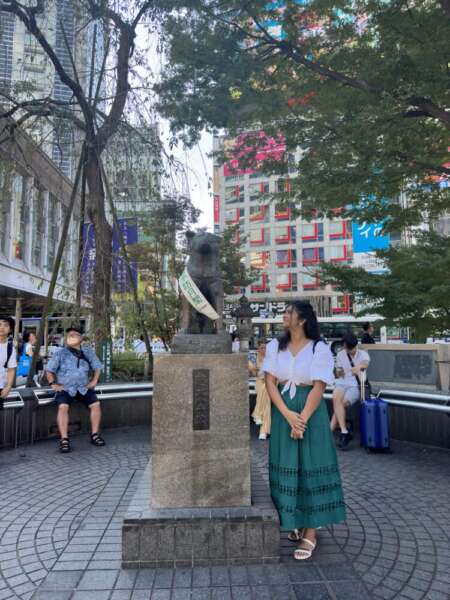 The Hachiko statue is an unofficial landmark of Japan but a very famous meeting point nowadays. Hachiko statue near Shibuya station is a homage to the loyal Akita dog who used to visit and wait for his master everyday even after his death to pay respect. This story became so legendary and heart touching that a small statue was erected in front of the Shibuya station in memory of Hachiko. This is a starting point for every tourist who visits Tokyo or a convenient meeting point for friends. Foreigners here are always queuing to click photo with that statue which is just a few minutes away from the famous Shibuya scramble.
The Hachiko statue is an unofficial landmark of Japan but a very famous meeting point nowadays. Hachiko statue near Shibuya station is a homage to the loyal Akita dog who used to visit and wait for his master everyday even after his death to pay respect. This story became so legendary and heart touching that a small statue was erected in front of the Shibuya station in memory of Hachiko. This is a starting point for every tourist who visits Tokyo or a convenient meeting point for friends. Foreigners here are always queuing to click photo with that statue which is just a few minutes away from the famous Shibuya scramble.
Eat at Shibuya center Gai
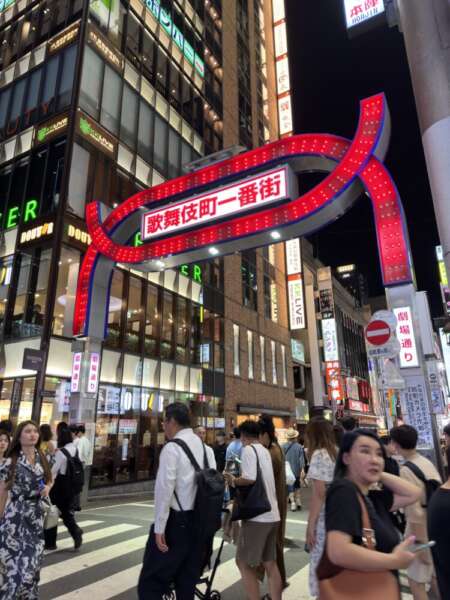 Center Gai, located in Shibuya, serves as the primary shopping street in the area. The main street and its adjoining side streets in Center Gai are adorned with an array of diverse shops, including eateries, bars, clubs, coffee houses, boutiques, and gaming centers. The competitive landscape in this area ensures that both food and shopping options are of high quality, presenting a wide variety for patrons to choose from. Center Gai boasts an abundance of sweet shops, ice cream parlors, and crepe vendors catering primarily to the younger crowd. In the nearby of Shibuya Center-Gai/Koen-Dori, you’ll find a plethora of culinary delights to explore. Highly recommended cuisines in this area include Sushi, Sashimi, Tempura, Teppanyaki, Shabu-shabu/Sukiyaki, Yakiniku, Taverns (Izakaya), and Kaiseki (course menu) dining. If you’re on the lookout for dining options, consider exploring the neighboring areas then Ebisu, Dogenzaka/Shinsen, Daikanyama, and the Samurai Armor Photo Studio, a wide array of delectable restaurants to choose from.
Center Gai, located in Shibuya, serves as the primary shopping street in the area. The main street and its adjoining side streets in Center Gai are adorned with an array of diverse shops, including eateries, bars, clubs, coffee houses, boutiques, and gaming centers. The competitive landscape in this area ensures that both food and shopping options are of high quality, presenting a wide variety for patrons to choose from. Center Gai boasts an abundance of sweet shops, ice cream parlors, and crepe vendors catering primarily to the younger crowd. In the nearby of Shibuya Center-Gai/Koen-Dori, you’ll find a plethora of culinary delights to explore. Highly recommended cuisines in this area include Sushi, Sashimi, Tempura, Teppanyaki, Shabu-shabu/Sukiyaki, Yakiniku, Taverns (Izakaya), and Kaiseki (course menu) dining. If you’re on the lookout for dining options, consider exploring the neighboring areas then Ebisu, Dogenzaka/Shinsen, Daikanyama, and the Samurai Armor Photo Studio, a wide array of delectable restaurants to choose from.
Gotokuji temple
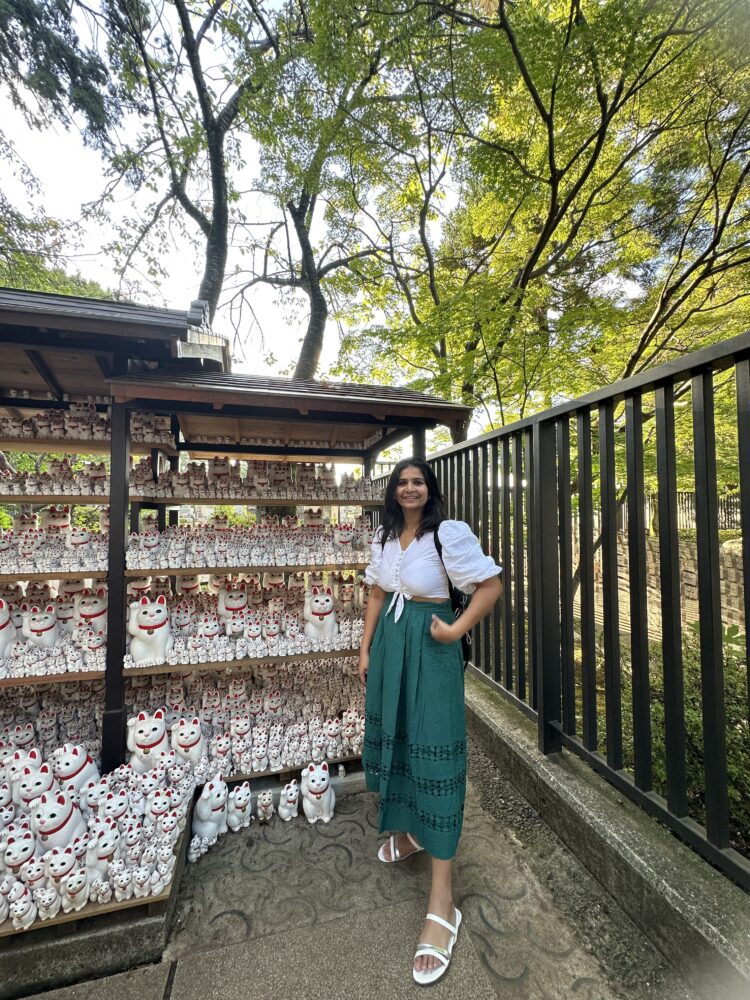
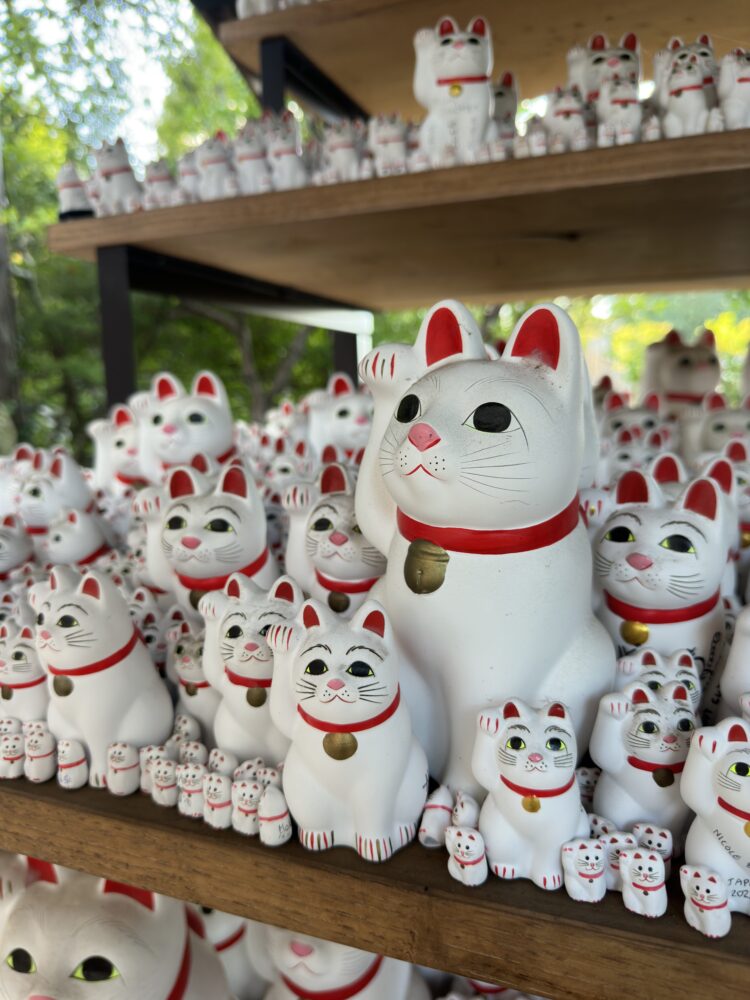
Situated in the Bunkyō special ward of Tokyo, Gotokuji Temple is somewhat removed from the primary city attractions. Gotokuji Temple is renowned throughout Japan as the presumed birthplace of the Maneki-neko, or the “beckoning cat” figurine, believed to usher in good fortune and success to those who keep it in their bedroom or study. While this auspicious talisman is widely embraced by Chinese and Vietnamese communities, leading many to mistakenly associate it with Chinese origins, its true birthplace undeniably lies in Japan, with Gotokuji Temple being a key link to its heritage. When you visit Gotokuji, you’ll be greeted by an abundance of beckoning cats, more so than at any other temple in Japan. These figurines come in various materials, including wood, stone, metal, and porcelain, and are available in a range of colors. Despite the diversity, the traditional white Maneki-neko remains the most prevalent and cherished variation.
Shibuya skywalk night
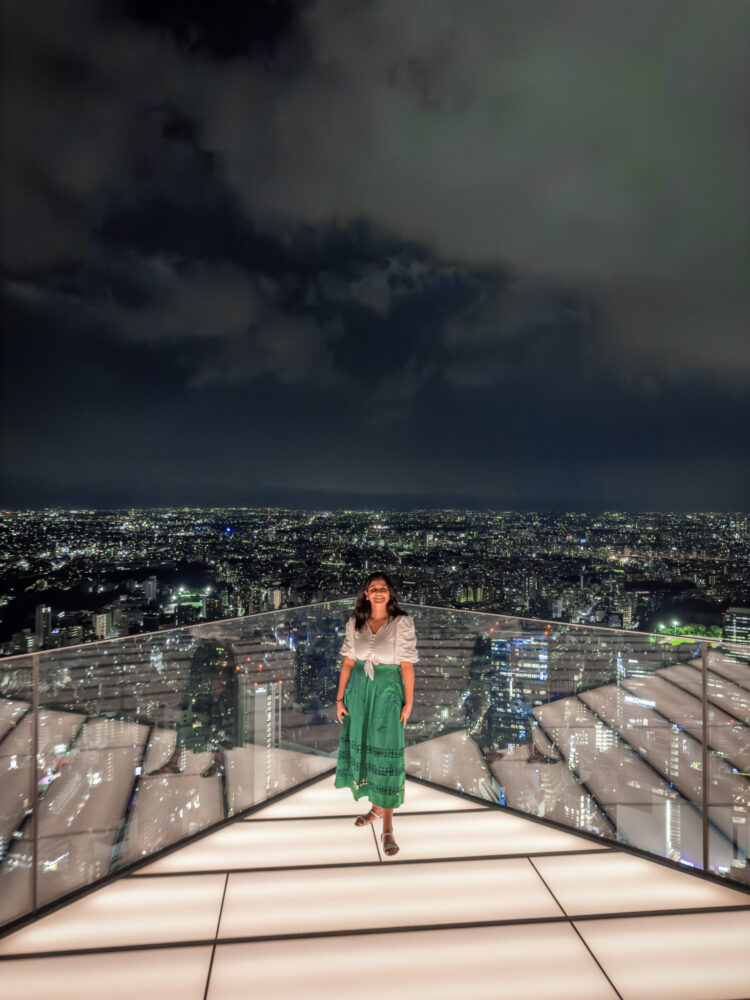
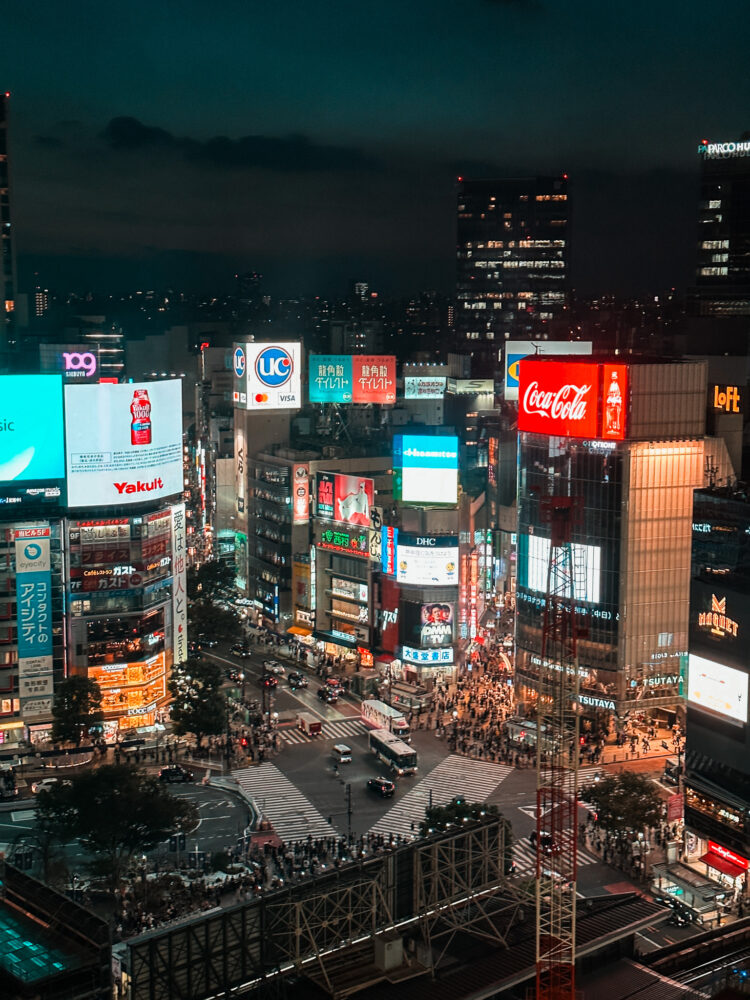
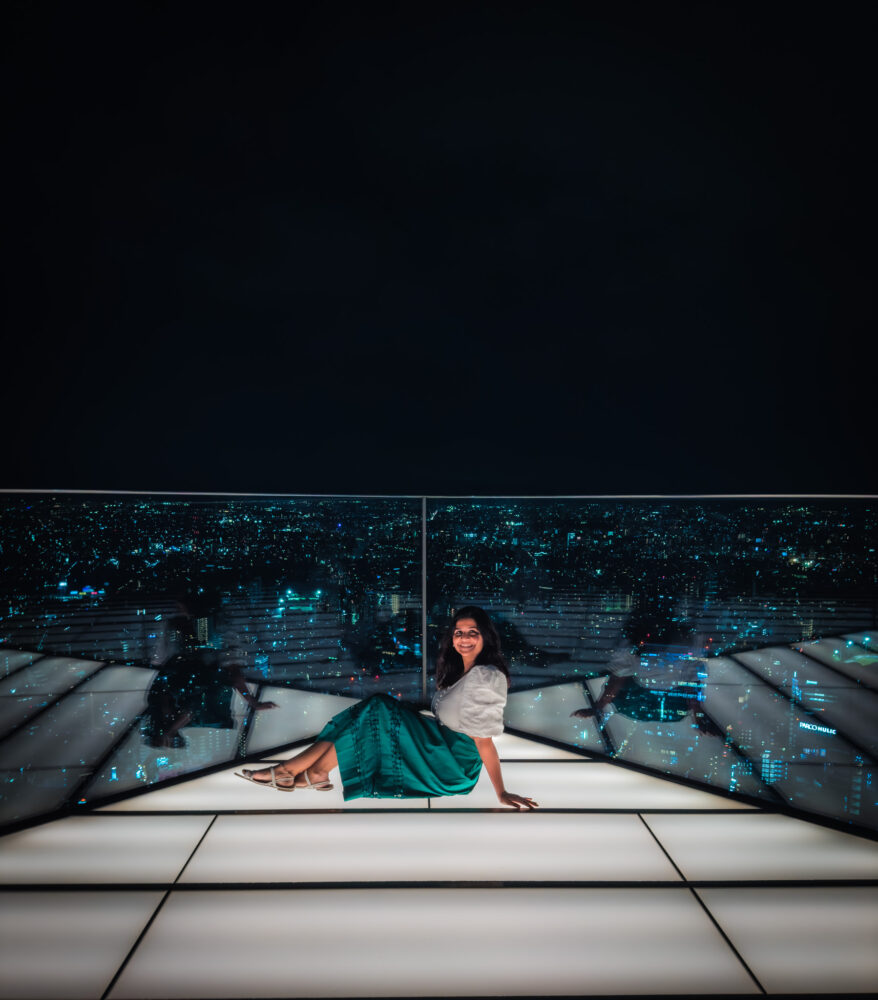
Jaw dropping view from the 230 ft above the bustling and busiest pedestrian crossing in the city of Japan is a major tourist attraction known as Shibuya skywalk. Stepping onto the ascending escalator will make all the hush-push around you disappear as soon as you start reaching the top and it will provide a beautiful view of the whole lot of Tokyo with 360% view of the city including prominent view of all touristy attractions, like Tokyo tower, Tokyo skytree and Mont Fuji on some clear days. It turns out even more beautiful when the sky shows out its vibrant tone at the time of the sunset. Also, be thorough with the sunset timings as there is not set timings and time might fluctuate everyday. Sunset being the ideal time for all the visitors, also makes this place crowded. So, visit as early as possible around 1.5 hours before because there is no time limit once you enter.
Shibuya 3D Panda
The most recent addition to Tokyo’s array of 3D billboards is a solitary screen located in close proximity to Shibuya Scramble Crossing. You can spot this billboard along Shibuya Center Gai, just around the corner from Starbucks Shibuya Tsutaya and above the Yamashita Honki Udon shop. To catch a glimpse of the endearing panda, keep an eye out for the animation of a casino slot machine – the panda makes its appearance once the machine hits the jackpot. This panda display is undeniably charming, featuring various actions such as manipulating a knob to adjust its box’s size, playing with a bamboo branch, and observing passersby.
Dinner at Golden Gai
After a wonderful day out head towards Golden Gai area war a cheerful meal Tokyo boasts a plethora of glamorous bars and clubs, but nestled within this modern cityscape lies Golden Gai, often referred to as the “Golden District.” It stands as a unique enclave where you can glimpse the enduring echoes of postwar nightlife. Here, approximately 200 diminutive bars, eateries, and clubs are squeezed into a compact cluster of somewhat dilapidated, weathered structures that hark back to earlier times. Unlike the towering skyscrapers that dominate the surrounding area, most of the buildings in Golden Gai reach a modest height of no more than two stories.If you are looking for a comforting ramen meal then try Ramen Nagi, they are known for serving boldly savory and flavorful sardine ramen bowl which do not contain strong fishy taste. Another comforting place is golden gai miso soup. Well day two ends here.
Day 3 (Tokyo)
TeamLab Planets
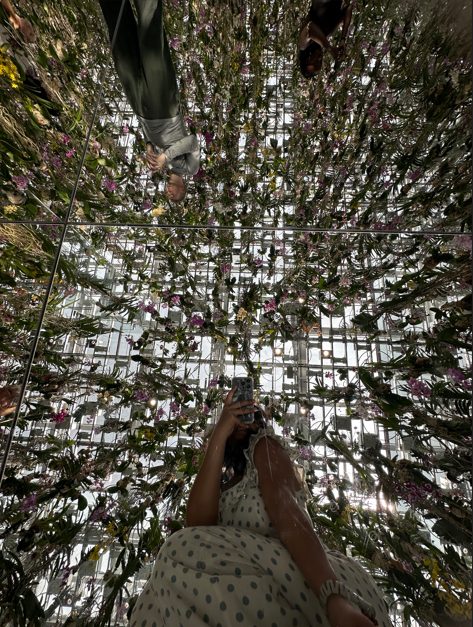
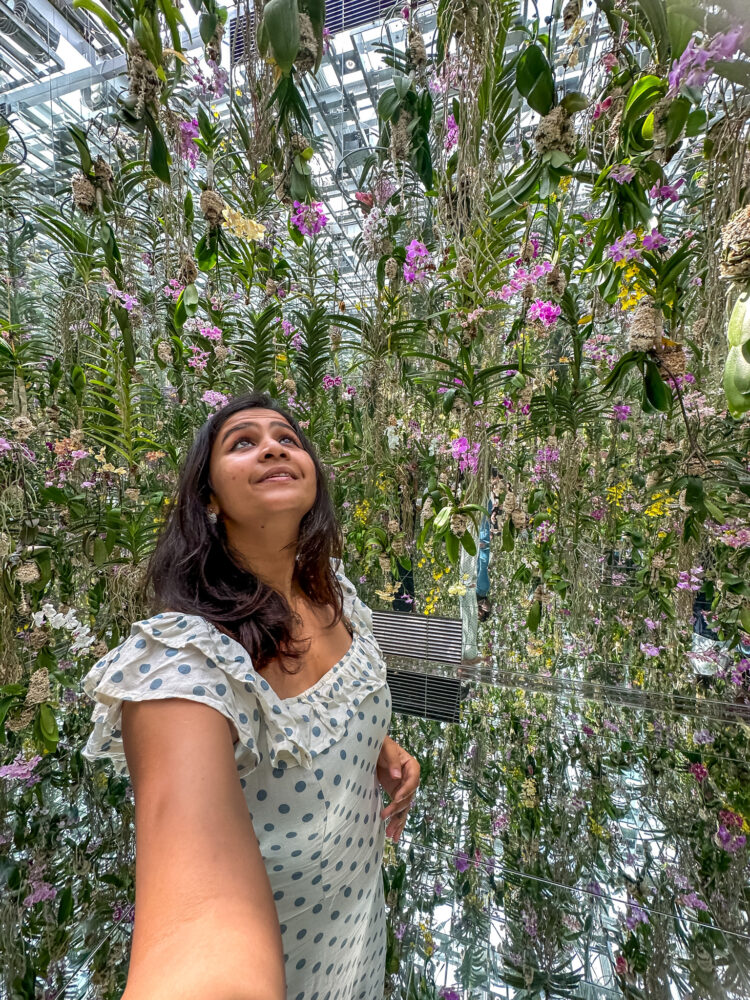
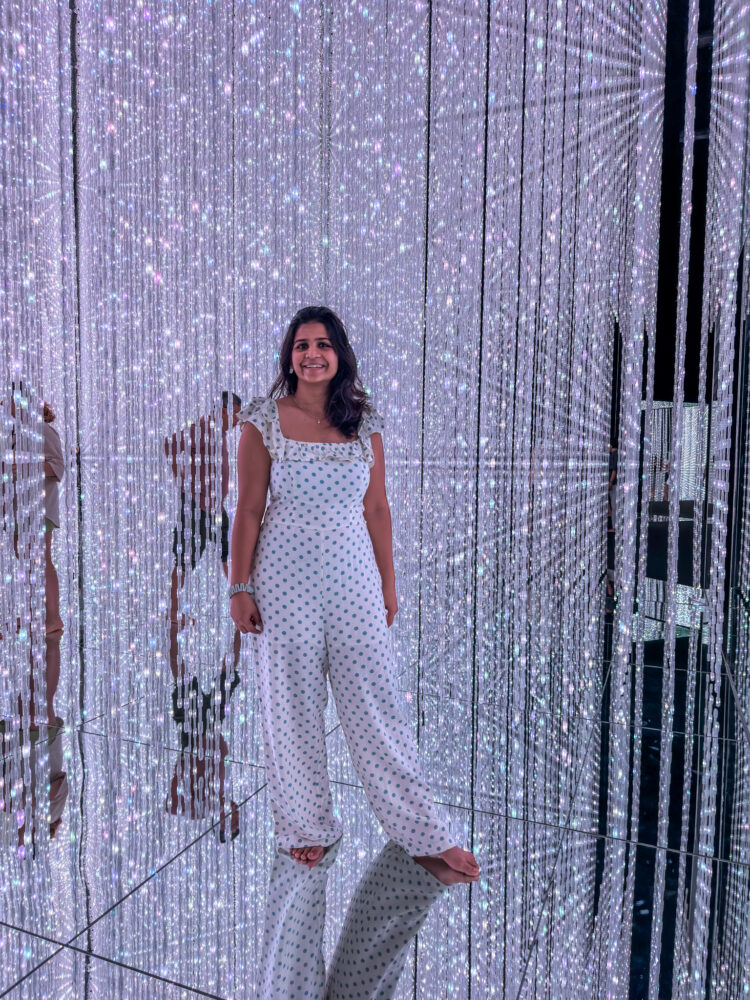
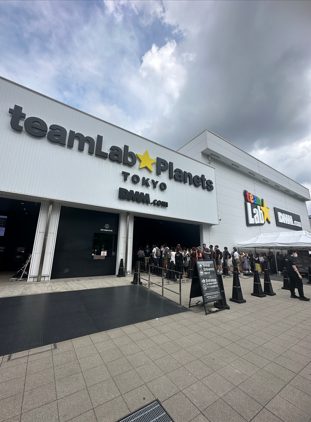
The museum houses only nine installations, but they are generously spread out across a vast expanse of 10,000 square meters, providing ample room for each exhibit. What sets these installations apart is their emphasis on creating a sense of immersive experience, setting them apart from the recently closed teamLab Border less Museum. In a recent development, the museum added an on-site vegan ramen restaurant and expanded with a new indoor/outdoor Garden Area, featuring two additional installations. Conveniently located adjacent to Shin-Toyosu Station, teamLab Planets offers a more personal and interactive encounter with the collective’s distinctive digital art.
Odaiba beach
The 800-meter-long Odaiba Beach is unmistakably man-made and situated in a highly urban environment. Given that swimming and fishing are prohibited here, the primary purpose of this area is for leisurely strolls and relaxation. On sunny days, some Japanese individuals may dip a toe in the water, particularly children who engage in activities like football or Frisbee. Adequate restroom and shower facilities are, of course, readily available. A delightful experience awaits those who choose to take a leisurely walk along the beach beneath the towering shopping malls, offering breathtaking vistas of the renowned Rainbow Bridge and the city center’s skyline as a backdrop, which includes the iconic Tokyo Tower. Odaiba Beach is an ideal location for observing mesmerizing sunsets and enjoying the enchanting spectacle created by the nighttime lights from the malls above.
Tokyo sky tree
The Tokyo Sky Tree is a broadcasting and telecommunications tower located in Tokyo, Japan. Upon its inauguration on May 22, 2012, it stood as the world’s second-tallest structure, following the Burj Khalifa in Dubai, with a towering height of 2,080 feet (634 meters). Notably, the Tokyo Sky Tree holds the distinction of being the world’s tallest freestanding tower, surpassing Tokyo Tower, the city’s previous tallest structure, by an impressive 988 feet (301 meters).
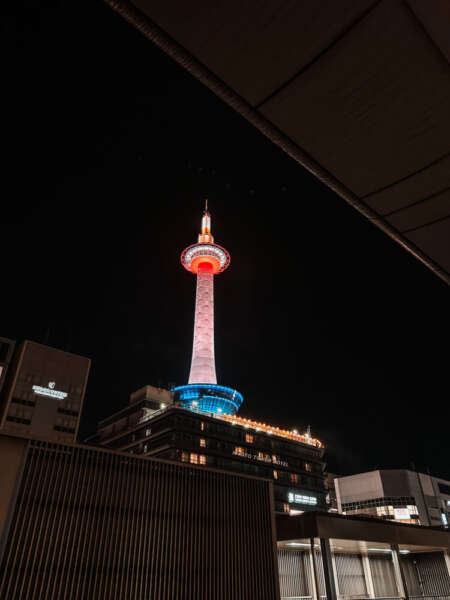
This remarkable tower offers two publicly accessible observation areas: the Tembo Deck and the Tembo Gallery, also known as the Galleria. The Tembo Deck comprises three levels, with an observation floor situated at an elevation of 1,148 feet (350 meters), overlooking two floors hosting a variety of restaurants. The Tembo Gallery consists of two interconnected floors, linked by a spiraling circular ramp. The higher of these two floors extends to a breathtaking altitude of 1,480 feet (451 meters) above the ground.
Senso-ji temple
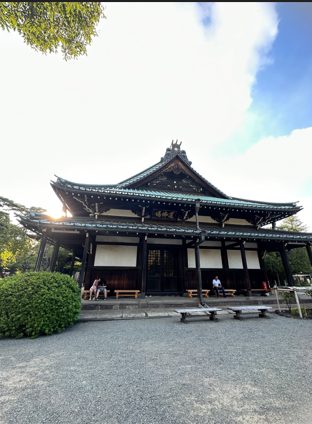
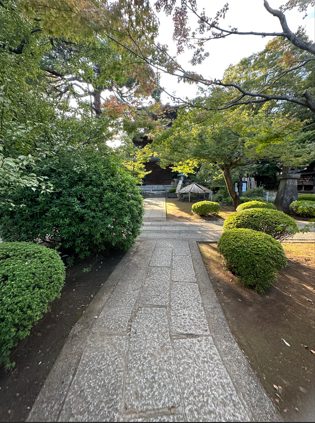
Sensoji is a Buddhist temple located in the Asakusa which is the most colorful and popular temples in the region. The temple is also known by the name of the Asakusa Kannon temple. According to the legend, in the year 628, two siblings discovered a statue of Kannon, the goddess of mercy, while fishing in the Sumida River. Despite their attempts to return the statue to the river, it inexplicably kept coming back to them. As a result, Sensoji Temple was constructed in close proximity as a dedicated place for the worship of the goddess Kannon. This temple was finished in 645, earning it the distinction of being Tokyo’s most ancient temple.
The Sensoji Temple vicinity hosts a range of events throughout the year, with the most prominent being the Sanja Matsuri, an annual festival celebrating the Asakusa Shrine, typically held in May. Additionally, there are other notable events such as the Asakusa Samba Carnival in August and the Hagoita-ichi, a market where ornate wooden paddles used in the traditional hanetsuki game are sold.
Lunch at Asakusa
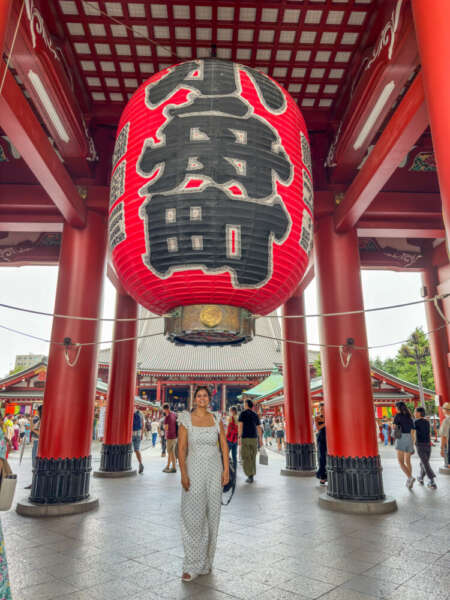 After visiting Sensoji temple in Asakusa, the unique center of historical downtown in Tokyo. It attracts a lot of visitors due to its cultural and historic perseverance.The food is outstanding and has no shortage of dining options as till date there are places which was opened in 1880 and so more. The food here is made and served in a proper traditional way. So for lunch head straight to the famous food stalls for an appetizing meal. Such as visit Sometaro for amazing okonomiyaki, for authentic ramen head to Ramen yoroiya as they serve tsukemen style zaru ramen and also have vegan ramen and gyoza on there menu, for traditional tempura dishes visit Tempura Daikokuya and lastly for some traditional retro bar visit Kamiya bar for moth watering cocktails.
After visiting Sensoji temple in Asakusa, the unique center of historical downtown in Tokyo. It attracts a lot of visitors due to its cultural and historic perseverance.The food is outstanding and has no shortage of dining options as till date there are places which was opened in 1880 and so more. The food here is made and served in a proper traditional way. So for lunch head straight to the famous food stalls for an appetizing meal. Such as visit Sometaro for amazing okonomiyaki, for authentic ramen head to Ramen yoroiya as they serve tsukemen style zaru ramen and also have vegan ramen and gyoza on there menu, for traditional tempura dishes visit Tempura Daikokuya and lastly for some traditional retro bar visit Kamiya bar for moth watering cocktails.
Hat cafe
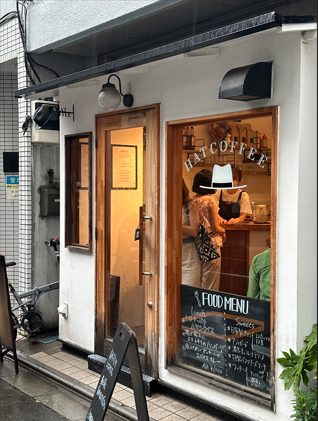
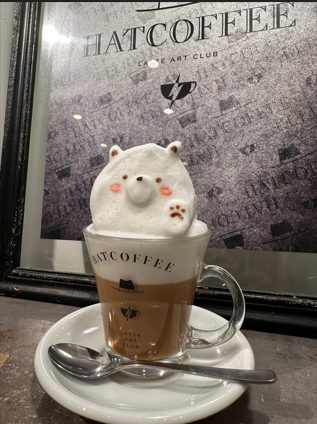
After a perfect lunch go to Hat cafe is known for its 3D latte art which offers ridiculous as well as beautiful coffee with so much of creativity. The coffee is decked in detailed illustration in a 3D format on a milk foam. There are frequent cameos from Snoopy, Mickey Mouse to many anime characters and the most favorite of them to be Pikachu and the characters from Demon Slayer. You can also ask to create the art of your beloved dog or any pet, as they are perfect at what they do. They sit back at corner and start creating there magic of what they have received in the order process. They use there phone to look at the image sent to them throughout the process, also you can stand by and look at how and what they are doing. Hat cafe has a lot of different flavors in custom-made drinks which are unique and besides that they even have wide varieties of pastries, meals and drinking options.
Akhibara- anime world
Akihabara, known as Akiba for short, is a central Tokyo district renowned for its numerous electronics shops and has also become known as the epicenter of Japan’s otaku (enthusiast fan) culture. The area features a multitude of stores and businesses dedicated to anime and manga, interspersed among the electronic retailers in the vicinity. The nature of Akihabara has undergone continuous transformation over the years and continues to evolve. In recent decades, Akihabara has solidified its status as a hub for Japanese otaku and anime enthusiasts, with numerous shops dedicated to anime, manga, vintage video games, figurines, trading cards, and various collectibles taking up the available spaces amid the electronics stores.
Tokyo Station
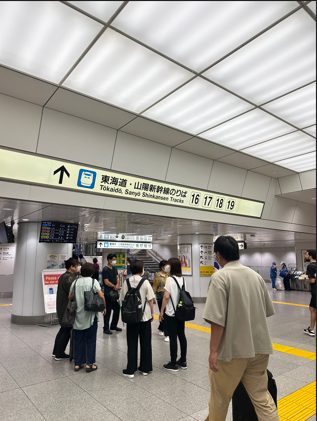
Tokyo Station ranks among Tokyo’s prominent train stations, alongside other major hubs like Shinjuku Station, Shibuya Station, and Shinagawa Station. It holds the distinction of being not only the largest but also the busiest train station in Japan, facilitating the departure of over 3,000 daily trains, connecting to nearly every major city across the country. Within the ticket gates of Tokyo Station lies a highly convenient shopping area known as “Ekinaka,” which translates to “inside the station.” This space hosts a diverse range of commercial facilities, featuring numerous shops specializing in Tokyo souvenirs, bento lunch boxes, and convenient convenience stores
Imperial palace
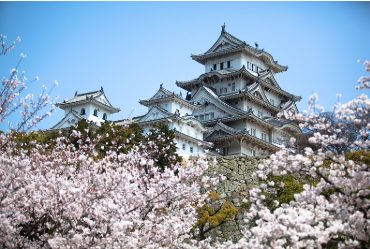
A short walk from the Tokyo station there is a residence of Japan’s imperial family known as Imperial palace. The current palace is located on the former site of Edo palace, a large park there which is covered with massive stone walls and wide channels are dug out to keep the enemy away. After the completion of the Imperial Palace in 1888 by the country’s capital and imperial residence it was destroyed in the world war 2 but was later established with the same structure and design. The inner grounds of the palace are not open for the public but visitors can visit only on 2 days of the year in January and February. We can even witness the sight of the Imperial family as they make public appearance on those days.
Dinner at Udon Shin
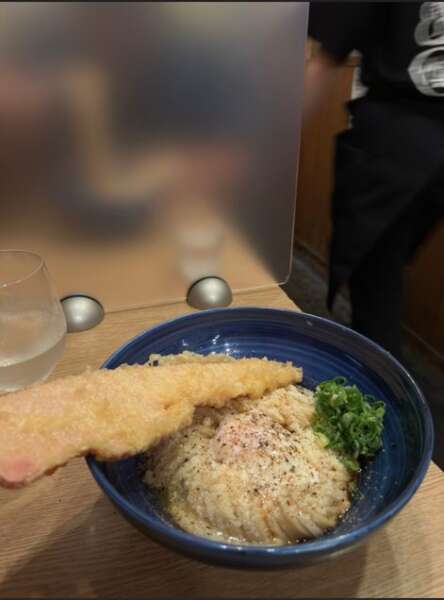 After exploring such a beautiful places with a hectic time schedule you must be hungry and craving for Ramen or Udon because these are the specialty in Japan. So, you can head towards Udon Shin in Shibuya. It is a very popular joint to explore the variety of Udon to try in hot and cold version, as the wheat udon are freshly made with hands. The zaru, carbonara, kake udon, tanuki udon and tempura udon are the most famous variations here. When it comes to reservation, you have to book way prior as there is a rush which will make you wait for 4-5 hours and sometimes even more. The accessibility is effortless from many stations though the nearest is the Shinjuku station. Well day 3 came to an end but do not get over it yet because day 4 is even more exciting
After exploring such a beautiful places with a hectic time schedule you must be hungry and craving for Ramen or Udon because these are the specialty in Japan. So, you can head towards Udon Shin in Shibuya. It is a very popular joint to explore the variety of Udon to try in hot and cold version, as the wheat udon are freshly made with hands. The zaru, carbonara, kake udon, tanuki udon and tempura udon are the most famous variations here. When it comes to reservation, you have to book way prior as there is a rush which will make you wait for 4-5 hours and sometimes even more. The accessibility is effortless from many stations though the nearest is the Shinjuku station. Well day 3 came to an end but do not get over it yet because day 4 is even more exciting
Day 4 (day trip to Yokohoma)
Mario karting
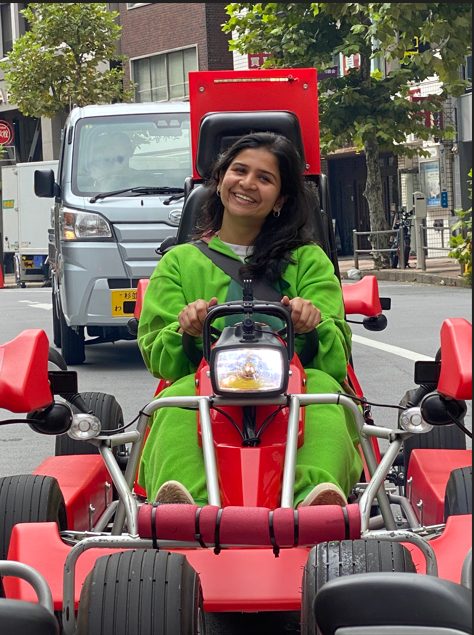
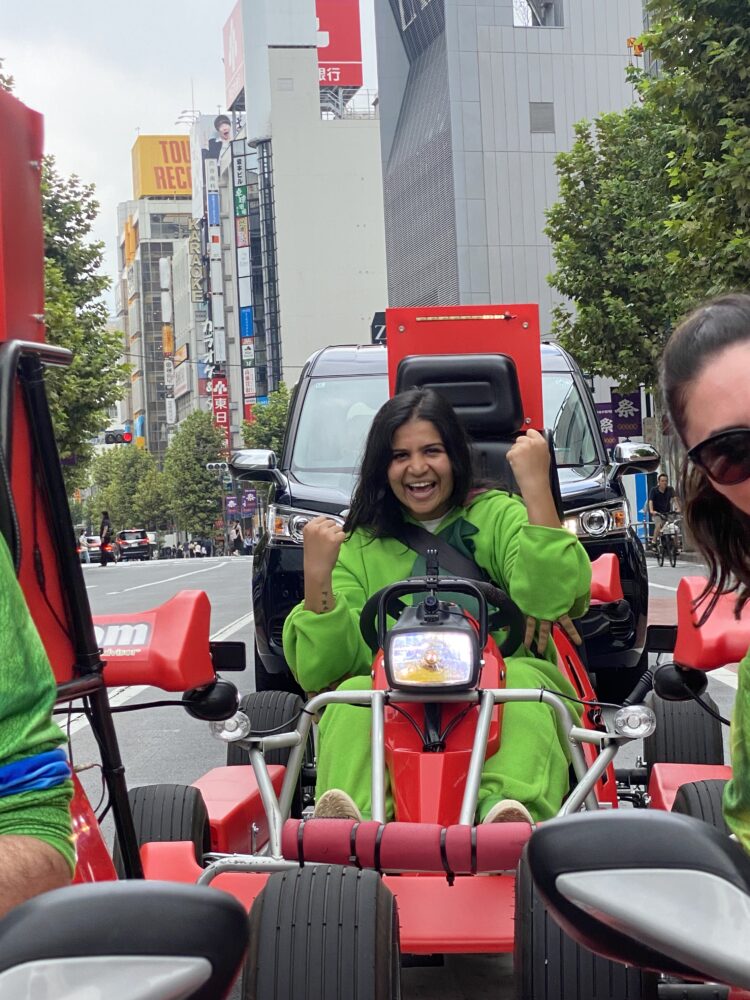
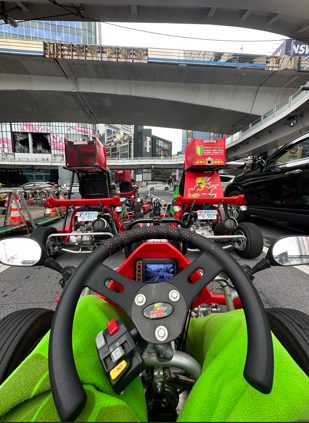
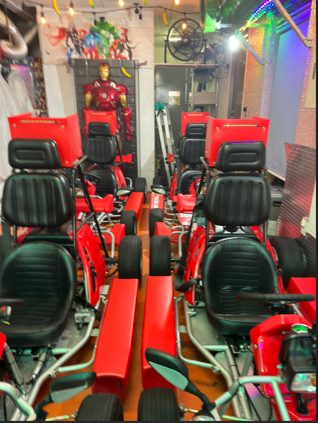
In Japan for about 45 minutes to 1 hour or maybe more than that there is a famous street kart in which you will get a guided tour of the vibrant Tokyo city. On the trip to Tokyo, there is a lot to explore so recently many have discovered one of the coolest and unique experiences in the city that has to offer: cruising through the streets of Tokyo in a Go-Kart, Mario kart, street- karting. Everything is the same so all we do in a dressed up attire as superheroes! Tokyo is renowned for its cute and quirky attractions, and this adventure definitely lived up to that reputation.
Following this fantastic 2-3 hour experience, consider embarking on a one-day excursion to Yokohama, which is conveniently just an hour’s journey away. Yokohama ranks as the second most densely populated urban area in Japan, trailing only Tokyo. Access to Yokohama is straightforward, whether you’re traveling from within Japan or internationally, as the city is merely a 25-minute train ride from Tokyo Station and a quick 22-minute commute from Haneda Airport.
Cosmo World
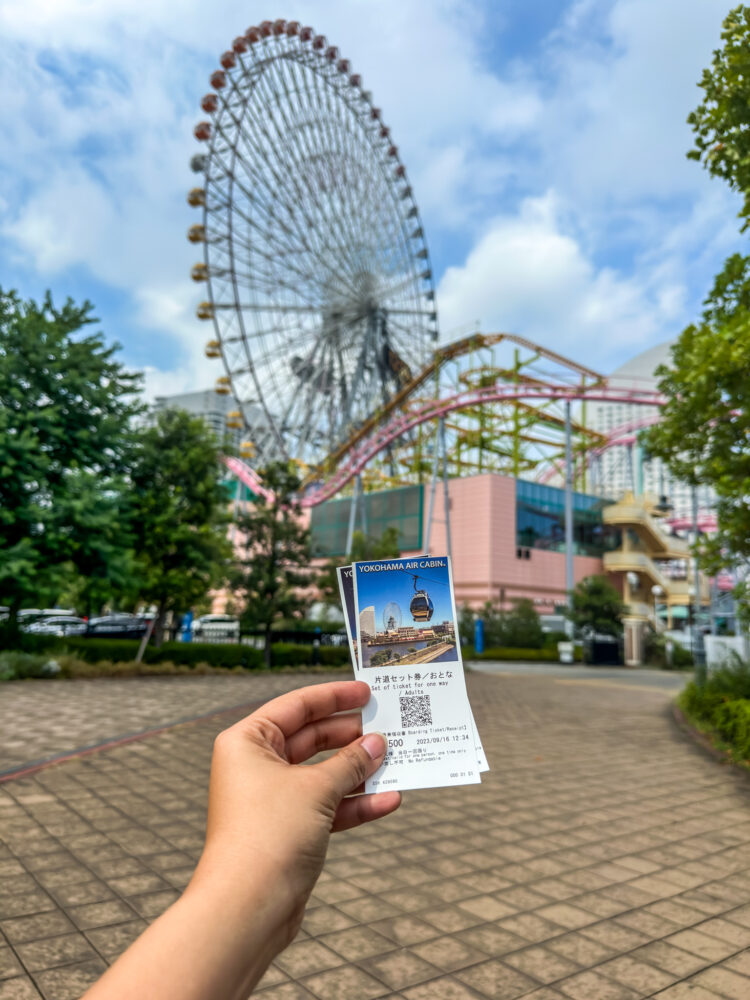
In a compact area filled with a lot many adventures and rides on a bay side of Minato Mirai district in Yokohama there is an amusement park named cosmo world. It is a perfect destination for a family outing, a day out with friends and for a romantic date. The entry to the park is usually free, so you can purchase tickets for the individual rides you are choosing on. You can book from the discount book of coupons if you are thinking of trying a lot of rides.
Shinko circle walk
Shinko circle is a pedestrian bridge where you can walk anytime of the day. This walkway is in the middle of the city and you can see the vibrant hustling of the city from morning to night.
Ferris wheel and cable car ride.

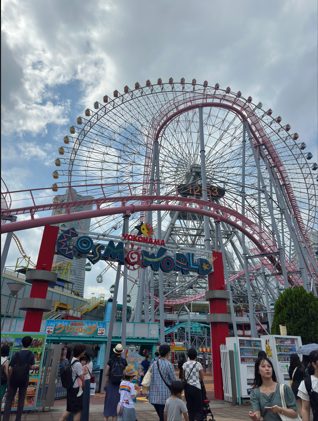
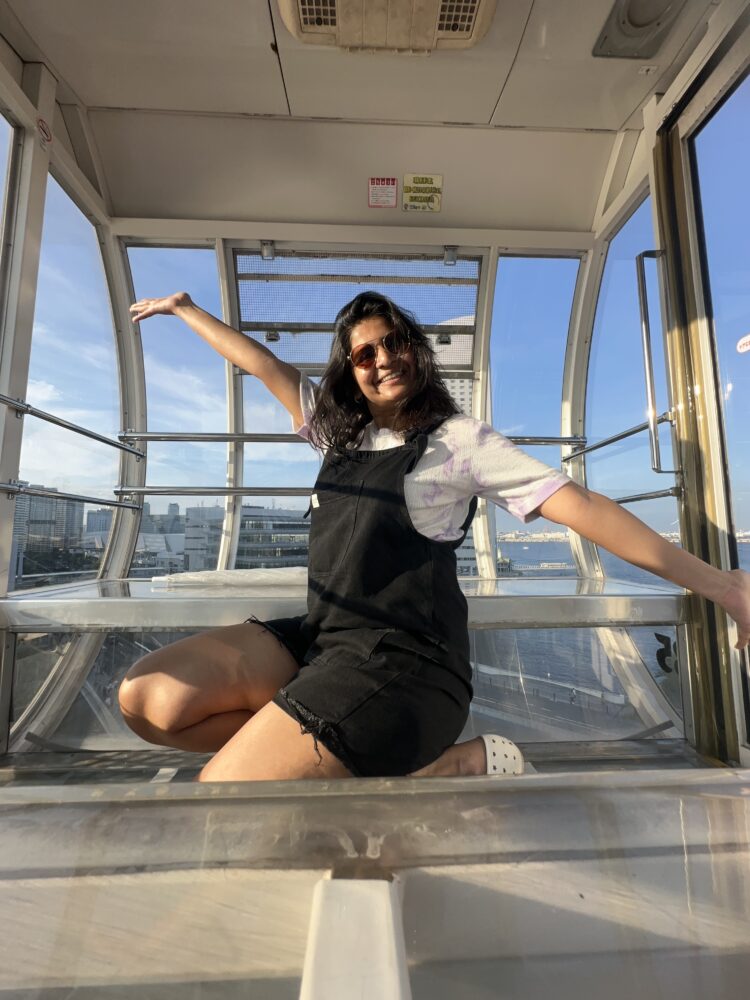
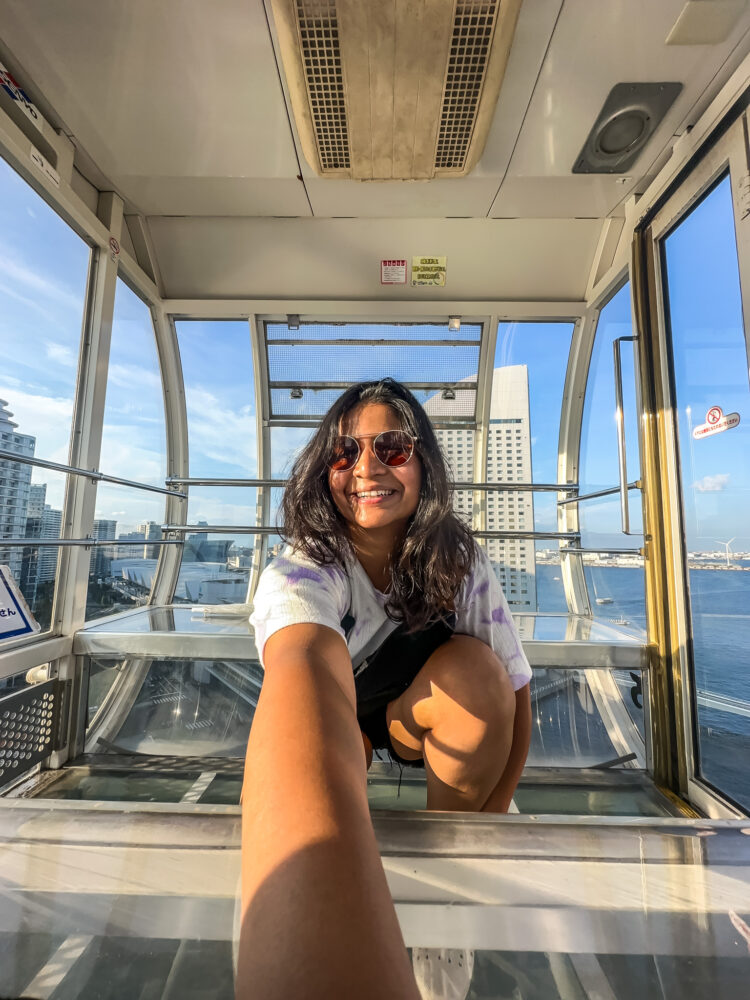
You might have seen a lot of photos of Yokohama’s known skyscrapers but in that you might have seen a Ferris wheel which can be seen in every picture near the Minato Mirai area. It is because this Ferris wheel has a diameter of 100m and has 60 gondolas holding up to 480 people. This gives a scenic few of the whole city like, You can enjoy breathtaking views from The Landmark Tower, which includes sights of three Queen’s Towers, various hotels, Yokohama Bay, and the Bay Bridge. Additionally, you can catch glimpses of Haneda Airport, the Red Brick Warehouses, Osanbashi Pier, the Marine Tower, and Yamashita Park. If you’re fortunate, you may even spot the Shinjuku skyscrapers, Mount Fuji, and the Boso Peninsula.
On April 22nd of this year, Yokohama is set to unveil the Yokohama Air Cabin, a brand-new seafront cable car system. This innovative rope way will establish a direct link between JR Sakuragicho Station and the Shinko Pier in the Minato Mirai district. While cable cars are typically associated with mountainous terrain, the Yokohama Air Cabin will be Japan’s inaugural permanent cable car system connecting urban areas across flat ground.
Cup noodle Museum
Then the next stop would be the Noodle museum. Which is the most exciting and interesting museum ever for foodies and noodle lovers. Situated in Yokohama’s Minato Mirai District, the Cup Noodles Museum is a delightful and engaging establishment that delves into the origins of instant ramen noodles through a blend of playful displays and interactive workshops. This museum was established by the Nissin Food company, whose founder introduced instant ramen noodles in 1958 as a quick and convenient meal option. Notably, it is the second museum dedicated to cup noodles in Japan, with the first being the Cup noodles Museum located in Ikeda, to the north of Osaka. The museum also offers a range of activities, with the highly sought-after My Cup noodles Factory workshop being a standout attraction. Here, visitors have the opportunity to craft their personalized cup noodles by combining different soup flavors and toppings. This experience comes at a cost of 500 yen and may reach capacity on days with high visitor turnout.
Red brick warehouse
In the late 19th century, as Japan embraced international trade, Yokohama emerged as the primary gateway for commerce heading into the Tokyo region. The iconic red brick warehouse, also known as Akarenga, was constructed during the Meiji era to support Yokohama’s port operations, functioning as a customs checkpoint to oversee the inflow of goods through the port. In contemporary times, this warehouse complex has evolved into a dynamic destination housing a variety of shops and eateries. Within its premises, the Event Plaza serves as a venue for markets and various outdoor festivities. Additionally, the warehouse includes several event halls used for concerts, exhibitions, and more. Adjacent to the Red Brick Warehouse, the Red Brick Park offers a spacious grassy expanse where one can unwind while enjoying panoramic views of the bay and passing ships
Eating at Yokohama China town
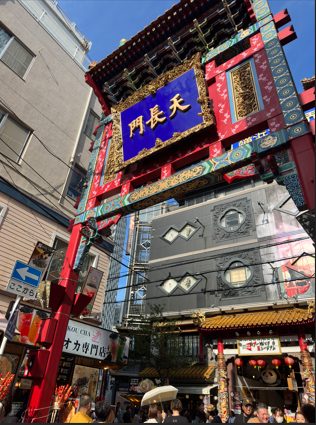
Yokohama is the second largest city in Japan and has the biggest Chinatown in whole Asia, namely Yokohama Chukagai. In this Yokohama Chinatown you can have everything you desire from Hong Kong’s cuisine to Taiwanese noodle soup. Everything is so comforting and incredible food is right around every corner. Exploring the authentic Chinese cuisine in Yokohama Chinatown is best experienced by embarking on a street food adventure, where you can find restaurants offering tabehoudai (all-you-can-eat) deals. For the most staple meal of this Chinatown try Yaki shoronpo or soup dumpling, Taiwanese specialty try Koshou Mochi a black paper bun. Also try these unique dishes like Kuro Goma An Iri Shiratama a rice dumpling filled with sesame and served in ginger soup, Panda buns filled with red bean paste and lastly, Annindofu an apricot kernel milk pudding. There are a lot more options to choose from when visiting but these are the famous dishes here.
Gundam Factory Yokohama
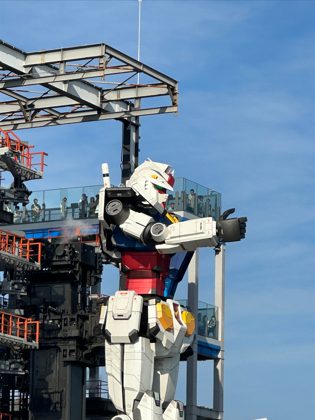
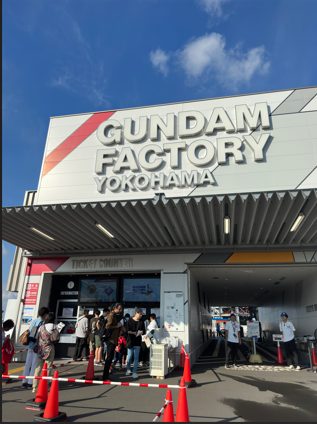
Located at Yamashita Pier with a view of Yokohama Port, “GUNDAM FACTORY YOKOHAMA” is an exhibition commemorating the 40th anniversary of the beloved TV anime “Mobile Suit Gundam.” The main highlight of this exhibition is an impressive 18-meter-tall life-size “Moving Gundam” that showcases various actions at 20-minute intervals and 45-minute intervals throughout the day. During the evening, it becomes a captivating sight as it gets beautifully illuminated, making it a prominent attraction in Yokohama.
After a wholesome day exploring Yokohama, head to Osanbashida park for a spectacular sunset view which is exactly opposite of Minato Mirai point. You can see the giant Ferris wheel and all the tall buildings with dark theme with a tinch of orangy vibes.Then return back to Tokyo and the day trip ends here.
Day 5
Day 5 comes with another amazing scenic adventure. This will be a one day trip to Hakone where you can try uniquely natural made black eggs. But for this you have to climb a rope way to the Owakundani the volcanic wonderland. This journey will offer you a lot stunning views and the most interesting part you can also witness Mount Fuiji from here on clear sky day. There is also a beautiful location of the shrine which is located on the bank of the river. There you can take a lot of beautiful pictures as the view is mesmerizing in its unique way. Well there a lot of other sight seeing like museum, black egg shop, which is possible by the pirate style boat that will cover all the locations.
Day 6 (travelling to Osaka)
Bullet train ride
Pre book your train ride from Tokyo to Osaka as it gives you a lot of facility, this Shinkansen is known as a bullet train and it covers 7 hours of journey into just 3 hours. This is a whole lot of fun adventure when visiting Japan. As this bullet trains originated here. This train ride costed me around 9000 INR, which is a bit expensive but was worth a while with high speed feels. After reaching Osaka we have 5 days to explore this city but first take some rest and let the 4 days of Tokyo soothe your mind. After this we will go around for some excellent exploration.
Shinsekai
Shinsekai, an Osaka district with a pre-war development history, experienced a period of neglect in the decades that followed. At the heart of this district stands Tsutenkaku Tower, an iconic symbol that invokes nostalgia. Shinsekai is a vibrant area located to the west of Tennoji Park, known for its abundance of affordable shops and dining establishments, with the famous Tsutenkaku Tower as its centerpiece. Today, Tsutenkaku Tower is bustling with souvenir shops and amusements, offering two observation decks on the 4th and 5th floors that provide panoramic views of the city. Admission to the top deck is priced at 500 yen.
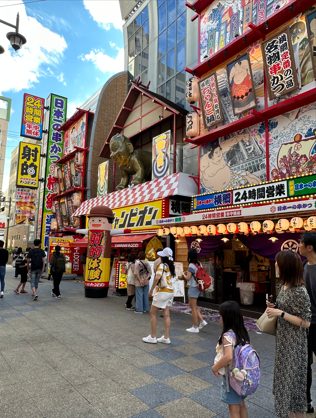
While strolling obviously you might crave some delish traditional dishes which this area happens to offer. Janjan Yokocho is a covered shopping arcade stretching from the southern end near Spa World to the central Shinsekai area. Presently, this arcade is home to a variety of affordable clothing stores, pinball parlors, souvenir shops, and a multitude of inexpensive dining options. Janjan Yokocho is especially famous for its kushikatsu eateries, where you can savor deep-fried skewers of meat and vegetables coated in breadcrumbs. Pairing this with a cold beer makes for a delightful way to immerse yourself in Shinsekai’s cultural experience.
Tennoji temple
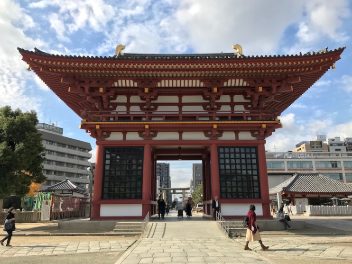
Second stop of the day in Osaka would be at Tennoji temple, it located on east of Shinsekai. Nestled in the charming eastern neighborhood of Yanaka in Tokyo’s Taito ward, Tennoji Temple is a unique blend of ancient Buddhist traditions with a contemporary touch. Tennoji Temple, situated in Tokyo’s Yanaka district, is the oldest among the numerous temples that grace this area. Presently, Tennoji Temple stands on the periphery of Yanaka Cemetery, offering picturesque views of Nippori Station. Originally, Yanaka Cemetery was part of the temple grounds. The temple now finds itself encompassed by a modern, tastefully designed wall, which encloses its elegantly landscaped premises. At the heart of this tranquil setting lies a centuries-old bronze Buddha statue, serving as the focal point of the temple’s serene surroundings
Day 7 (city tour)
Osaka Castle
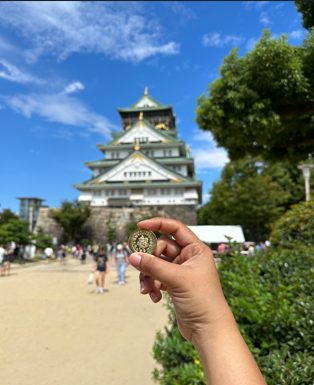
The second day in Osaka starts with visiting Osaka castle. The construction of Osaka Castle commenced in 1583, situated on the grounds once occupied by the Ishiyama Honganji Temple, which had been razed by Oda Nobunaga thirteen years prior. The interior of the castle tower has been completely modernized, including the addition of an elevator for enhanced accessibility. Within the tower, visitors can explore an educational museum dedicated to the history of the castle and Toyotomi Hideyoshi. Surrounding the castle tower are secondary citadels, gates, turrets, remarkable stone fortifications, and moats.
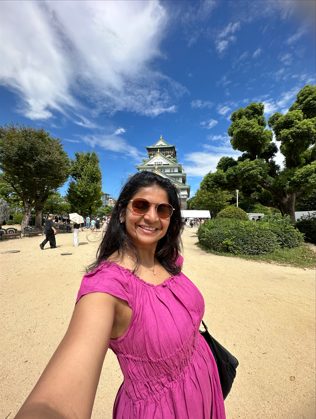
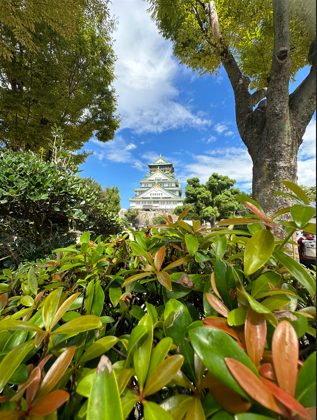
Sumiyoshi Taisha
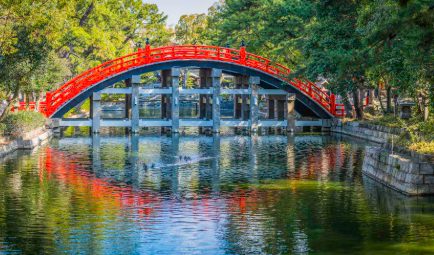
Sumiyoshi Taisha, also known as “Sumiyoshi Grand Shrine,” located in Osaka, stands as one of Japan’s ancient shrines, with its origins tracing back to the 3rd century, preceding the introduction of Buddhism. The shrine boasts a distinct architectural style called Sumiyoshi-zukuri, characterized by its independence from Asian mainland influences. This style is counted among the only three purely Japanese shrine architectural traditions, the other two being Shinmei-zukuri, found at the Ise Shrines, and Taisha-zukuri, exemplified by Izumo Taisha
Shitennoji temple
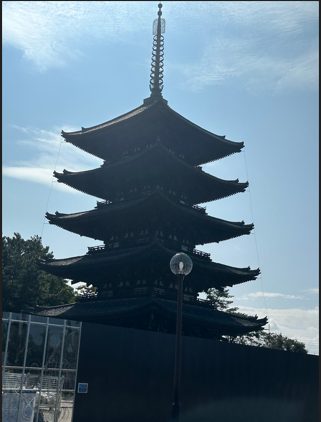
Shitennoji stands as one of Japan’s most ancient temples and holds the distinction of being the first temple ever constructed by the state. Its establishment dates back to the year 593 when it was founded by Prince Shotoku, a fervent advocate of introducing Buddhism to Japan. Despite enduring multiple fires that razed its structures over the centuries, Shitennoji has consistently undergone meticulous reconstruction efforts to faithfully preserve its original 6th-century design. Visitors can access the outer temple grounds without any entrance fees, but admission is required to enter the inner precinct, the Gokuraku-jodo Garden, and the treasure house, for which a fee is charged.
Dotonbori
Dotonbori, situated alongside its eponymous canal, is a vibrant street nestled within Osaka’s Namba district, specifically in Chuo ward. It serves as a quintessential representation of Osaka’s bustling nightlife scene. This lively area dazzles with its neon lights, tantalizing street food, nostalgic atmosphere, nightclubs, shops, and bars. A well-known phrase linked to this street is “kuidaore,” which essentially implies indulging in extravagant spending on delectable food until going financially overboard. Dotonbori stands as one of the premier tourist attractions in Osaka. As night falls, the area transforms with vibrant neon signs illuminating both the canal and the streets, creating a dazzling spectacle.
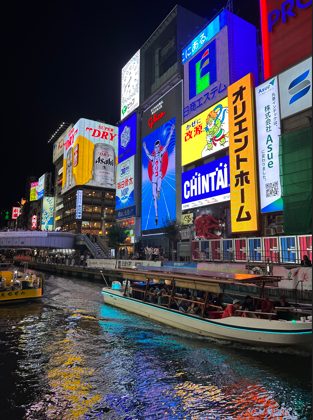
Day 8 (universal studio)
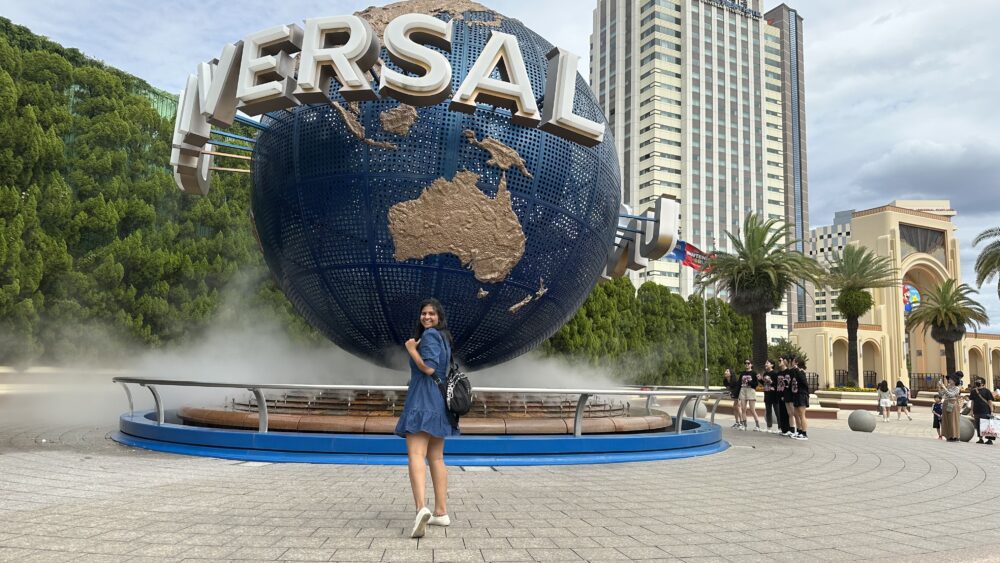
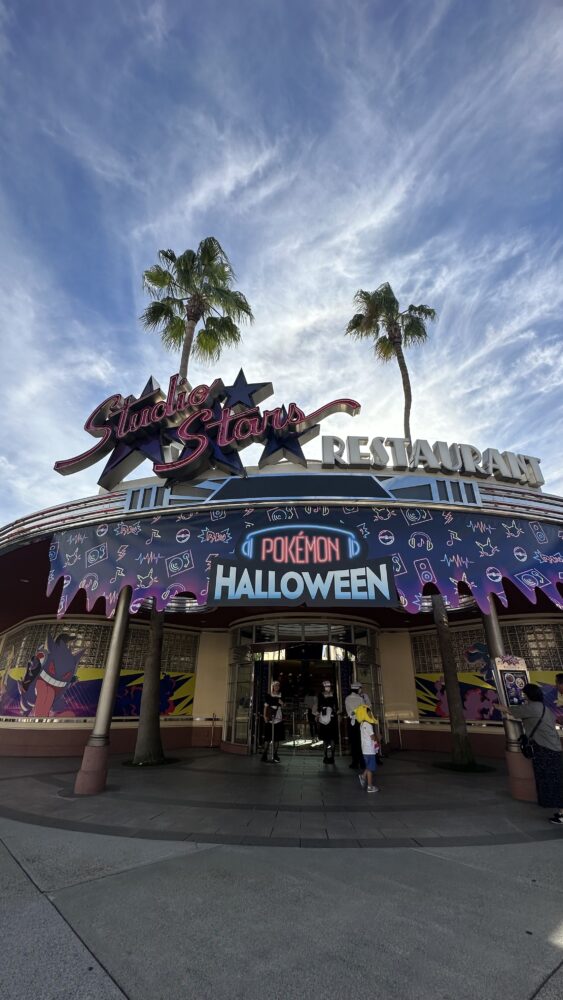
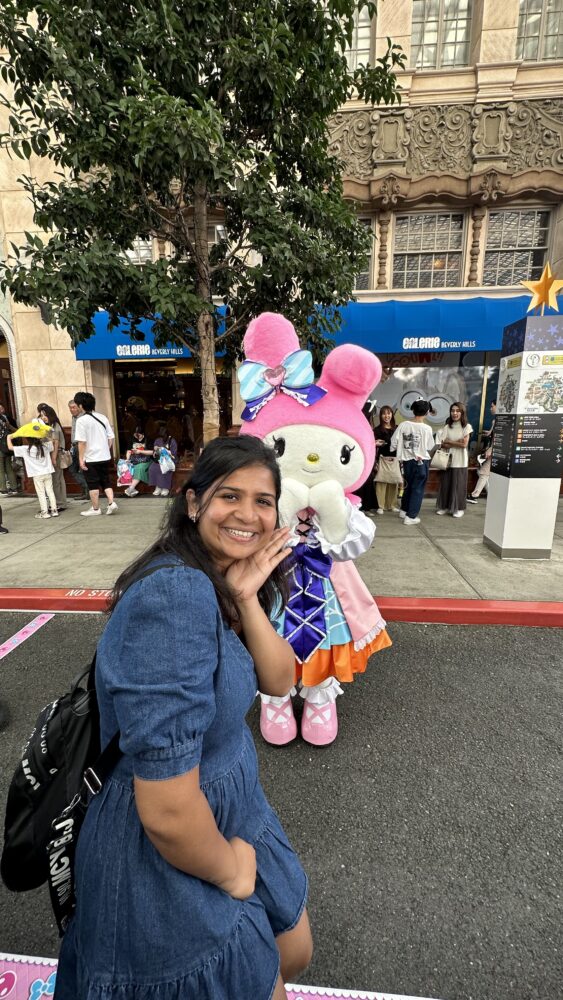
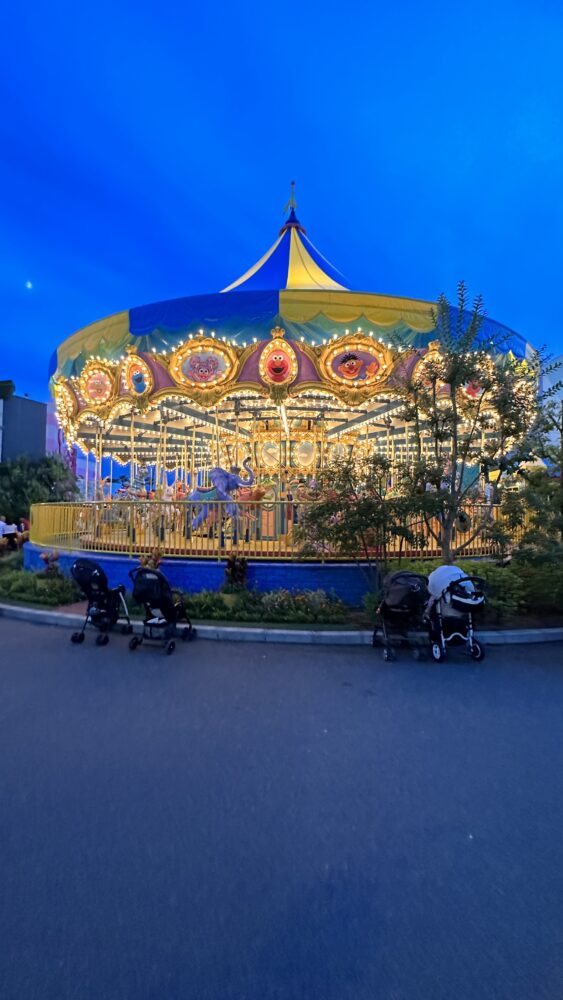
For numerous tourists in Japan, a visit to Osaka’s Universal Studios Japan is an absolute must. If you’re a fan of amusement parks or have children who are, then including Osaka’s Universal Studios Japan in your itinerary is highly recommended. The combination of Universal Studios’ enchantment and Japanese efficiency ensures it ranks among the most enjoyable amusement parks in the world. they also have a famous Nintendo world. However, it remains consistently crowded throughout the year, which underscores the importance of meticulous planning. To maximize your experience, it’s crucial to purchase tickets and Express Passes well in advance. Day 8 ends with the riding adventure.
Day 9 (Osaka)
Shinsaibashi
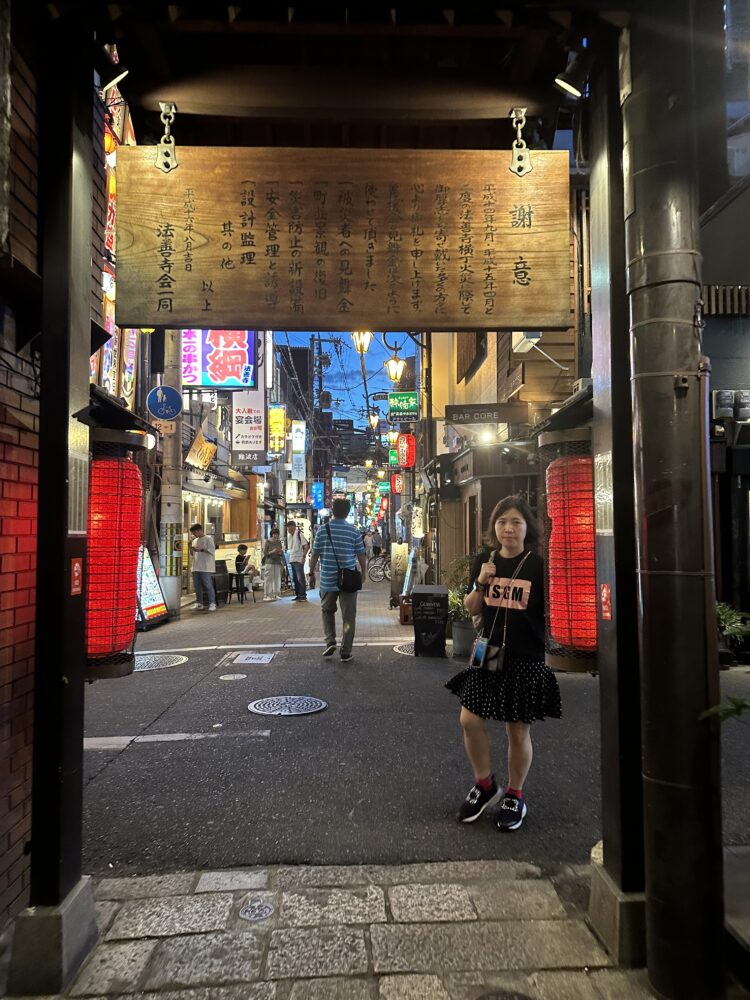
Shinsaibashi, located in Osaka, is a well-frequented shopping district with a rich historical legacy as a prominent regional hub for commerce. The district derives its name from the original Shinsaibashi Bridge, constructed by Shinsai Okada back in 1622. This bridge spanned the Nagahorigawa canal and served as a beloved local landmark until 1964 when the canal was filled in, and the bridge was dismantled. Nonetheless, the name “Shinsaibashi” continues to endure, now closely linked with high-end fashion retailers and trendy brand merchandise.
After this, savor the local dishes as there are a lot of local delicacies to try as Osaka is a hub for traditional Japanese cuisine.
10 Yen cheese coin
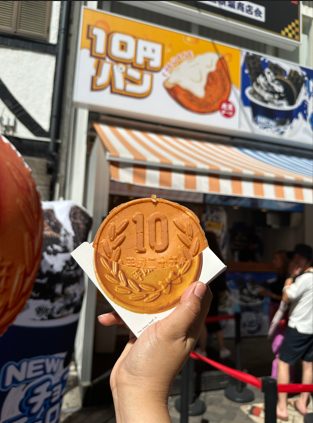
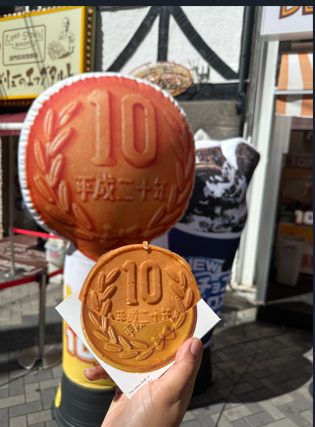
Indulge in a crispy pancake filled with an abundance of cheese, offering a delightful blend of textures. It cost around 500 Yen which is 335 Indian rupees.
Location: Dontonbori, Osaka
Takoyaki
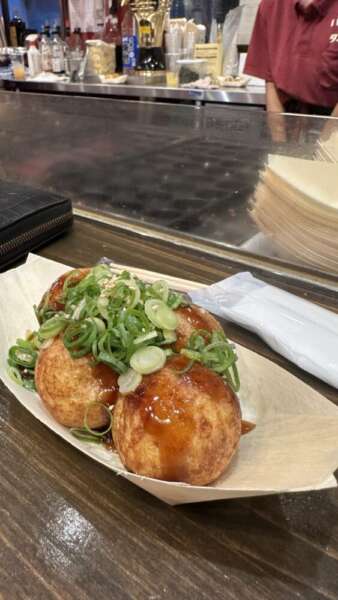 Dive into the world of Takoyaki which is crispy from outside and tender from inside, it is filled with octopus green onion and pickled ginger. It cost around 300-500 rs.
Dive into the world of Takoyaki which is crispy from outside and tender from inside, it is filled with octopus green onion and pickled ginger. It cost around 300-500 rs.
Location: Dontonbori, Osaka
Super long Guragura-bo
Capture the essence of Osaka with Guragura-bo, a tower of baby castella cakes. A sweet treat perfect for creating memories against the iconic Tsutenkaku tower as the view is very efficient. It cost around 300 Yen, which is around 200 in Indian rs.
Location: Kankando Shinsekai Janjan Yokocho Alley.
Torikara
Savor the deep-fried goodness of Torikara which is a juicy chicken with veggies paired with fried potatoes and a variety of sauces.This cost around 500-900 Indian rs.
Location: Shinsekai Janjan Yokocho Alley
Daifuku Mochi
Experience the chewy goodness of Daifuku Mochi which is filled with luscious strawberries. It is a perfect blend of softness and flavors. It cost around 350 Yen, which is 235 Indian rs.
Location: various shops in Dontonburi, Osaka.
Day 10 (day trip to Nara)
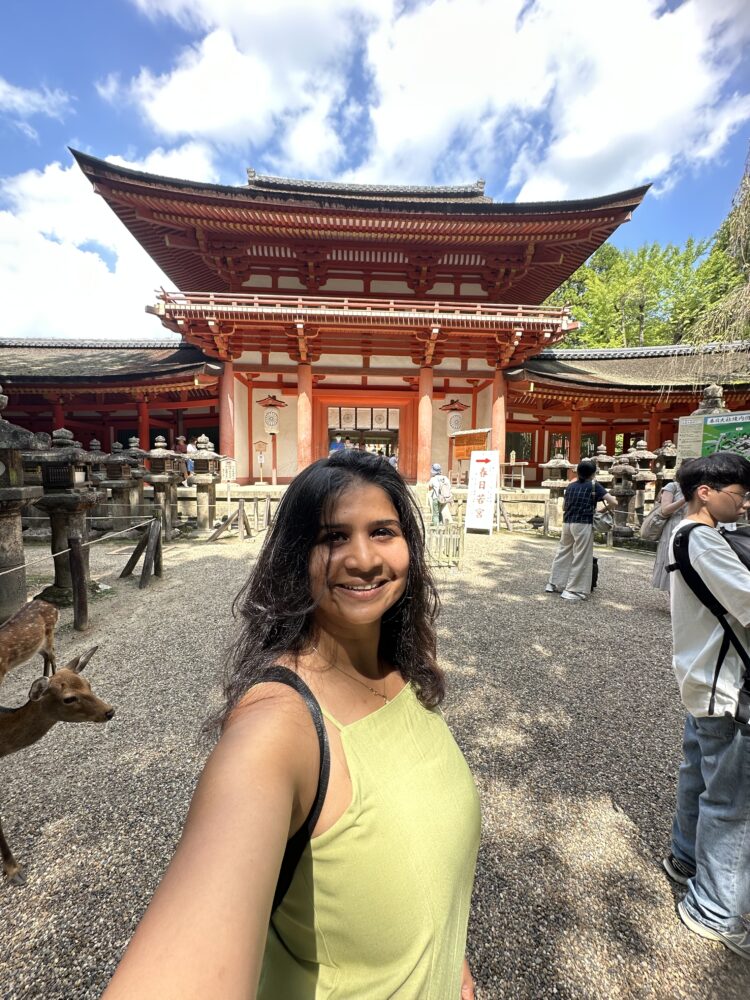
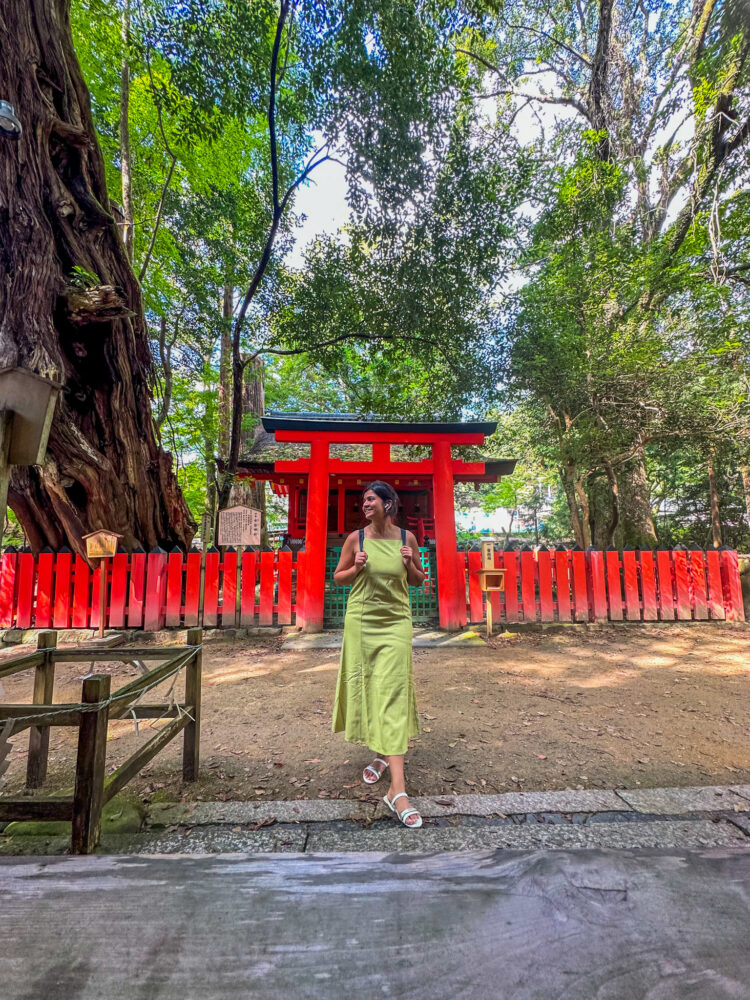
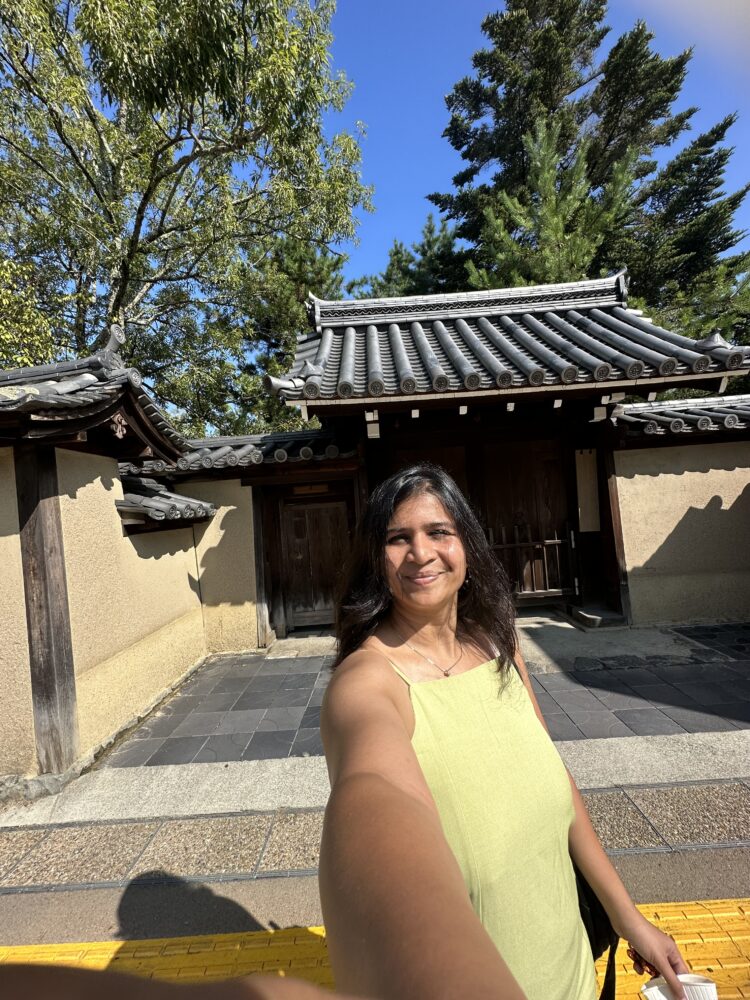
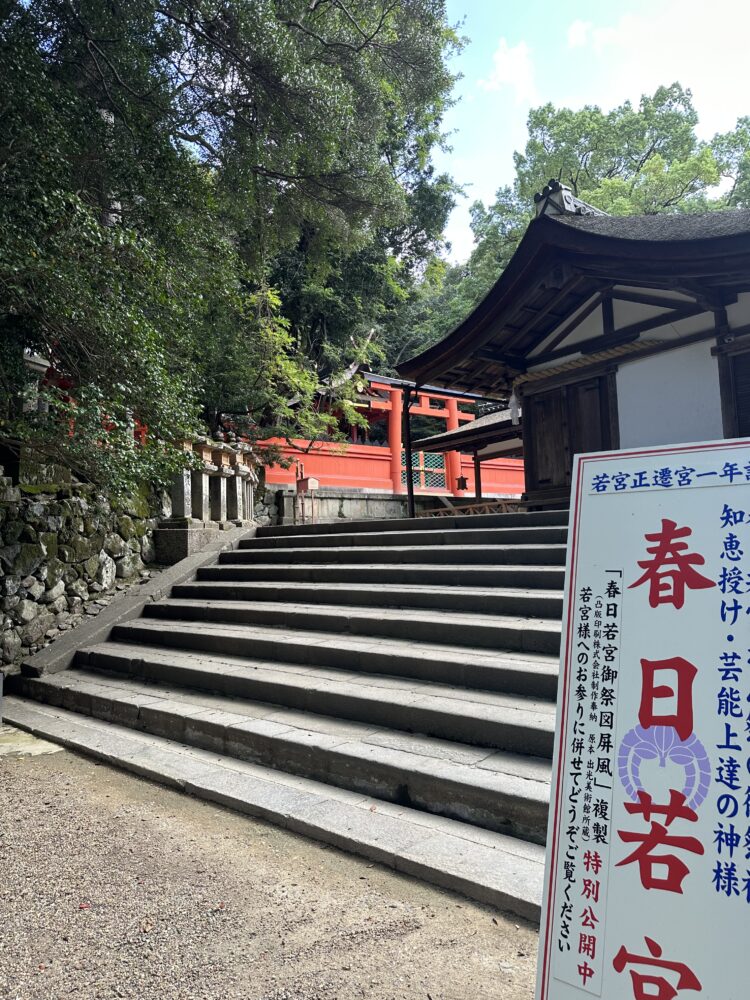
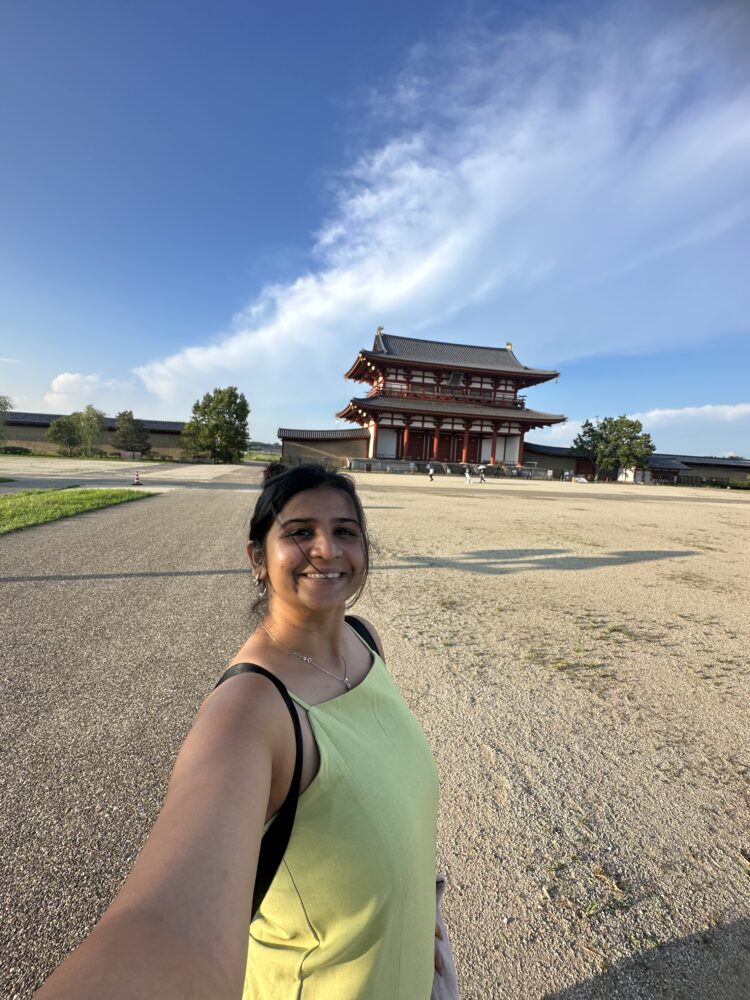
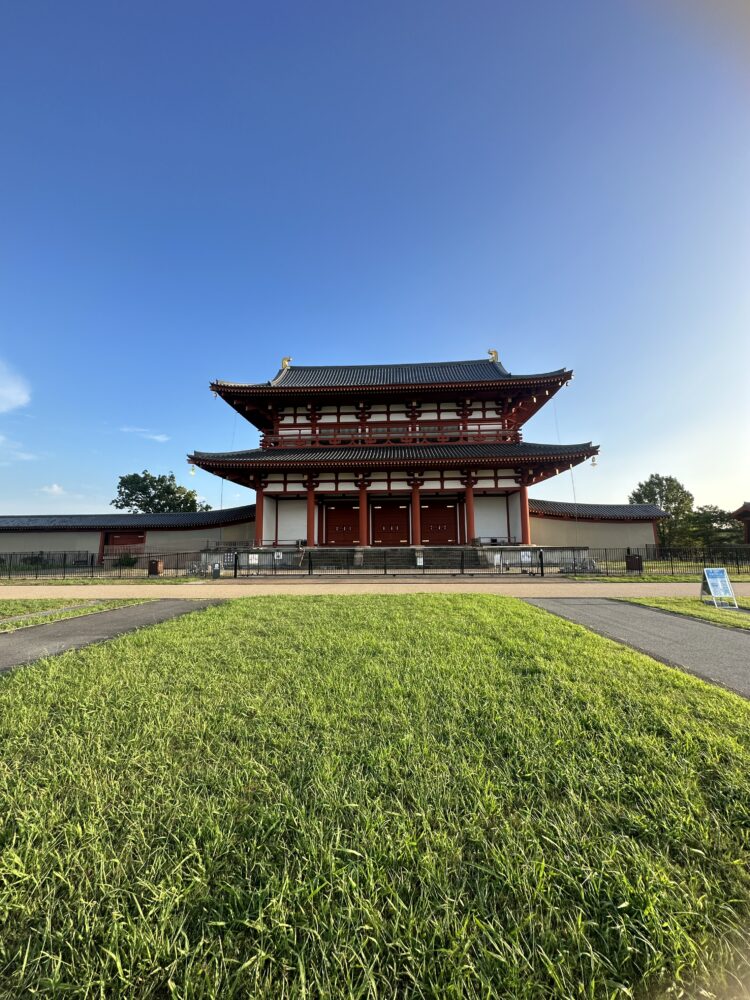
This is going to be a magical adventure to Nara where there are deer who bow to you and roam freely without any disturbance. Nara is home to 8 UNESCO heritage sites just located 40 minutes away from the Osaka city. Well besides Nara deer park deer there are a lot of touristy locations to cover like Kofukuji temple, Isuien garden, Todaji temple, Wakakusa and last location would be Kasuga Taisha temple. After exploring the locations go on the shopping spree at Higashimuki, you probably will find Japanese souvenirs. Take a lunch break at Mizuya Chaya and the must try here is their Udon. Last but not the least end the day with Nakatanidou a famous Mochi making shop. Head back to Osaka after this beautiful memorable day.
Day 11 (Osaka to Kyoto)
Osaka and Kyoto enjoy excellent train connectivity through four different rail lines. The choice of the most suitable rail line depends on your departure location in Osaka and your intended destination in Kyoto. Key stations with strong connections include Shin-Osaka, Osaka Station, and Kyoto Station. Fortunately, no matter which route you select, the travel time is short, typically ranging from 5 to 15 minutes, and the quickest routes are included in the JR Pass.
Check into your room freshen up a bit and head straight to explore north and east of Kyoto. Start with..
Imamiya Jina Shrine
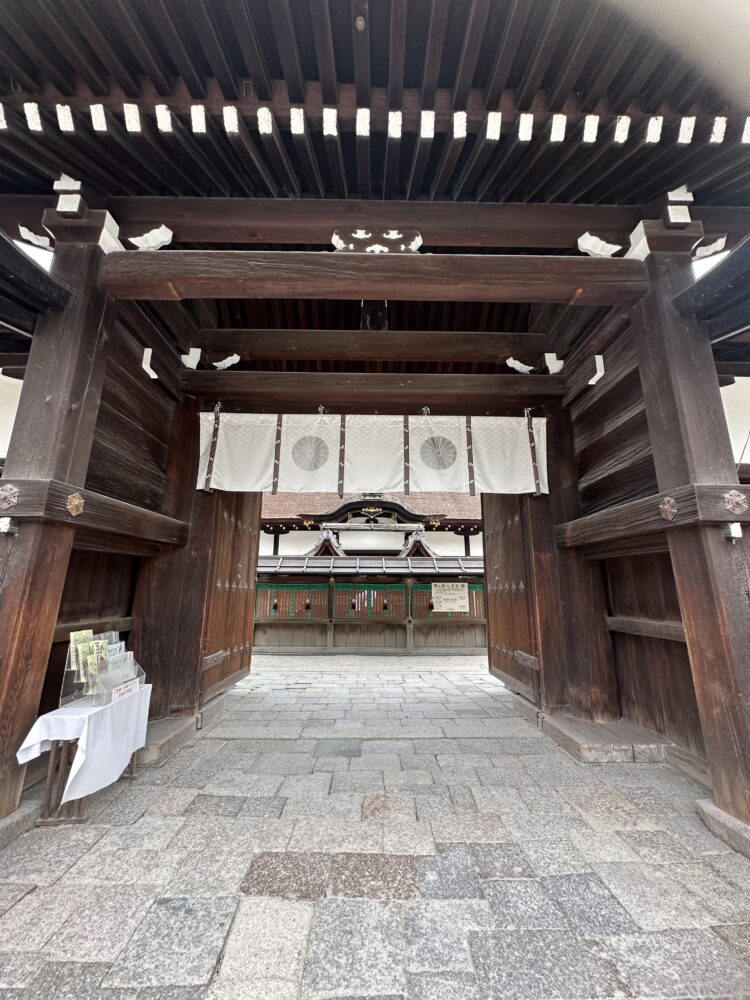
Imamiya Shrine, with its thousand-year-old history, is renowned for its association with prayers for robust health and recuperation from illnesses. Situated in the northwestern part of Kyoto, this Shinto shrine is well-known for hosting two significant festivals, the Yasurai Festival in April and the Imamiya Festival in May. It is also famous for its role in facilitating prayers for good health and for its mystical stone. Imamiya Shrine plays a deeply ingrained role in the lives of the residents residing in its vicinity.
Philosophers Path
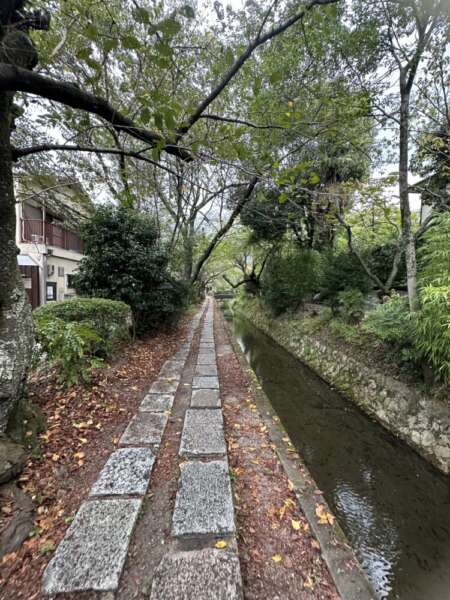 The Philosopher’s Path offers a delightful stone trail that winds through the northern section of Kyoto’s Higashiyama district. This picturesque path runs alongside a canal adorned with hundreds of cherry trees. Typically, in early April, these cherry blossoms burst into vibrant colors, making it one of the city’s most popular locations for hanami. Along the path, you’ll also find a variety of restaurants, cafes, and boutiques, along with several small temples and shrines just a short stroll away from the canal. Among these, the most notable is Honen-in, known for its striking entrance gate, which is particularly captivating during the autumn season.
The Philosopher’s Path offers a delightful stone trail that winds through the northern section of Kyoto’s Higashiyama district. This picturesque path runs alongside a canal adorned with hundreds of cherry trees. Typically, in early April, these cherry blossoms burst into vibrant colors, making it one of the city’s most popular locations for hanami. Along the path, you’ll also find a variety of restaurants, cafes, and boutiques, along with several small temples and shrines just a short stroll away from the canal. Among these, the most notable is Honen-in, known for its striking entrance gate, which is particularly captivating during the autumn season.
Heian Jingu Shrine
Heian Shrine, also known as Heian Jingū, boasts a relatively brief history, having been established a little over a century ago in 1895. The entrance to the shrine is adorned with a massive torii gate, and in its vicinity, you can find a couple of museums. The shrine’s actual premises are expansive, featuring a large open courtyard at its heart. The primary structures of the shrine partially replicate the original Imperial Palace from the Heian Period. Positioned behind these main buildings lies an appealing, paid garden featuring a diverse array of plants, ponds, and structure
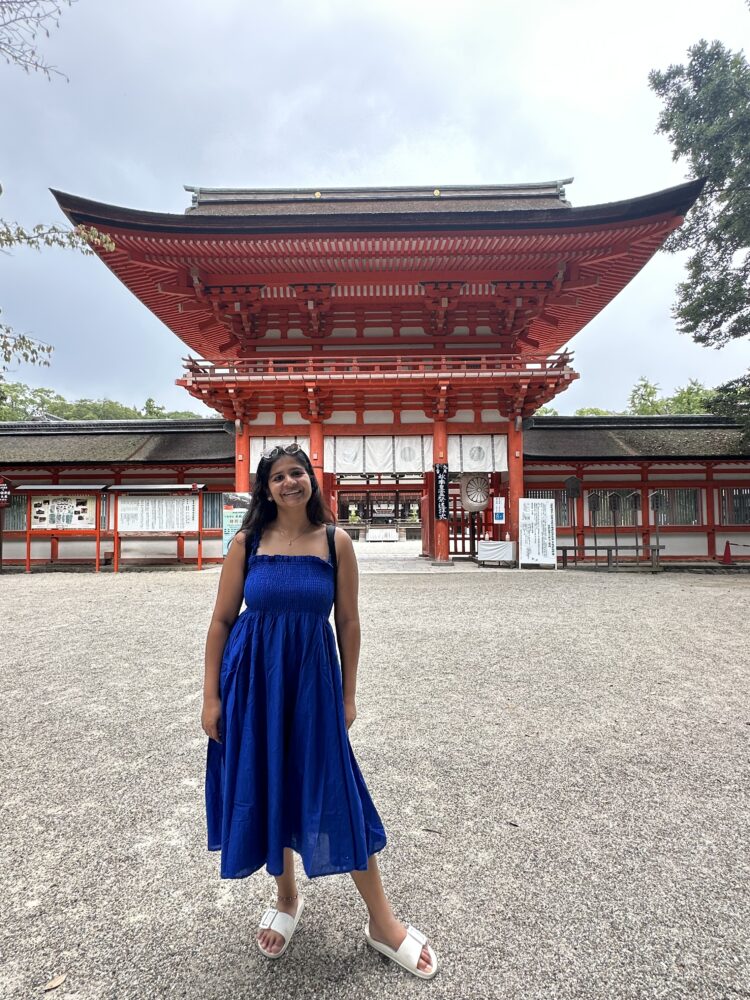
Nanzenji temple
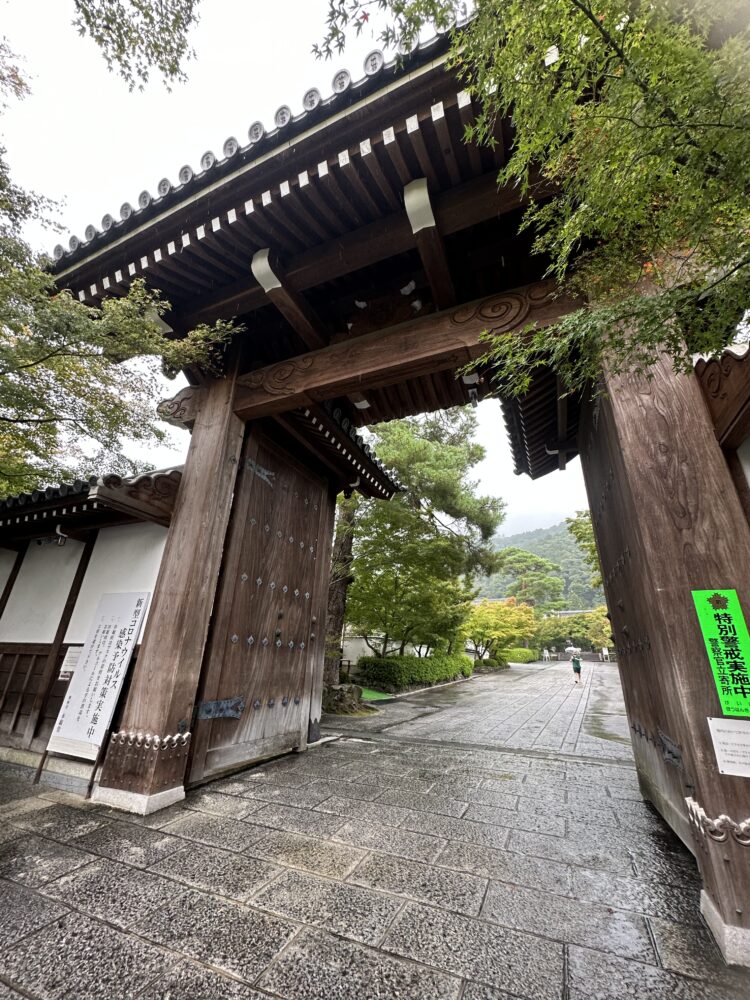
Situated at the foothills of Kyoto’s lush Higashiyama mountains, Nanzenji Temple occupies expansive grounds and stands as one of Japan’s prominent Zen temples. As the principal temple of a school within the Rinzai sect of Japanese Zen Buddhism, Nanzenji encompasses numerous sub temples, augmenting the already extensive complex of temple structures. While the central temple grounds of Nanzenji are freely accessible to the public, there are distinct charges for admission to temple buildings and sub temples.
Keage Incline
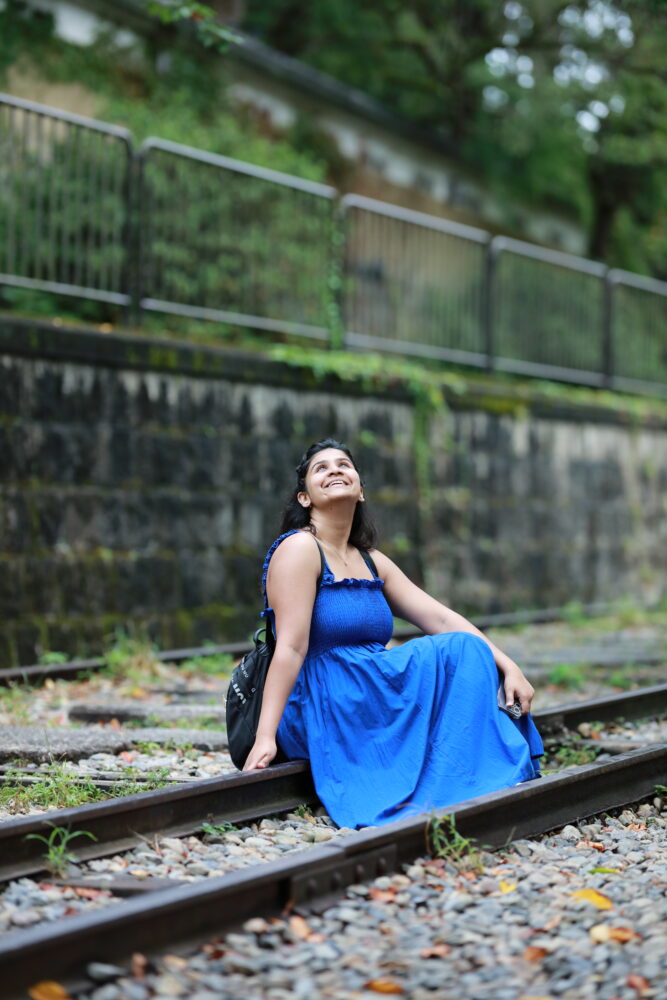
The Keage Incline is a railway incline that stretches from the Keage Boat Reservoir (upstream) to the Nanzenji Boat Reservoir (downstream). Spanning a total distance of 582 meters, this incline held the distinction of being the world’s longest at the time of its construction. Its primary function was to facilitate the transport of boats along an elevation difference of around 36 meters without requiring the offloading of cargo. The railway tracks of this incline have been preserved in their original state, allowing visitors to stroll along them. It’s a well-liked tourist attraction, particularly during the spring season when cherry blossoms adorn both sides of the railway in splendid bloom.
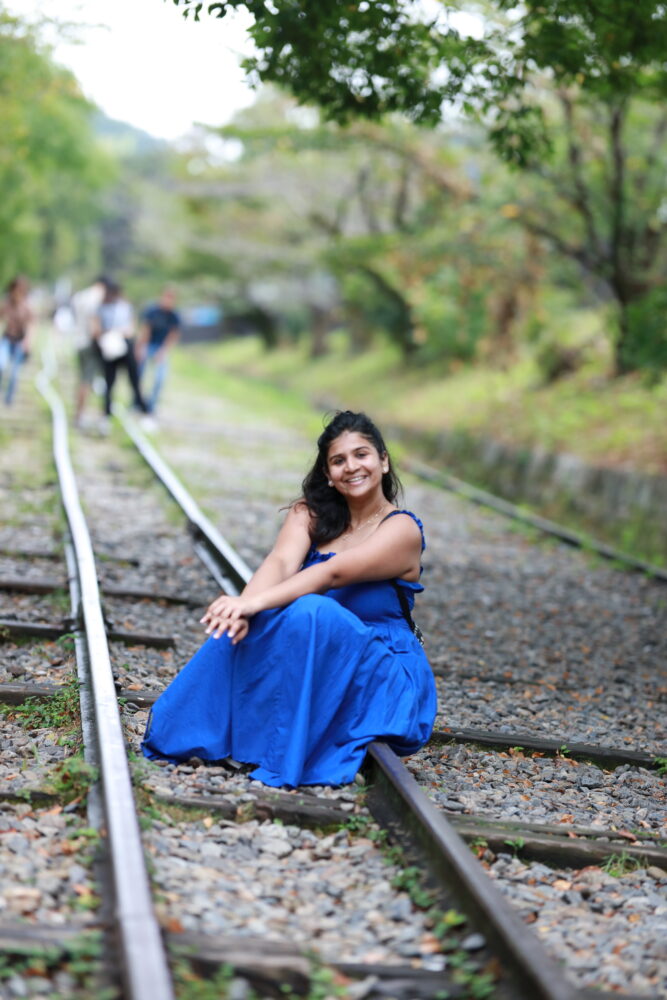
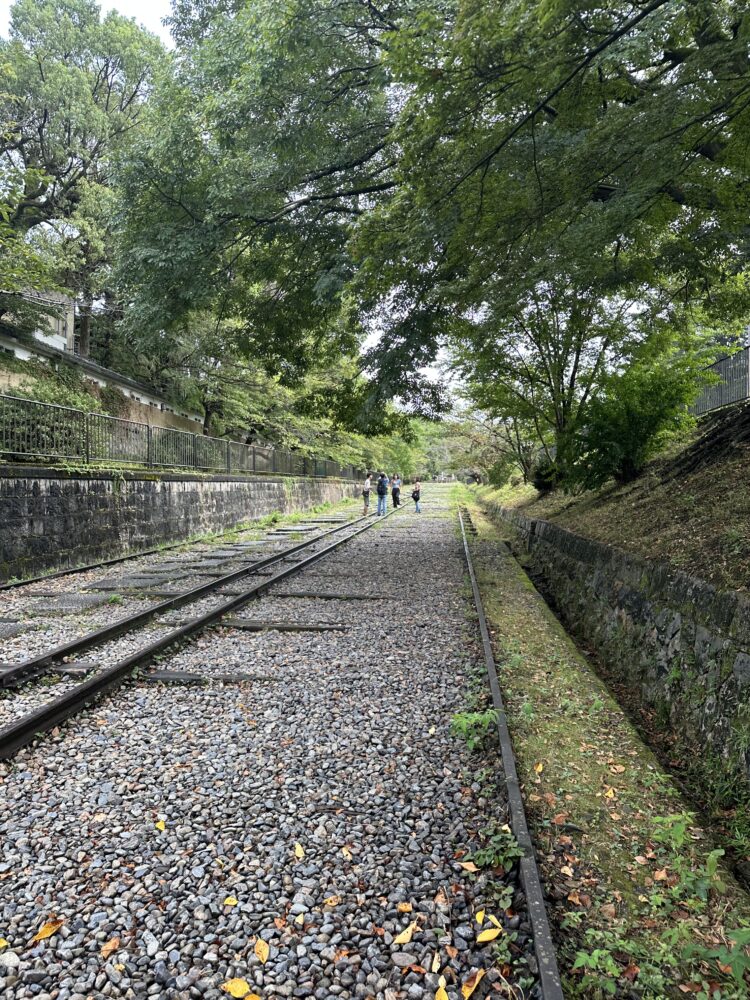
Kyoto Tower
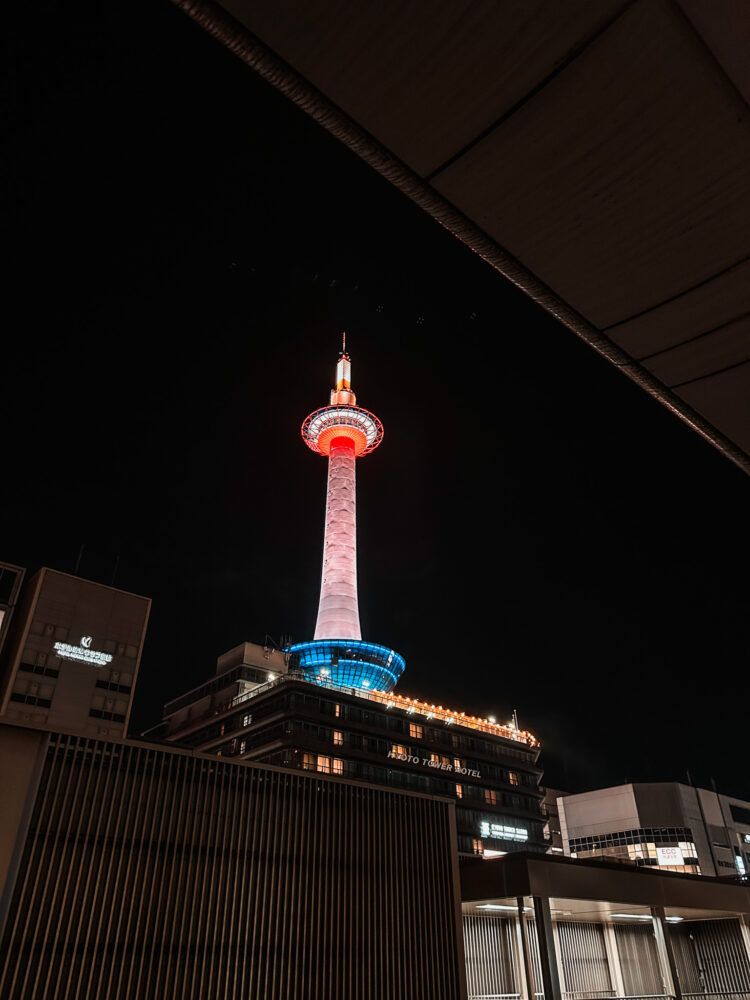
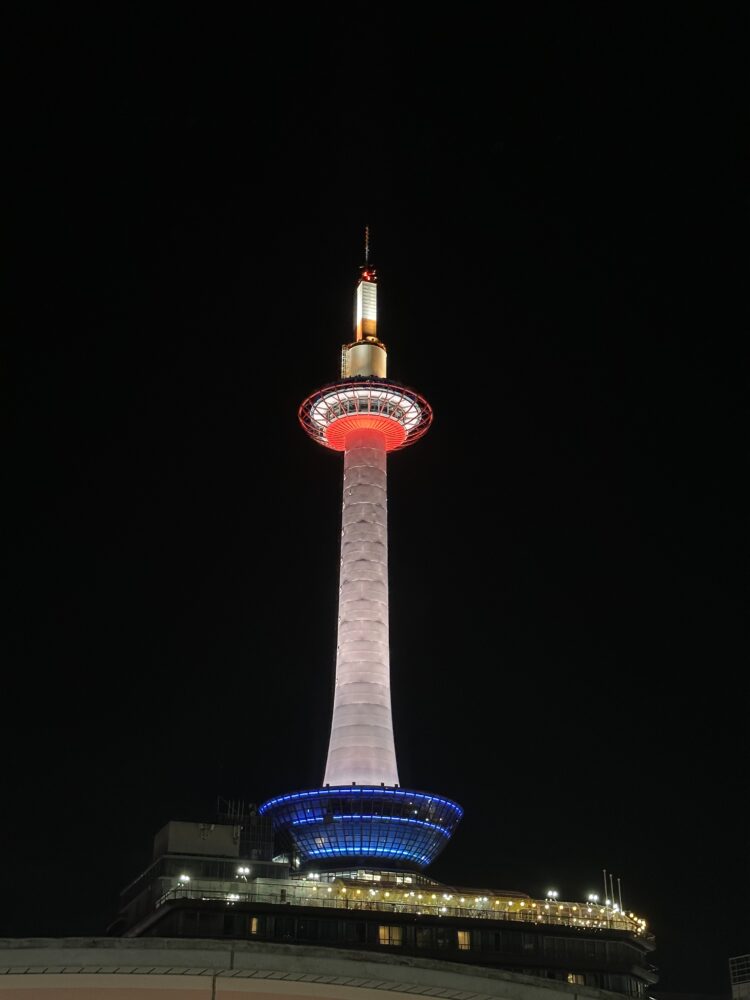
Situated directly across from Kyoto Station and rising to a height of 131 meters, Kyoto Tower holds the distinction of being Kyoto’s tallest structure, offering a unique modern landmark in a city renowned for its ancient temples and shrines. This tower was constructed in 1964, coinciding with the launch of the Shinkansen and the Tokyo Olympics. At an elevation of 100 meters above ground, there is an observation deck that provides a panoramic 360-degree vista of Kyoto, extending as far as Osaka on clear days. Kyoto Tower is perched atop a standard commercial building housing souvenir shops, restaurants, and a hotel.
Sky Garden
The sky way tunnel is a gateway to breathtaking city views. The sky garden on the 15th floor unveils a panoramic canvas of Kyoto, with the illuminated Kyoto Tower adding a magical touch to your evenings. The skyway tunnels leads you to the restaurant level on the 11th floor of the west wing. As you walk you will come across the Grand stairway which is adorned with 15000 LED’s offering mesmerizing light show in the evening. It is not just a show, there are dance of lights that leaves you spell bounded.
Day 12 (south and far west of Kyoto)
Arashiyama
A visit to the Arashiyama Bamboo Forest is unquestionably a must-do experience. Populated by numerous bamboo trees that rise gracefully and erect, this location exudes an entirely distinct atmosphere. These majestic, verdant bamboo stalks form a natural canopy, casting cooling shadows and producing gentle, rustling melodies when swayed by the breeze. There are a lot of other things to do you can spend half of the day here by strolling around katsura river , exploring mesuems, Okochi sanso garden and a lot more temples and ponds. Also have a lunch at the local cafe named as miffy bakery, there bunny shaped sandwiches are to die for.
Fushimi Inari
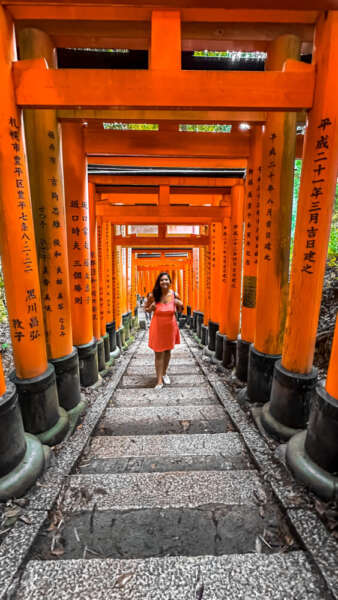 After spending half a day in Arashiyama, head to Fushimi Inari, holds great significance as a Shinto shrine located in the southern region of Kyoto. It is renowned for its extensive assembly of vermilion torii gates, which line the pathways behind its central structures. These paths wind their way into the serene forested expanse of Mount Inari, a sacred mountain with an elevation of 233 meters that is an integral part of the shrine’s grounds. Fushimi Inari Shrine holds a preeminent position among thousands of shrines devoted to Inari, the Shinto deity associated with rice.
After spending half a day in Arashiyama, head to Fushimi Inari, holds great significance as a Shinto shrine located in the southern region of Kyoto. It is renowned for its extensive assembly of vermilion torii gates, which line the pathways behind its central structures. These paths wind their way into the serene forested expanse of Mount Inari, a sacred mountain with an elevation of 233 meters that is an integral part of the shrine’s grounds. Fushimi Inari Shrine holds a preeminent position among thousands of shrines devoted to Inari, the Shinto deity associated with rice.
Nishiki market
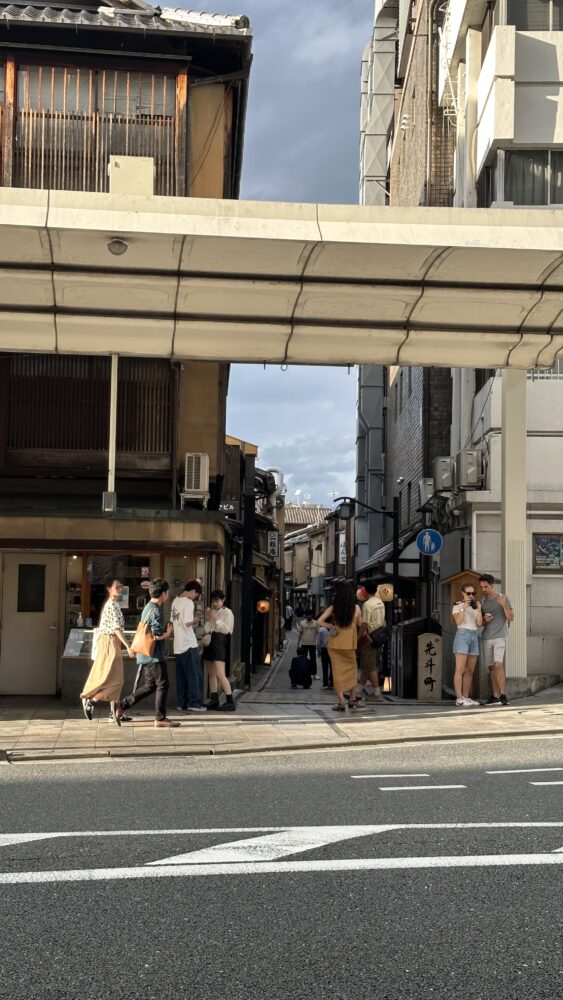
Nishiki Market is a slender, five-block-long thoroughfare brimming with over a hundred shops and eateries. Recognized as “Kyoto’s Kitchen,” this bustling marketplace is dedicated to everything culinary, featuring an array of offerings including fresh seafood, fruits and vegetables, kitchenware, and knives. It serves as an excellent location to discover seasonal delicacies and Kyoto’s distinctive specialties, such as traditional Japanese sweets, pickled items, dried seafood, and sushi.
Local delicacies
Kyoto is renowned for its signature cuisine: Kaiseki. These multi-course meals include sashimi, grilled, fried, and simmered dishes, soup, rice, and dessert, each served separately. The cuisine emphasizes seasonal ingredients and meticulous food presentation, even down to the choice of serving vessels.
Nishin soba is a dish featuring sweetly simmered herring served on a bed of hot soba noodles. It gained popularity in Kyoto due to the excellent preservation qualities of herring.
Kyoto is also known for its beloved sweet treat, kuzukiri. Kuzukiri is crafted from kudzu root powder, which is dissolved in water, molded, and then solidified before being finely sliced into noodle-like strands.
There are a lot more and feel free to explore more of it.
Day 13 (last day in Kyoto)
Kimono Rental
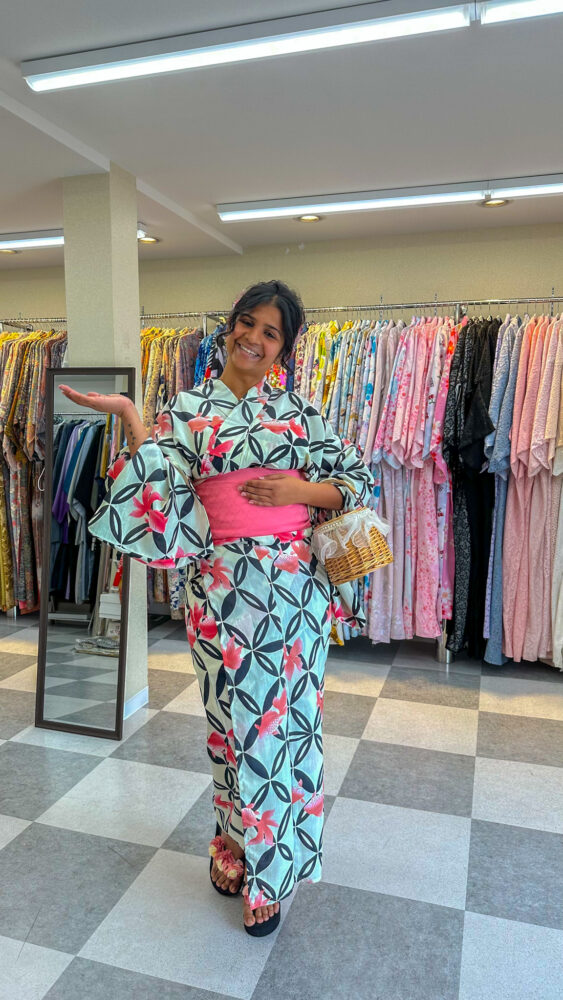

From Ookini Kimono you can rent stunning kimono starting from just 3000 yen and that includes a beautiful hairstyle at additional1000 yen. With a range of options featuring various patterns and colors, you can elevate your experience with premium choices priced between 4000-5000 yen. The shops opens at 8 in the morning and closes around 6 in the evening so return all the rentals around 5-5:30 which gives plenty of time spend a day in these kimono.
Ninenzaka
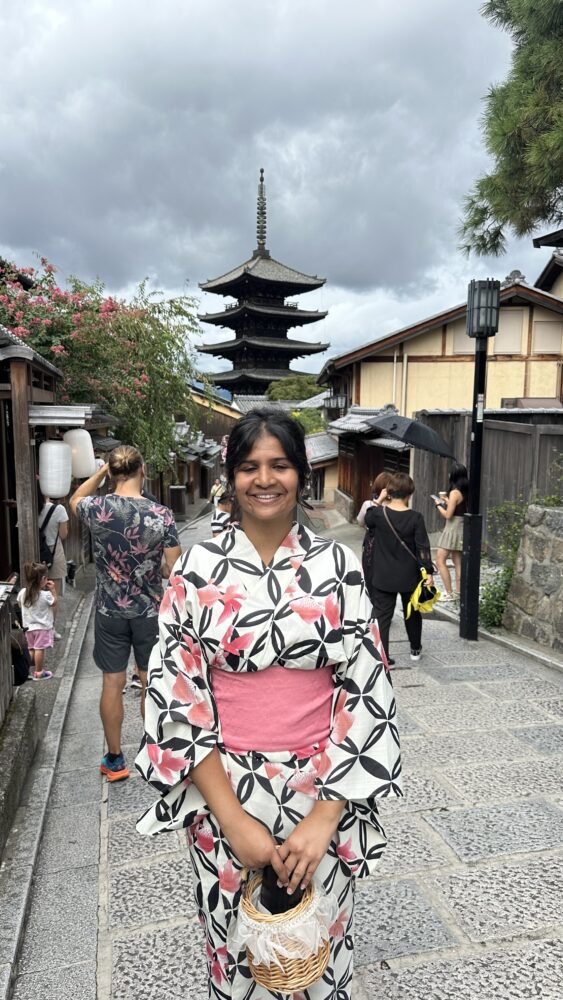
Ninenzaka is adorned with an array of establishments, encompassing souvenir shops, vendors offering diverse Japanese goods, confectioneries, and dining venues. Interestingly, the neighborhood also has historical significance, as the renowned painter and poet of the Taisho era, Yumeji Takehisa, resided here for approximately two years, beginning in 1917. A commemorative stone monument marks the location of his former residence.
Heritage Starbucks in Kyoto
This Starbucks coffee in Kyoto Ninenzaka Yasaka Chaya, Japan is a fusion of global coffee vibes and local history that opened its doors in 2017. Imagine a traditional Japanese machiya, a wooden house transformed into a coffee house. Every corner of this shop whispers Kyoto’s culture.
Sannenzaka
Spanning approximately 100 meters, Sannenzaka is slightly steeper in comparison to Ninenzaka. When exploring this charming district, you’ll find an abundance of restaurants, making it an ideal destination for a visit during lunchtime. To access Sannenzaka and the traditional buildings housing sweets and craft shops, simply ascend the stairs located at the southern end of Ninenzaka within Kyoto’s historic old town. Sannen-zaka Marun is a delightful place to discover visually appealing sweets that truly embody the essence of Kyoto and make ideal souvenirs.
Gion
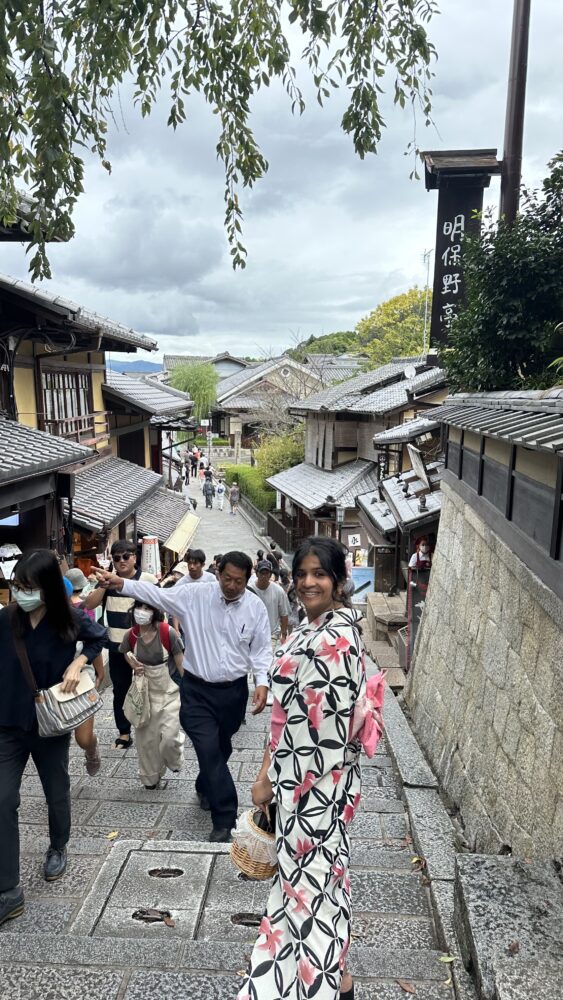
Gion stands as Kyoto’s most renowned geisha enclave, situated along Shijo Avenue, spanning from Yasaka Shrine in the east to the Kamo River in the west. This district is teeming with establishments, encompassing shops, eateries, and ochaya (teahouses), where geiko (Kyoto’s term for geisha) and maiko (geiko apprentices) provide entertainment. Gion captivates tourists with its remarkable cluster of traditional wooden machiya merchant houses.
Kiyomizudera
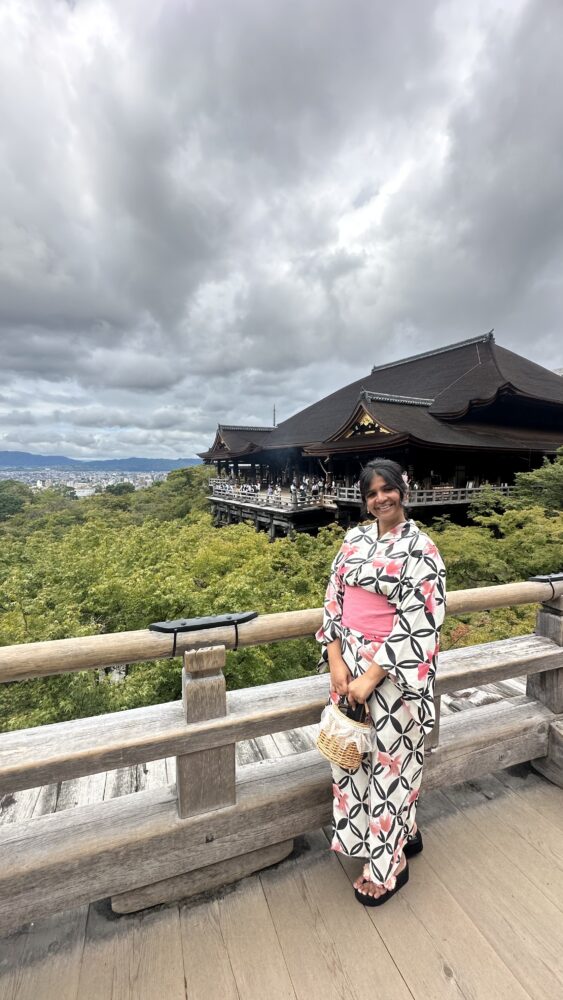
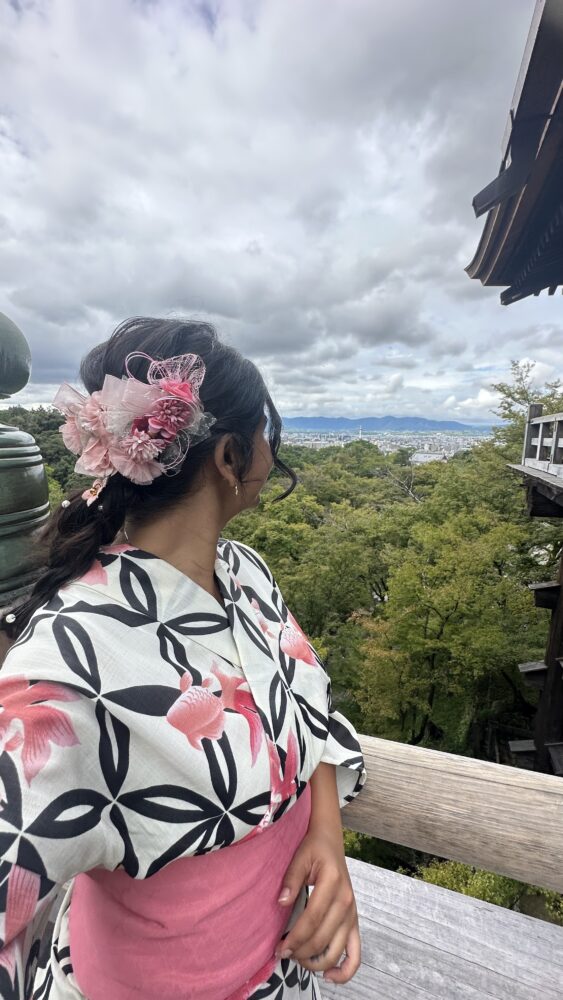
Kiyomizudera stands as one of Japan’s most revered temples, with its origins dating back to 780 when it was established on the grounds of the Ottawa Waterfall in the lush hills east of Kyoto. The temple takes its name from the pristine water of this waterfall. One of Japan’s oldest Buddhist schools, Kiyomizudera later formed its own Kita Hosso sect in 1965. In recognition of its cultural significance, the temple earned a place on the UNESCO World Heritage Sites list in 1994.
Well the trip came to an end, spend the last night in Japan and then catch a flight the next day to your hometown. Make sure to take as many memories with you. Well all this can be done in 2 weeks of time but if you feel like going slow and want to give personal time to your exploration with peace then I’ll be sharing my itinerary with all the off beat and famous places covered in just 2 weeks. Though Hiroshima, Beppu and other few places are not covered in this series but hoping to do it soon.

